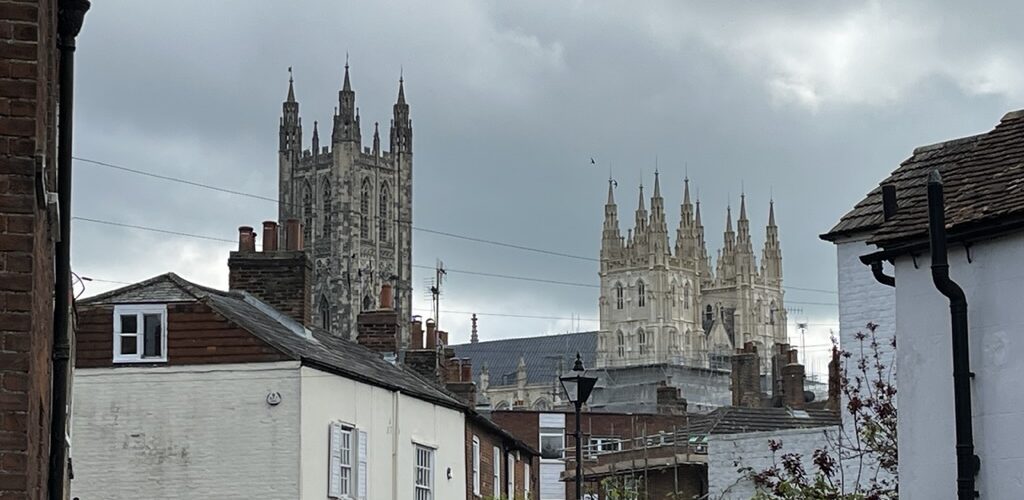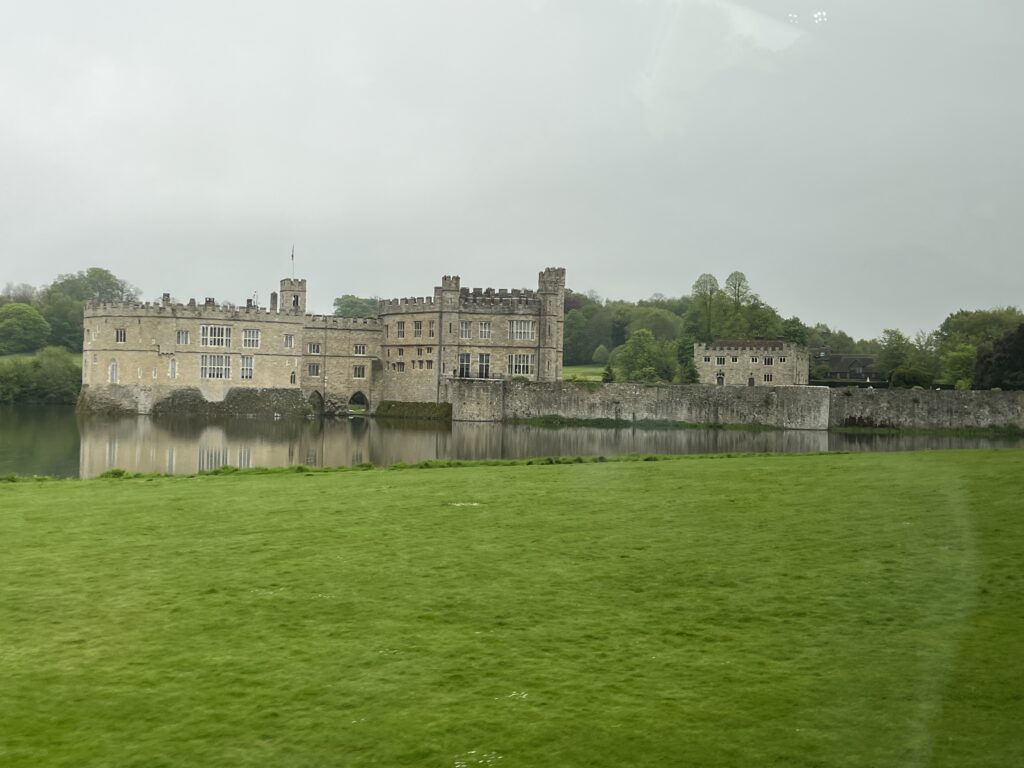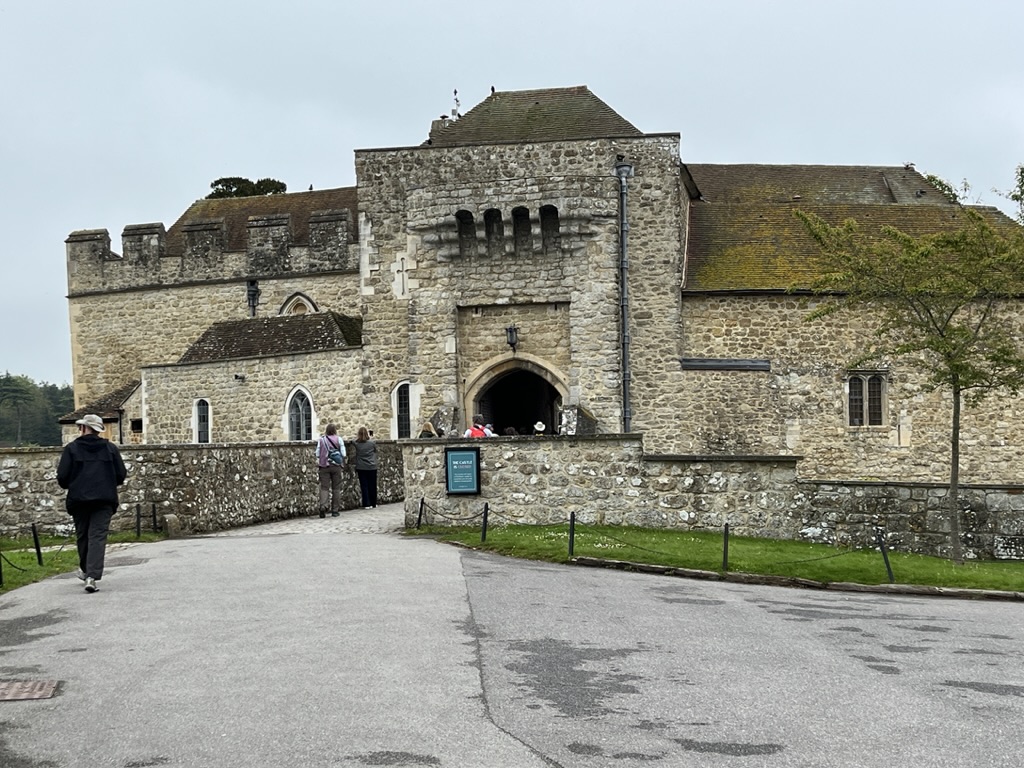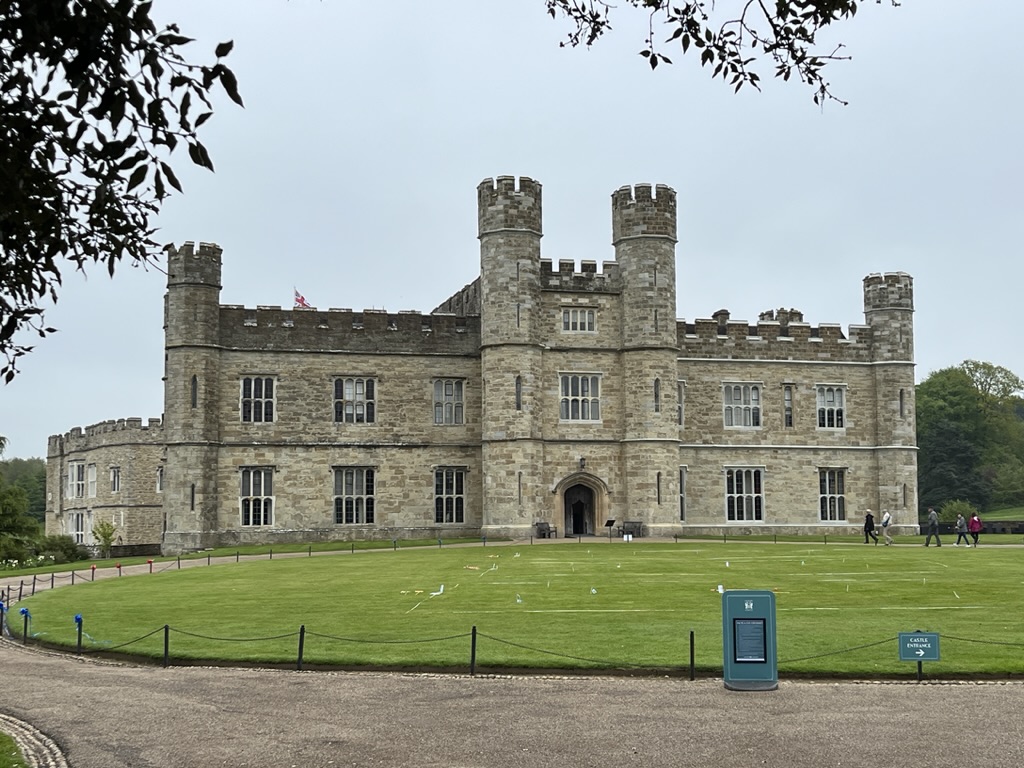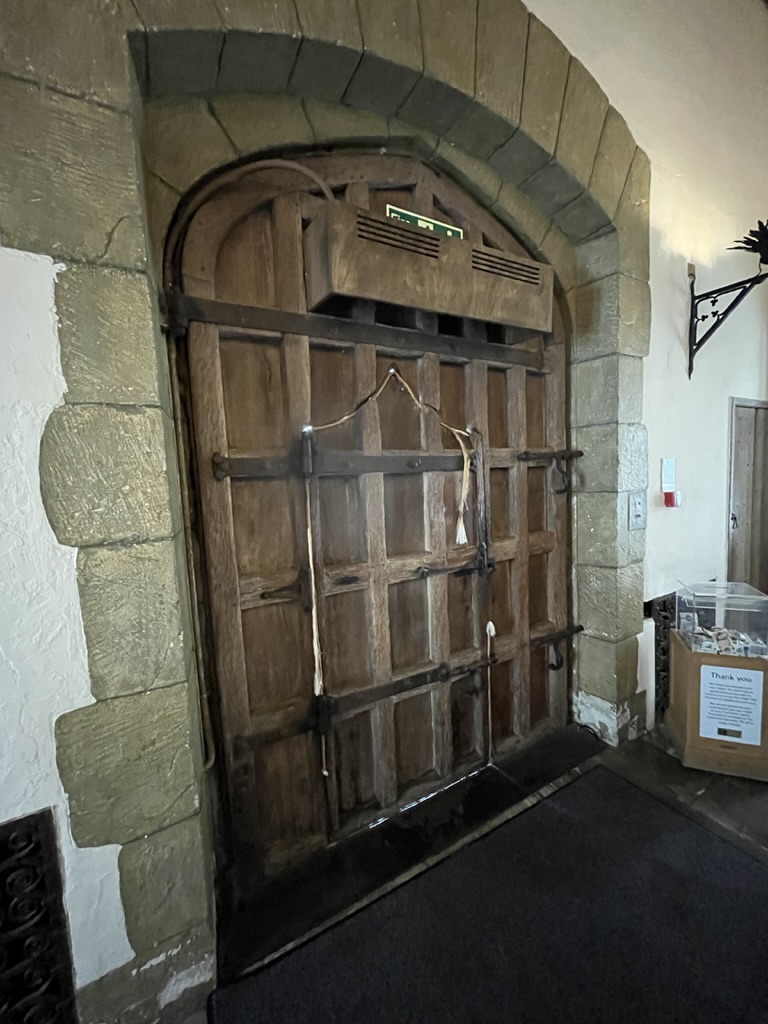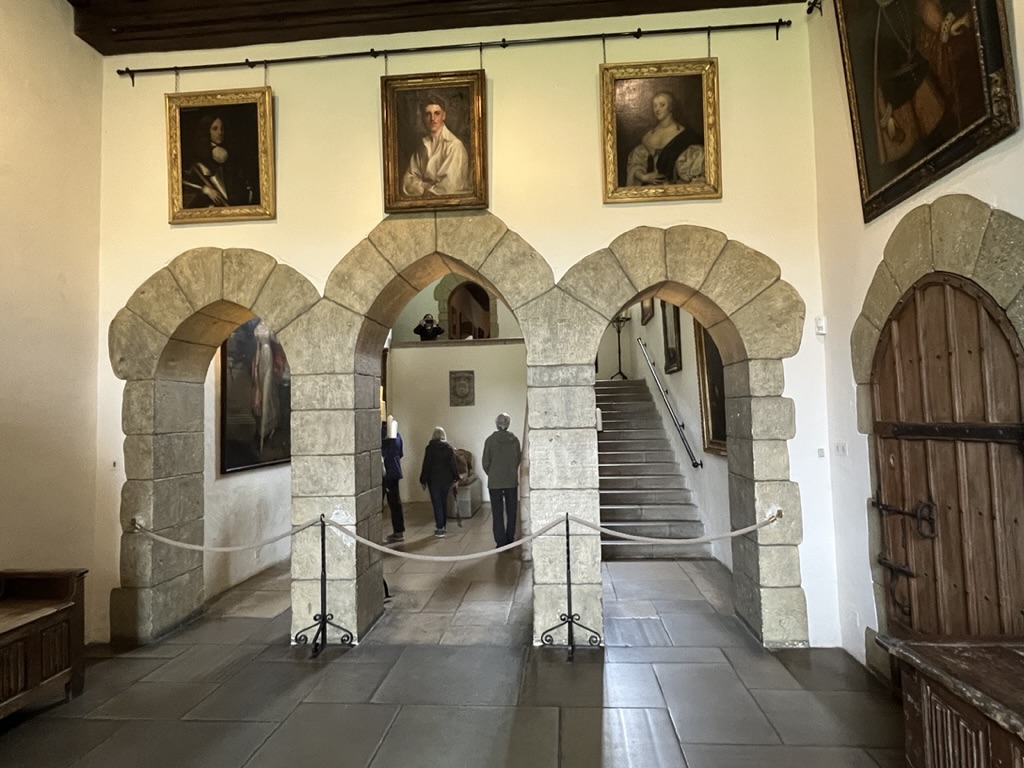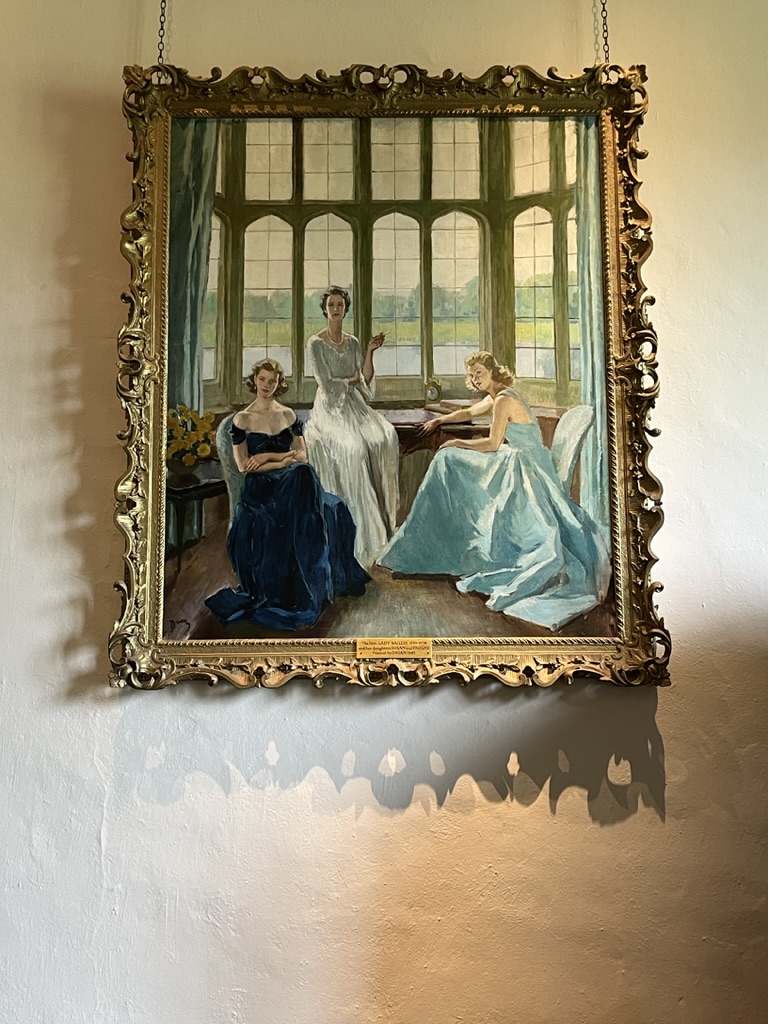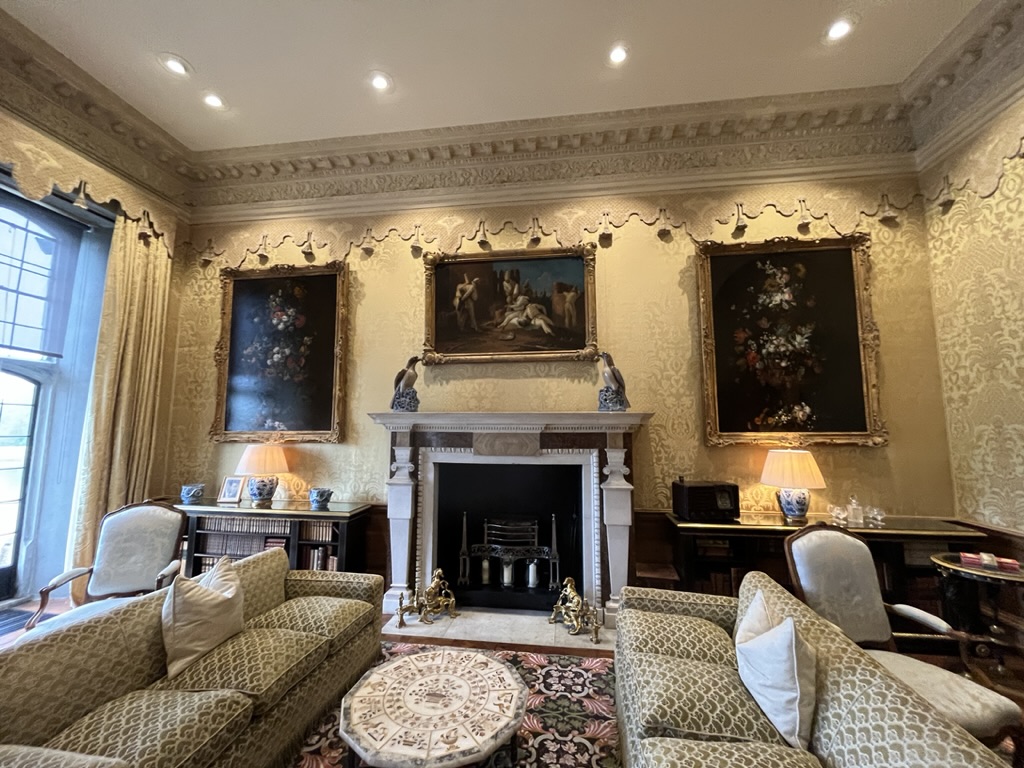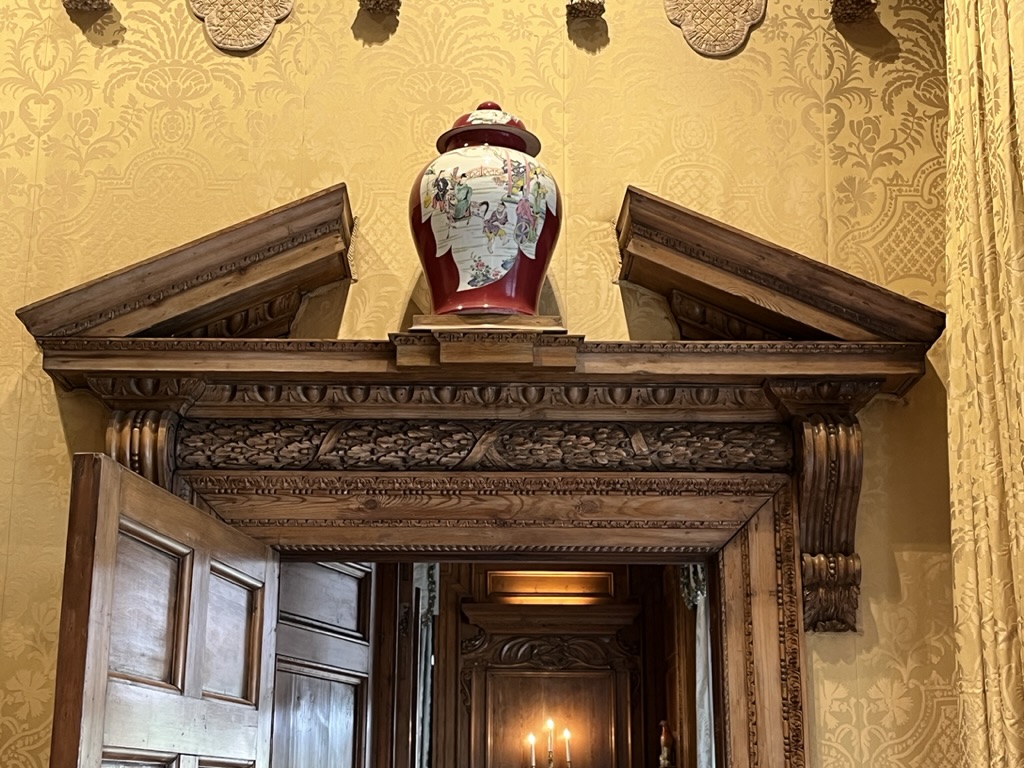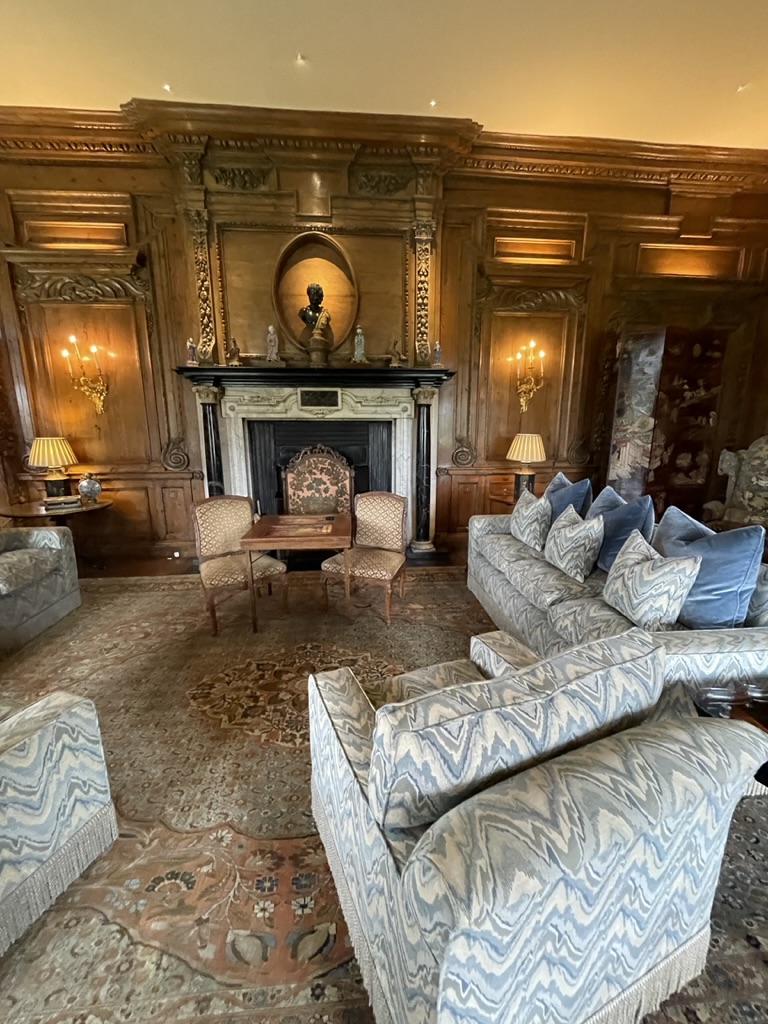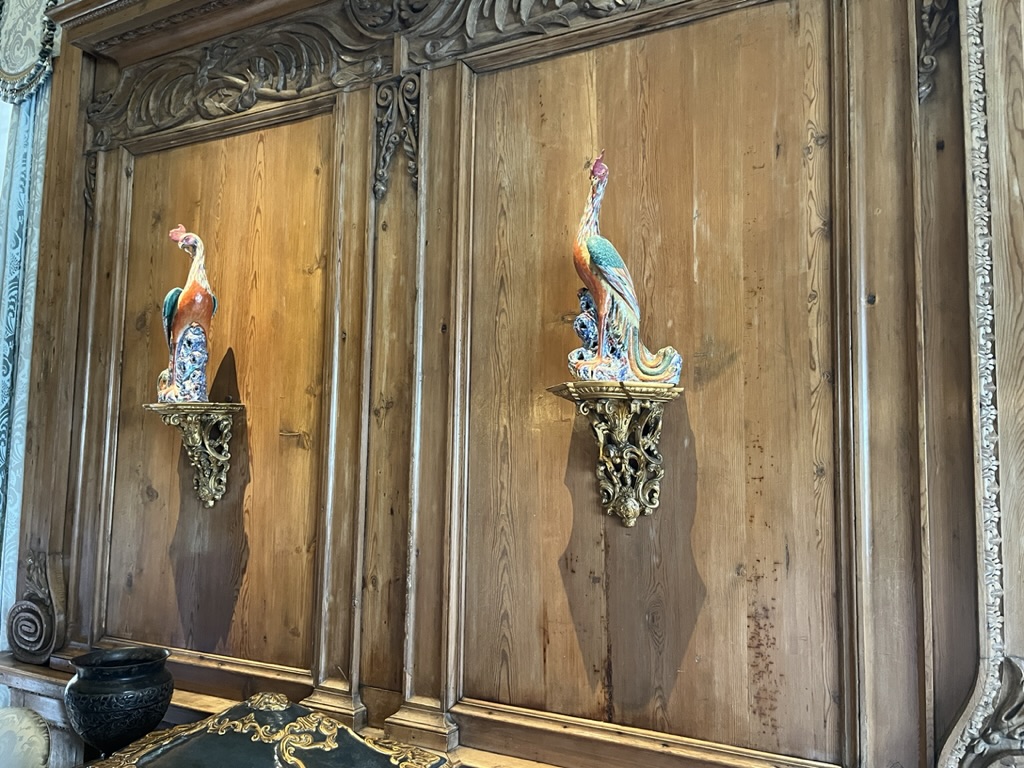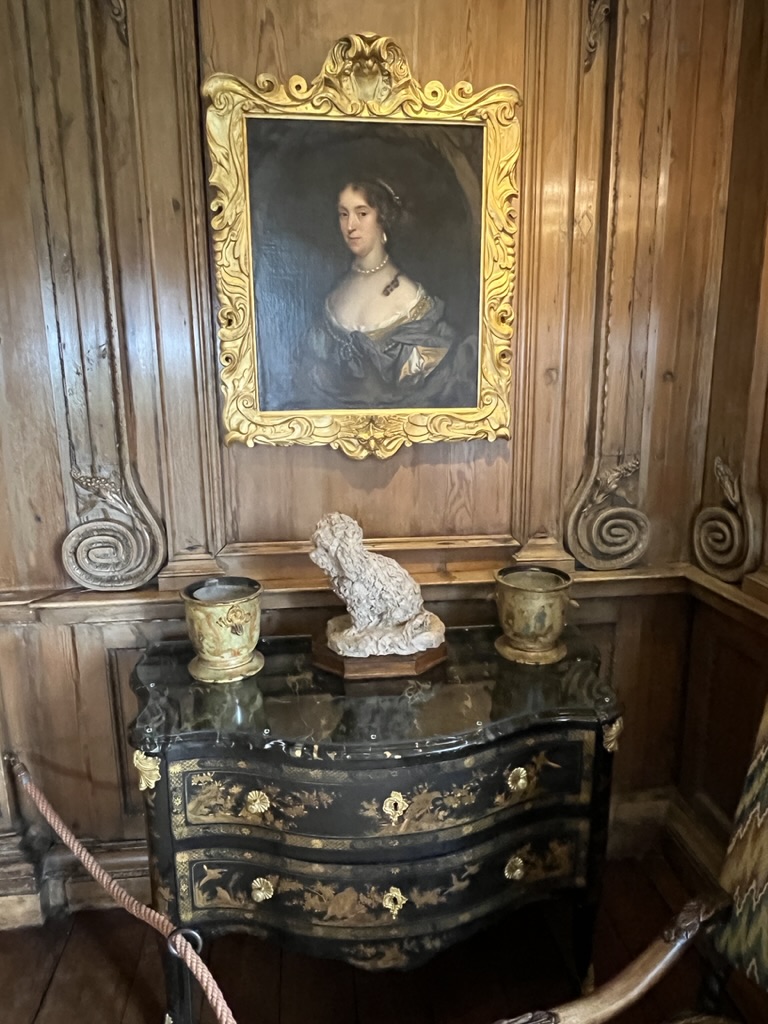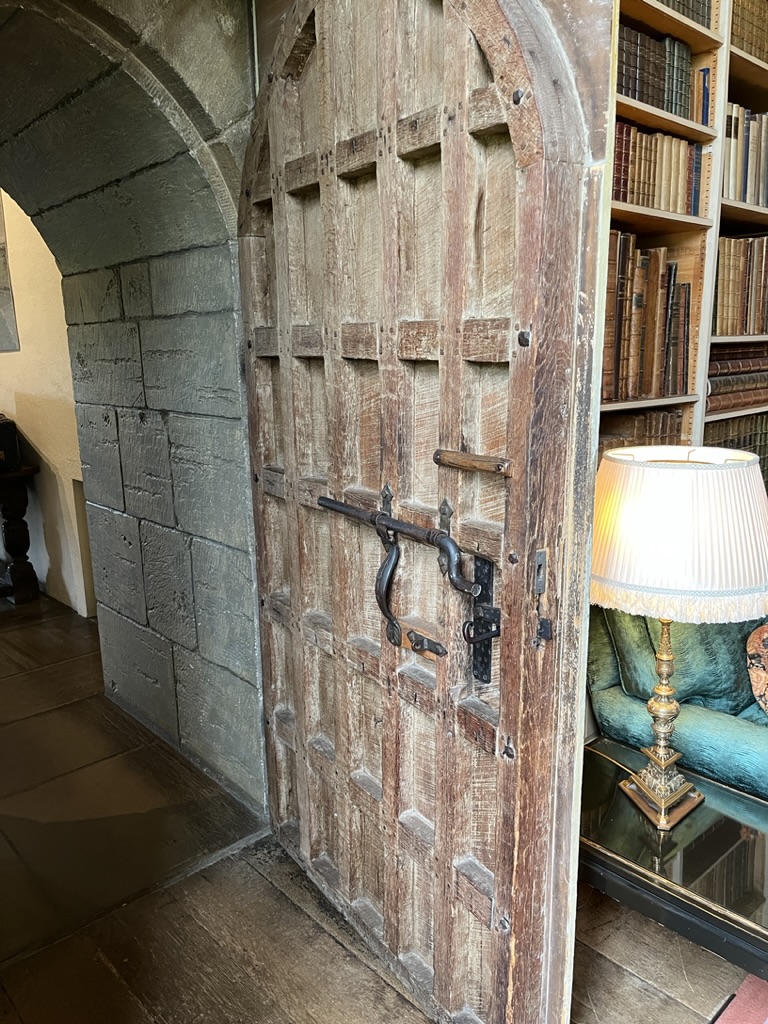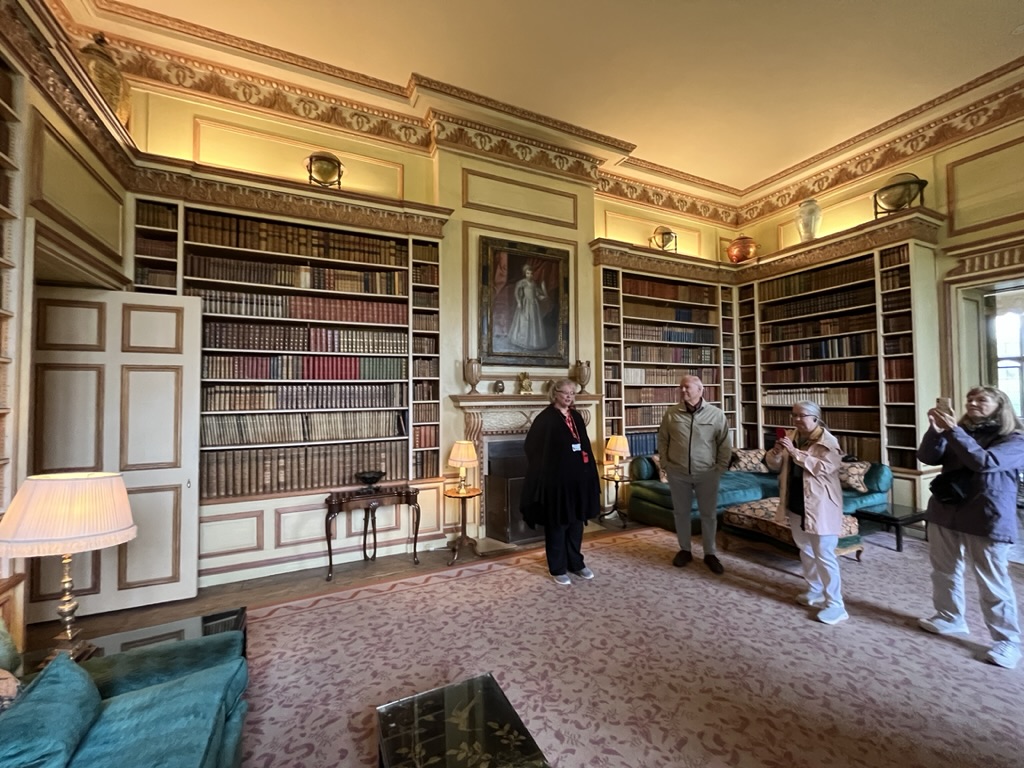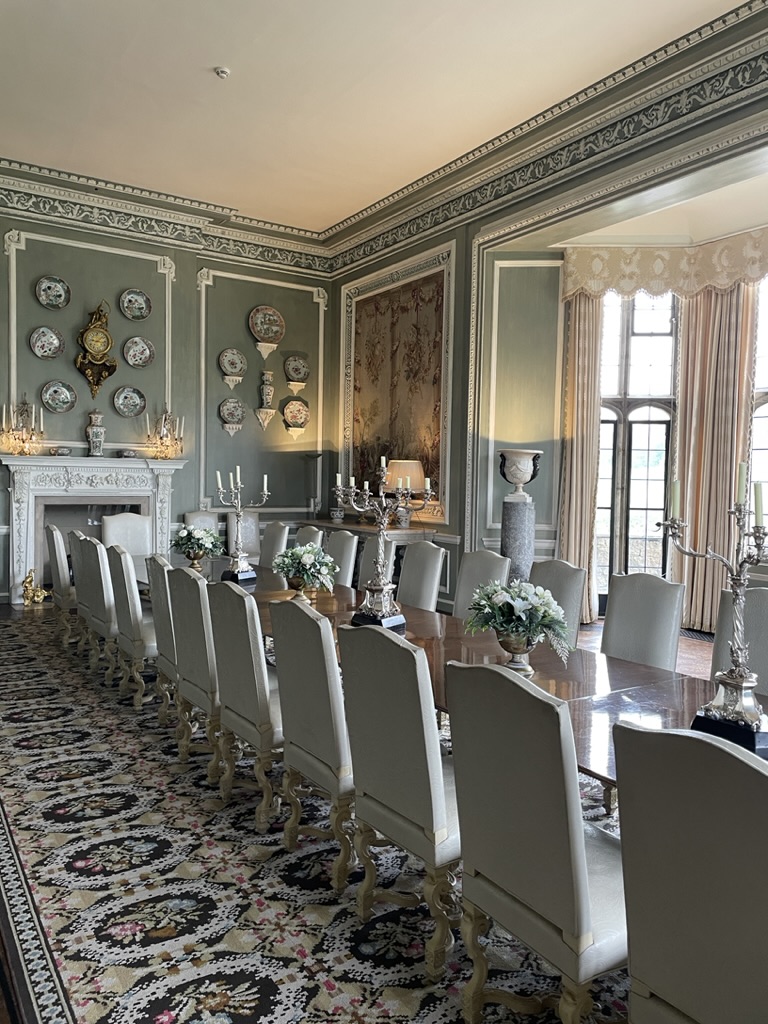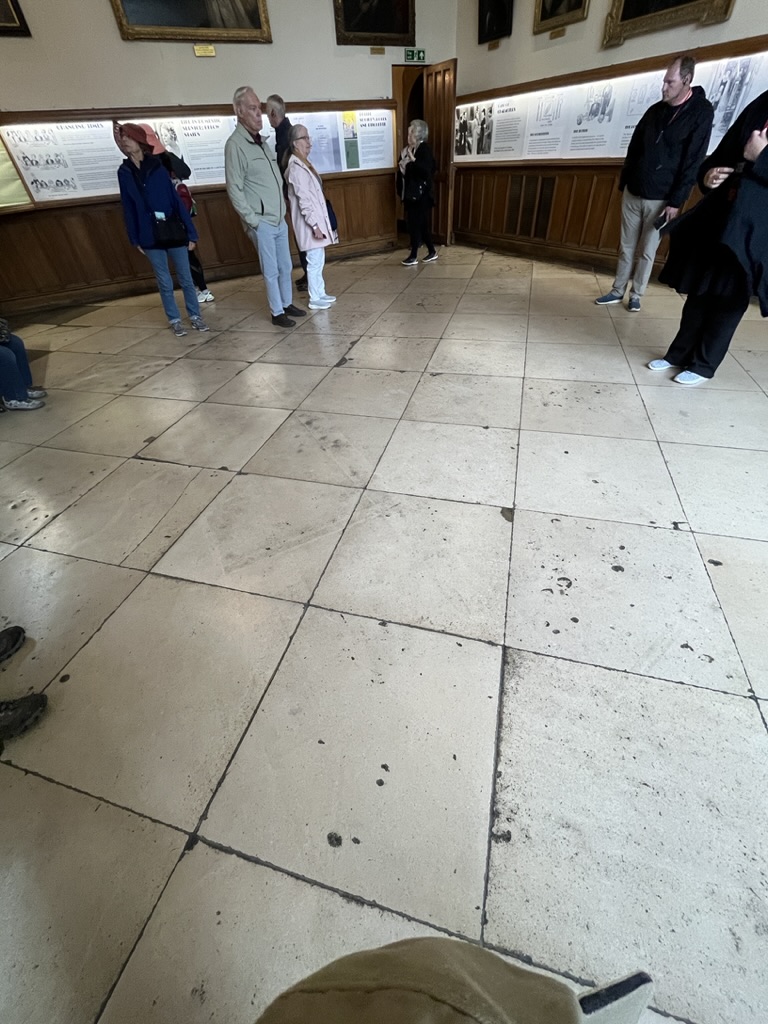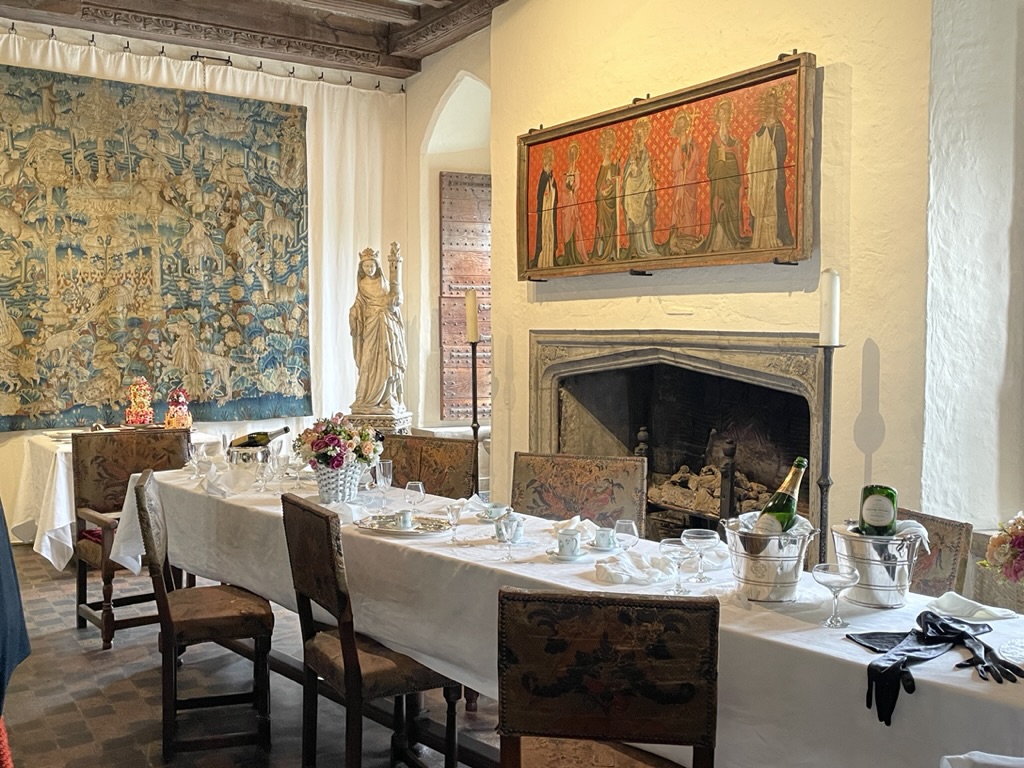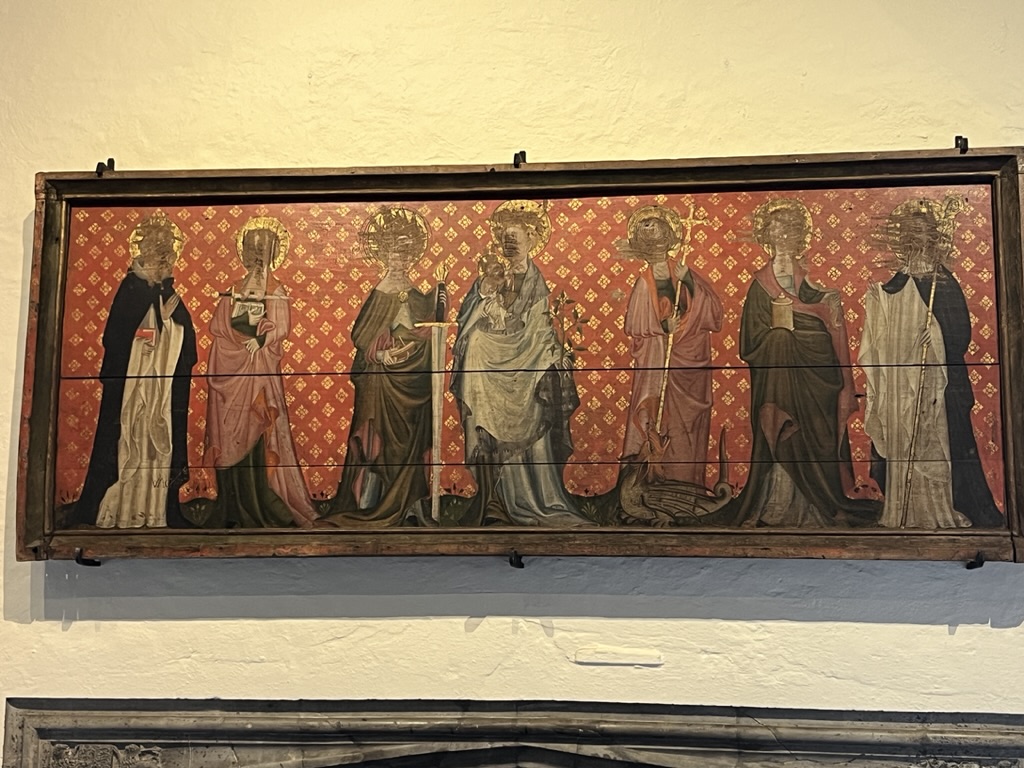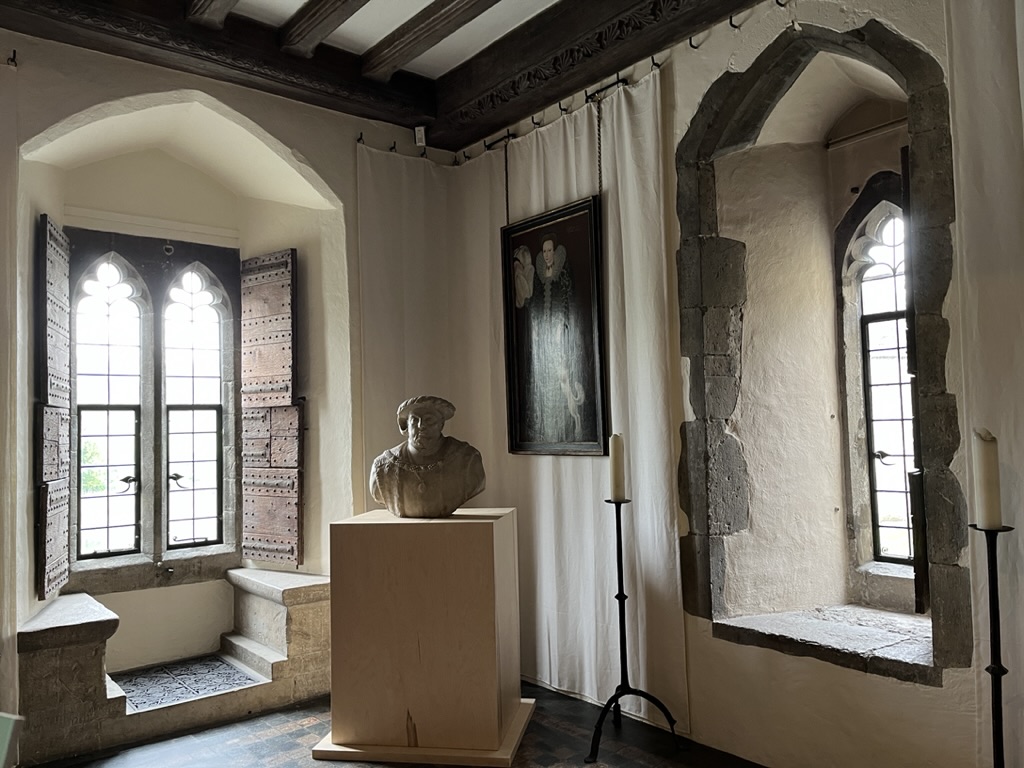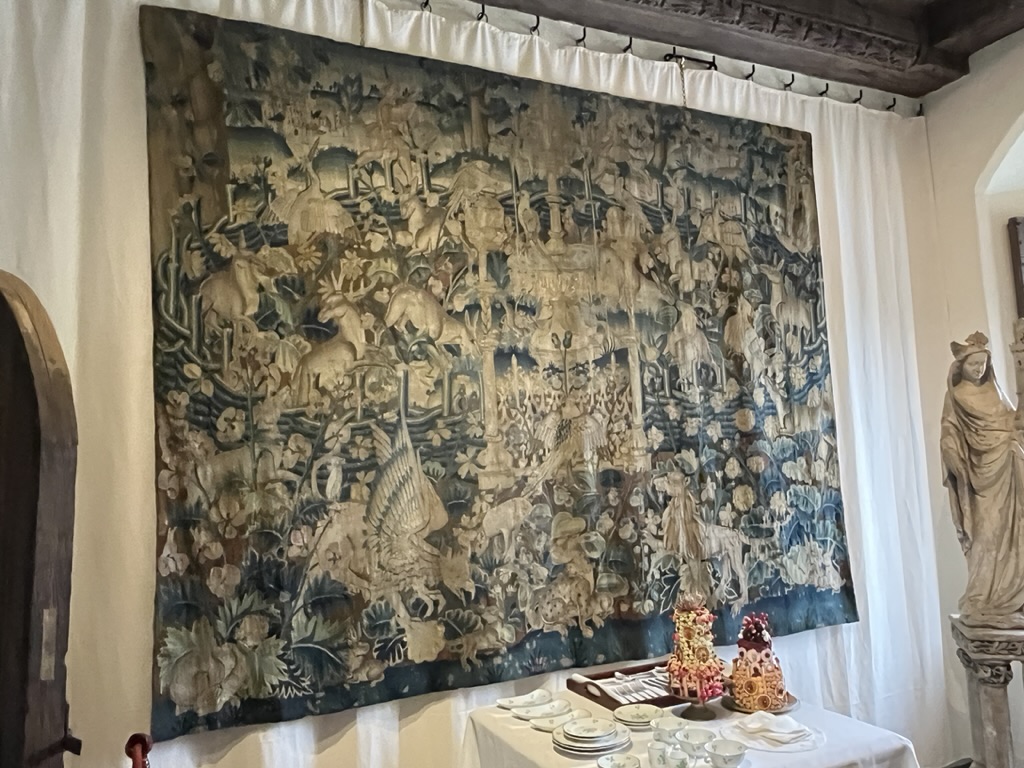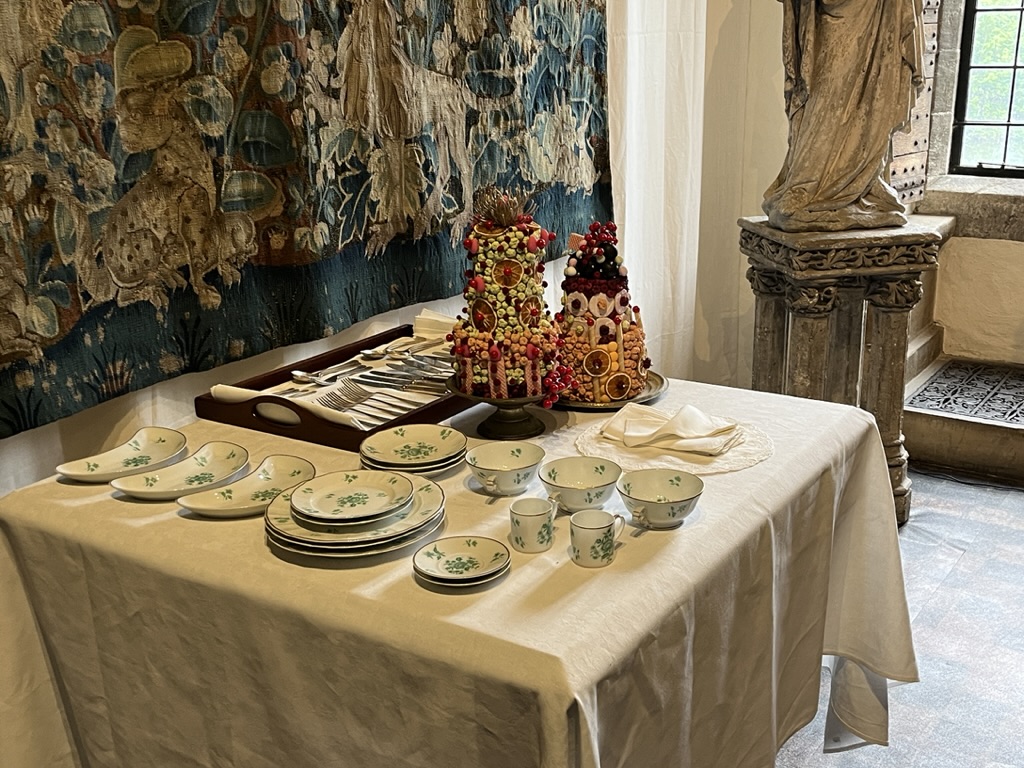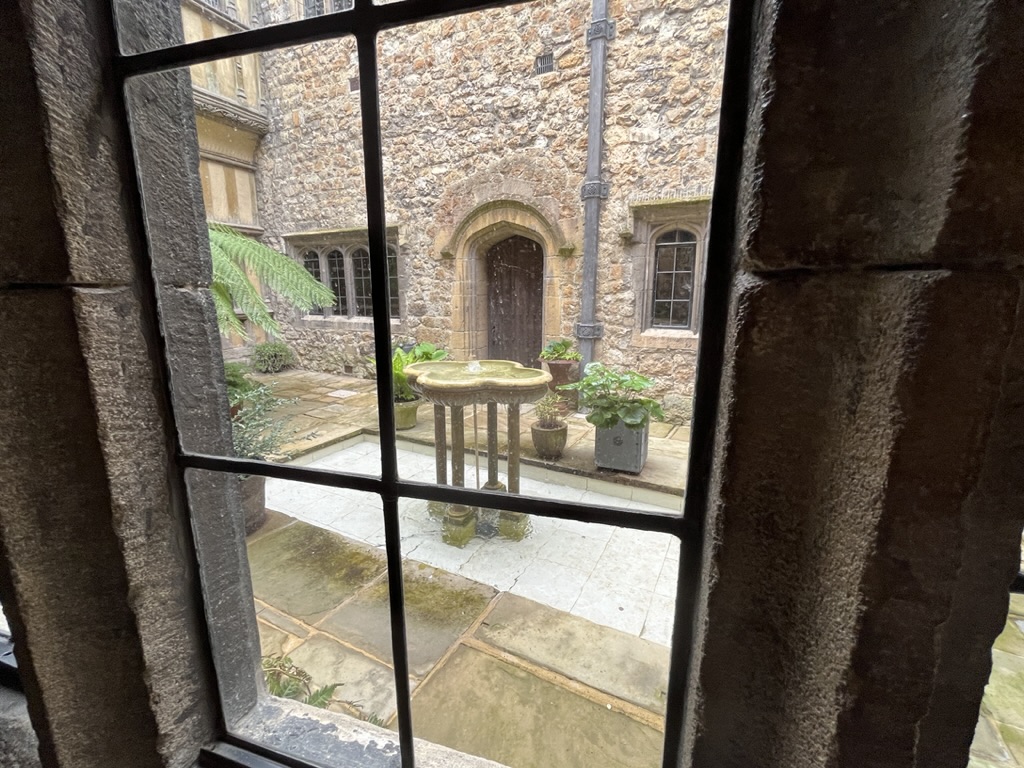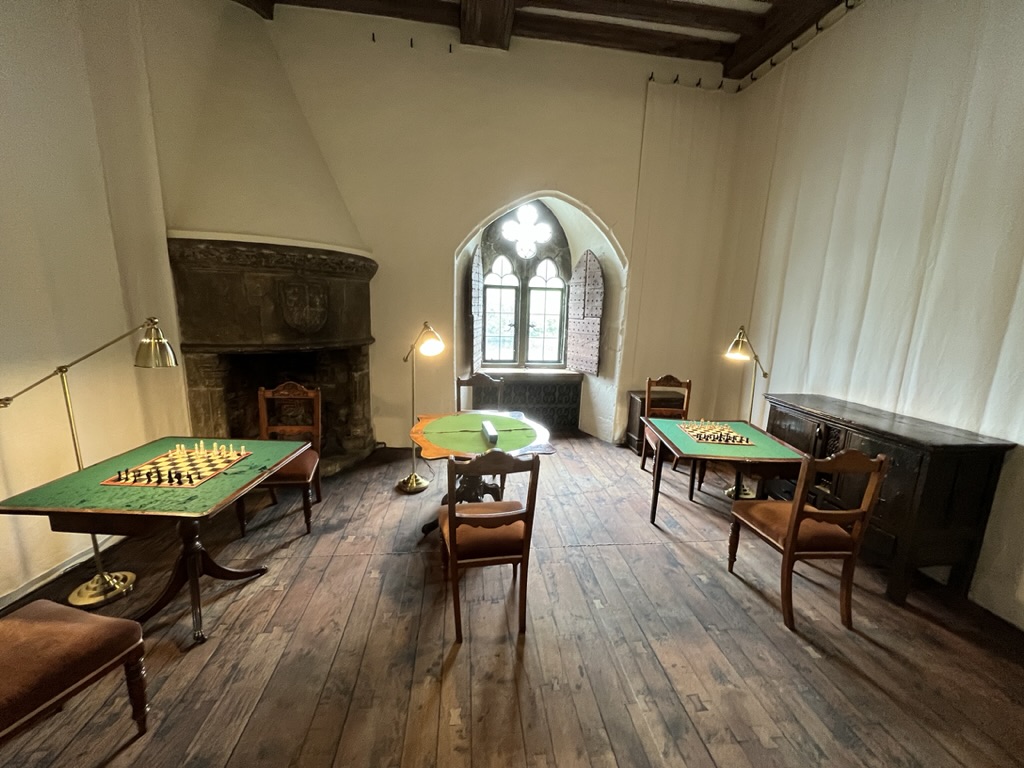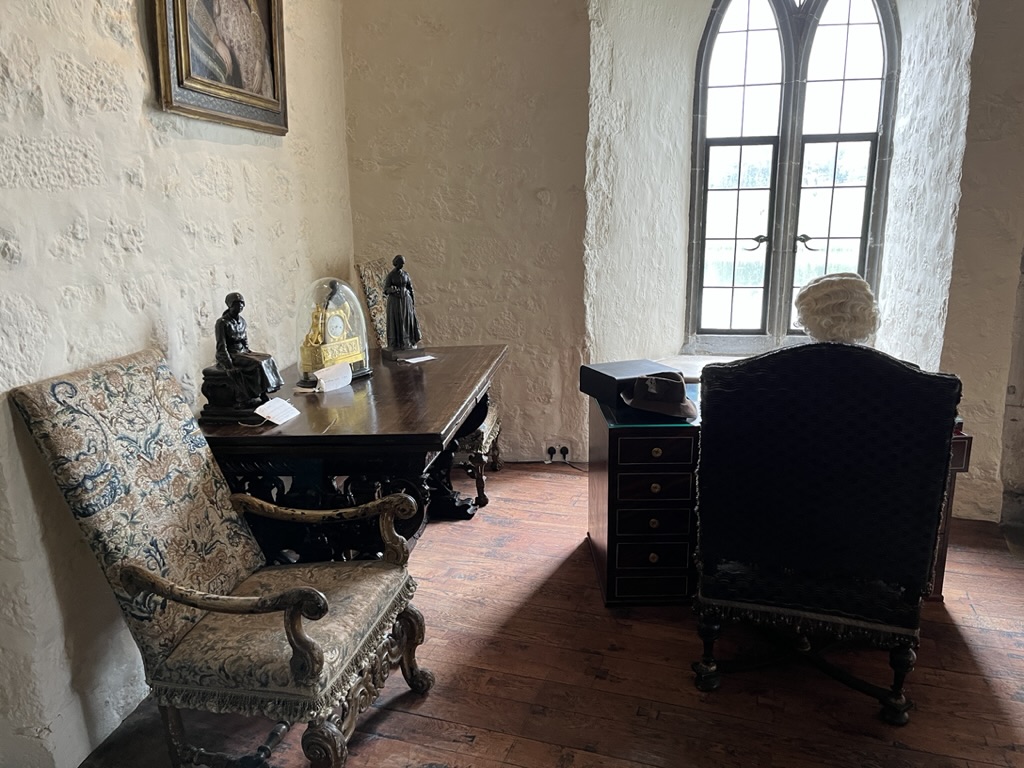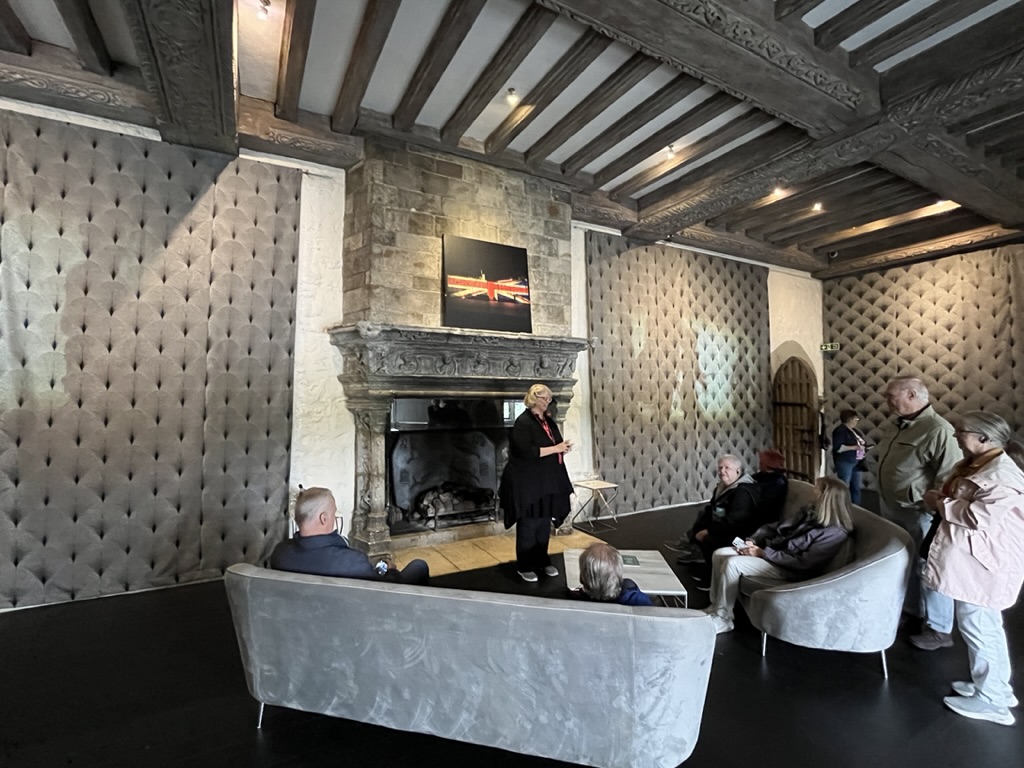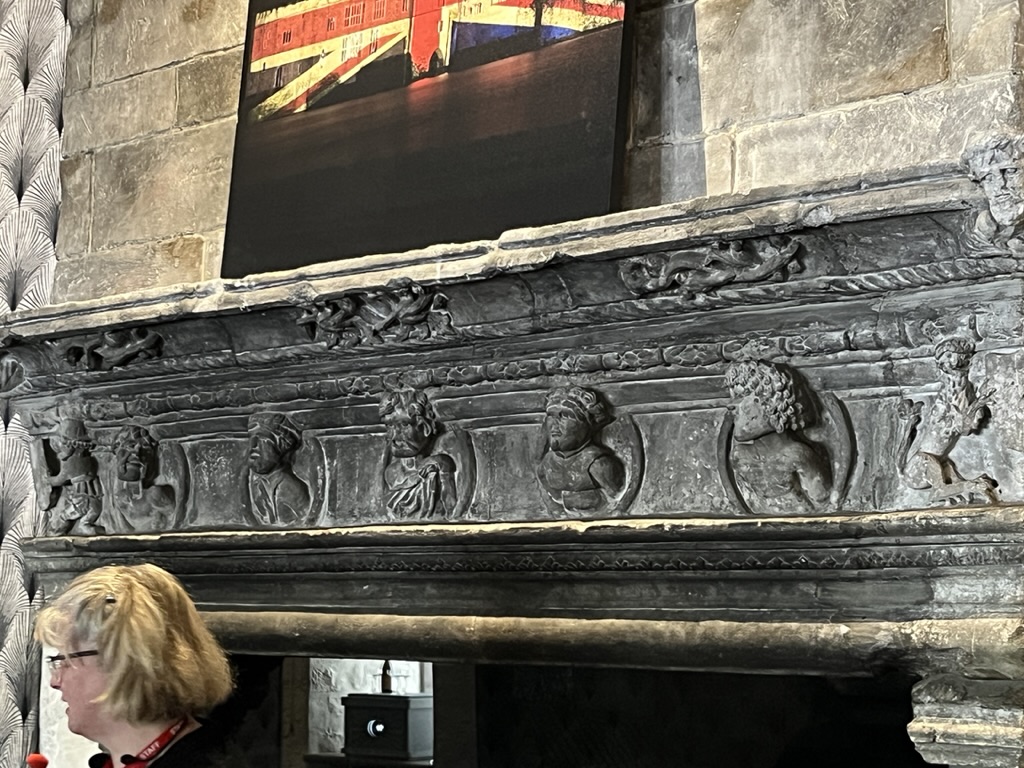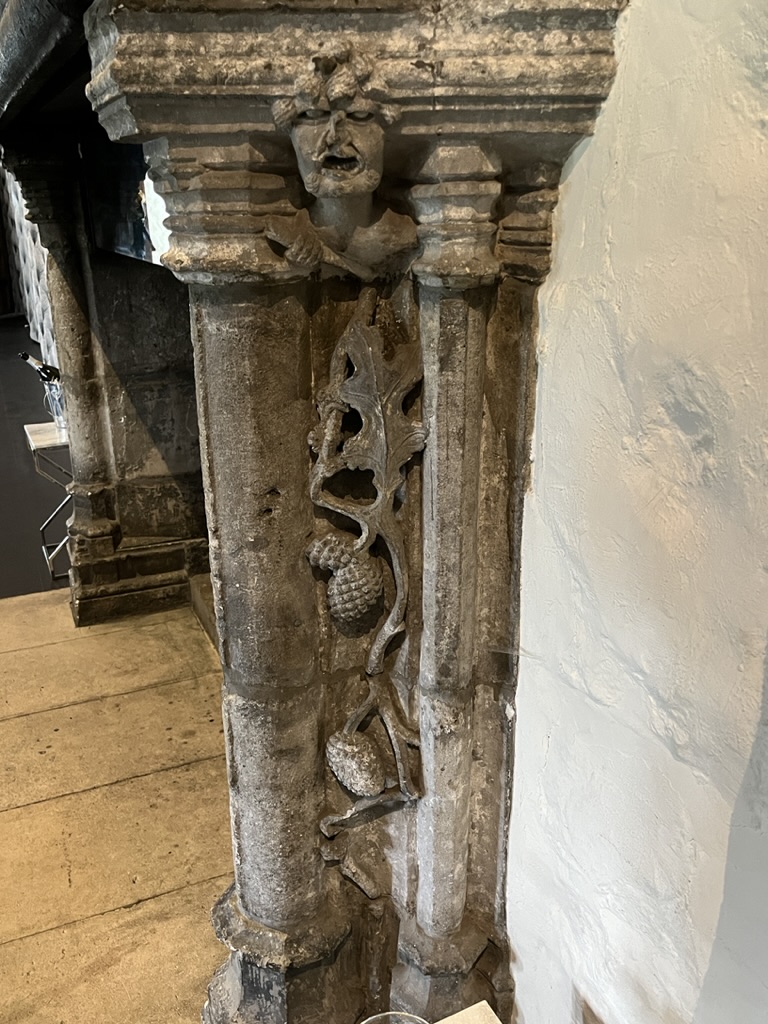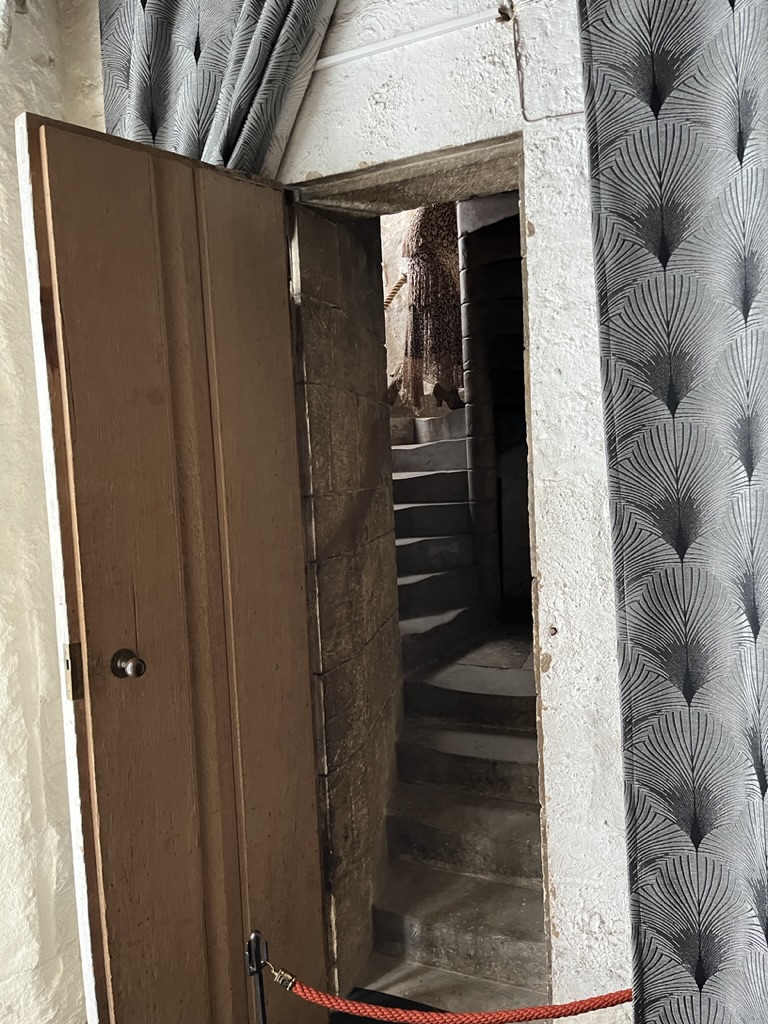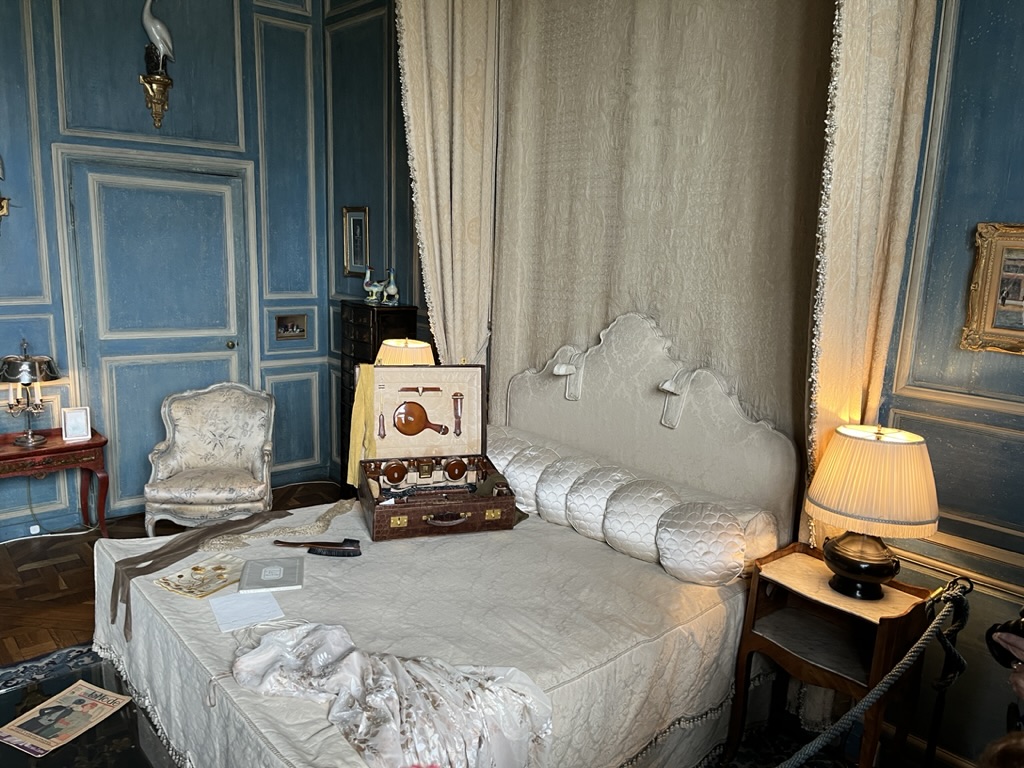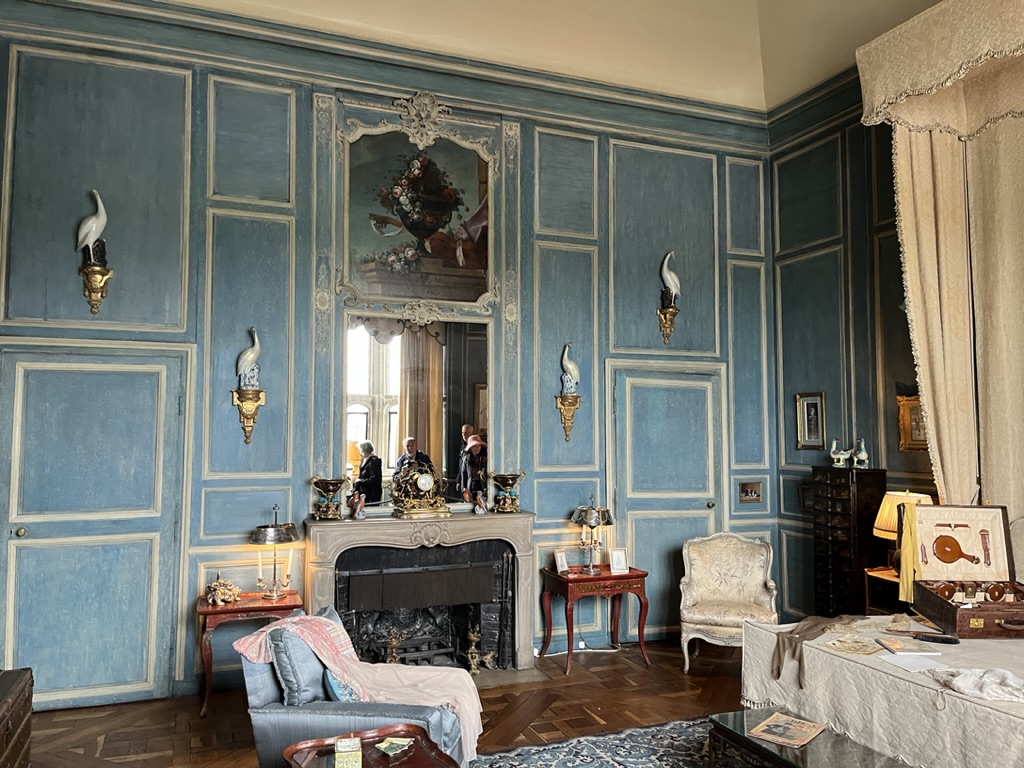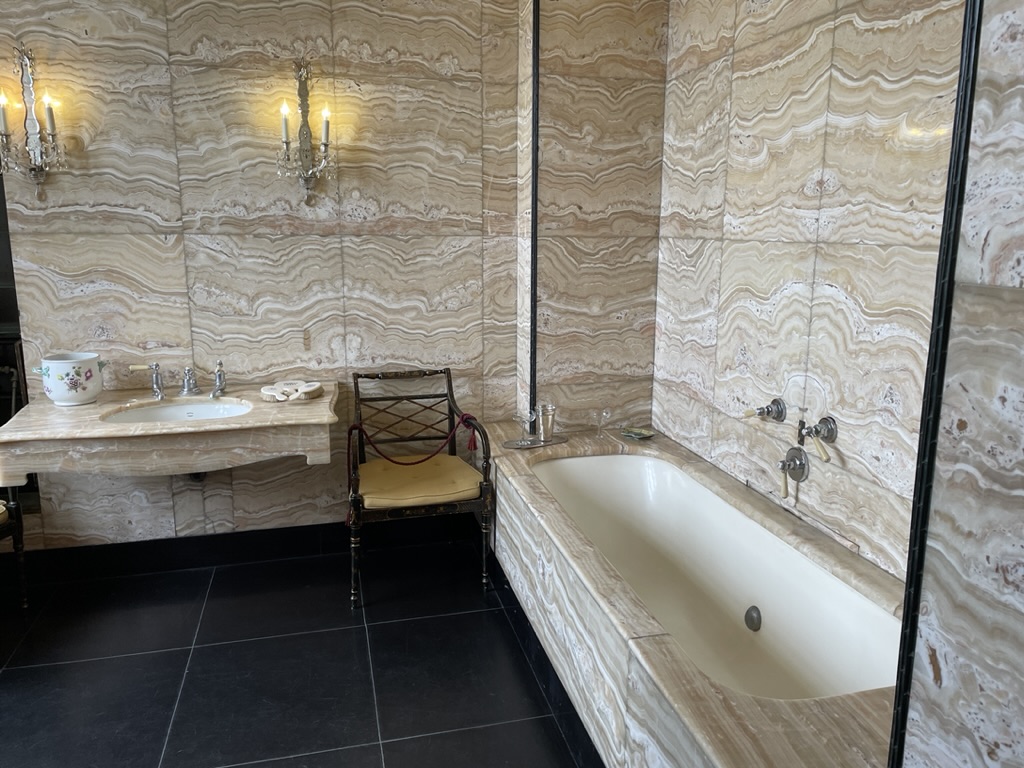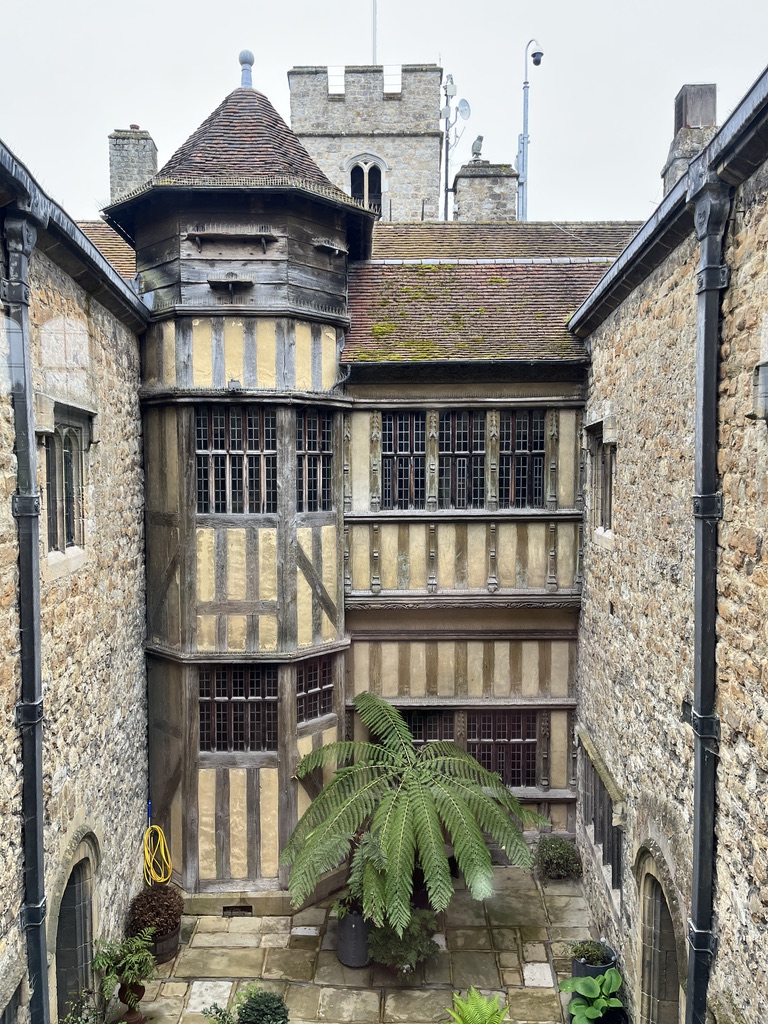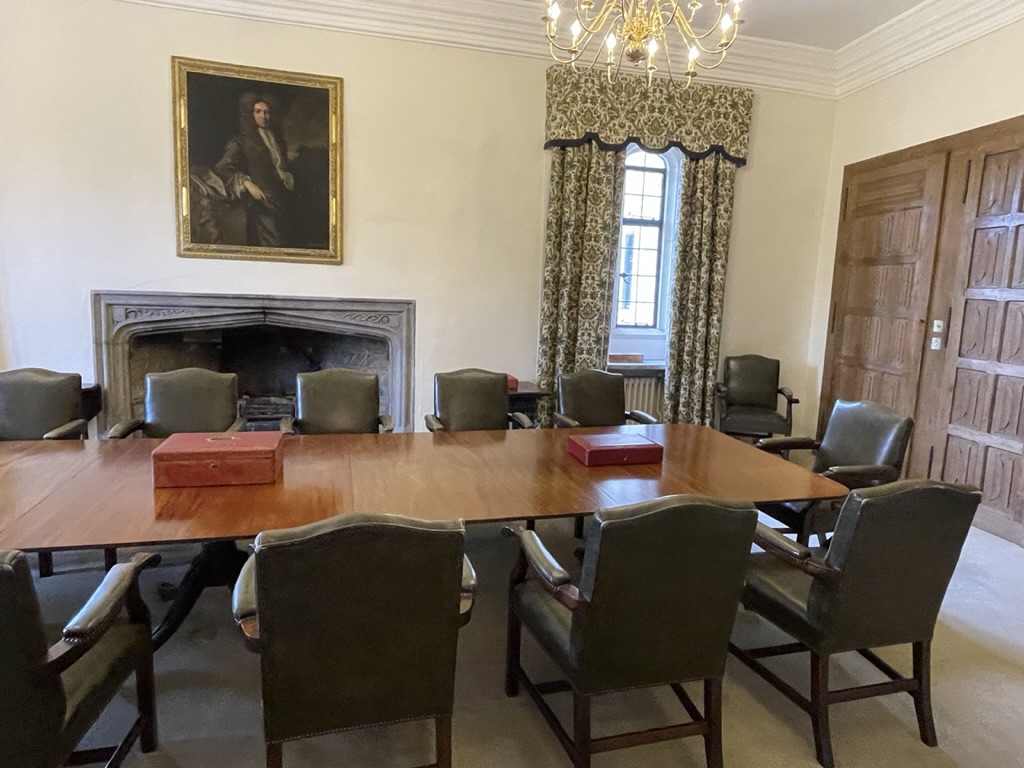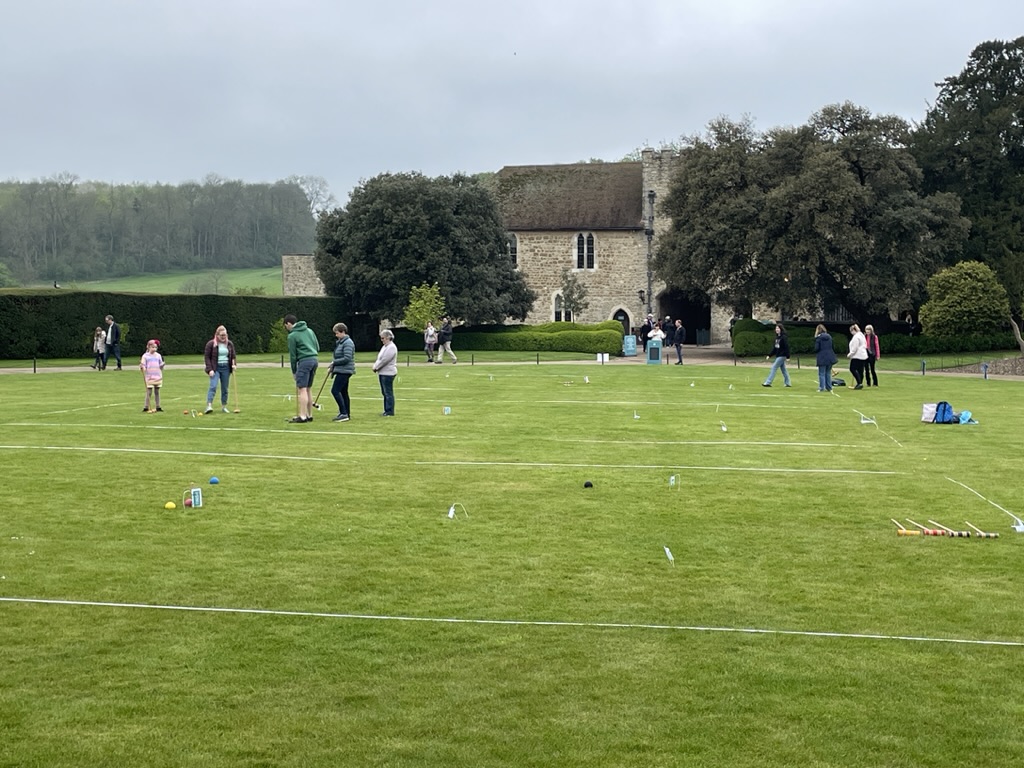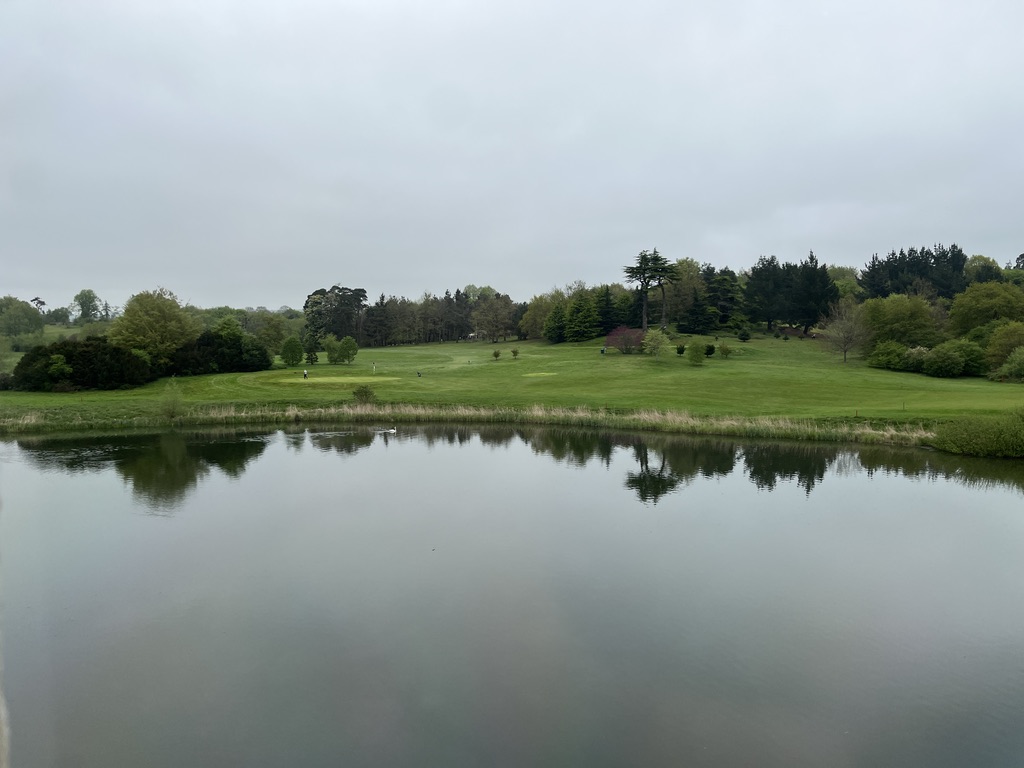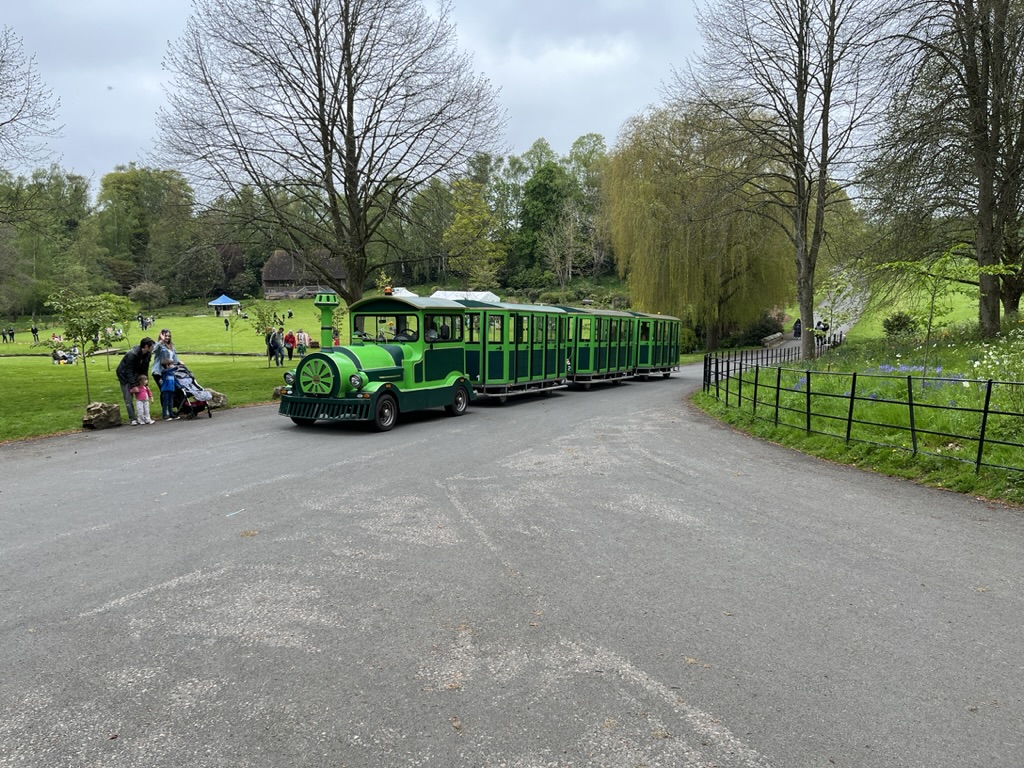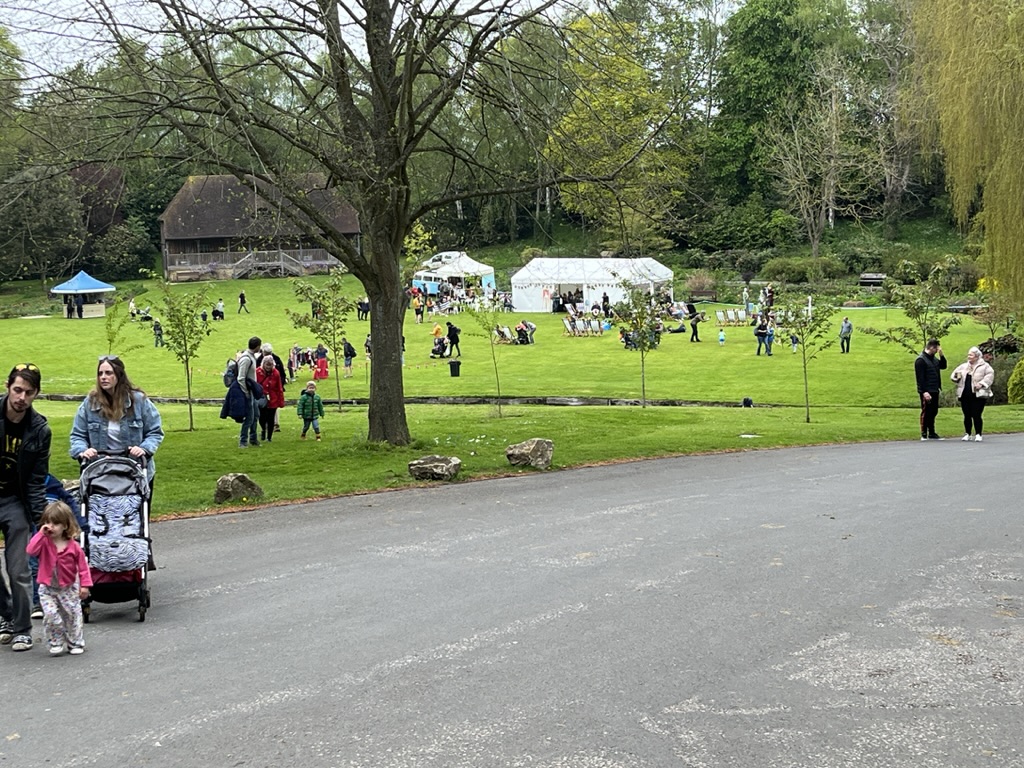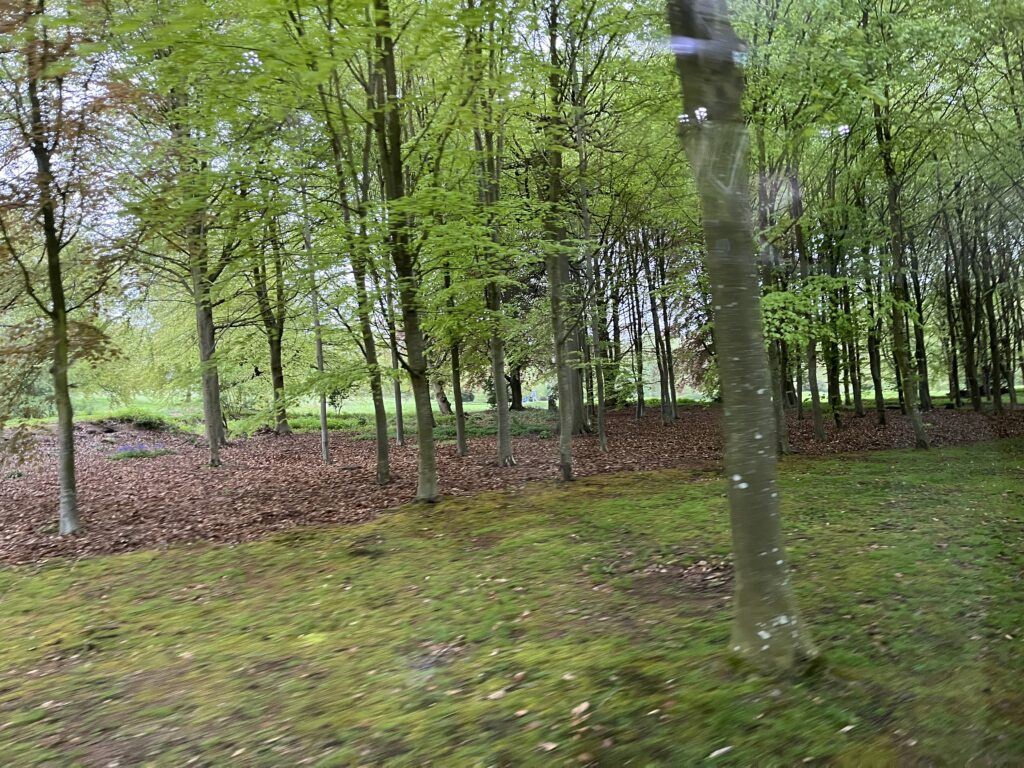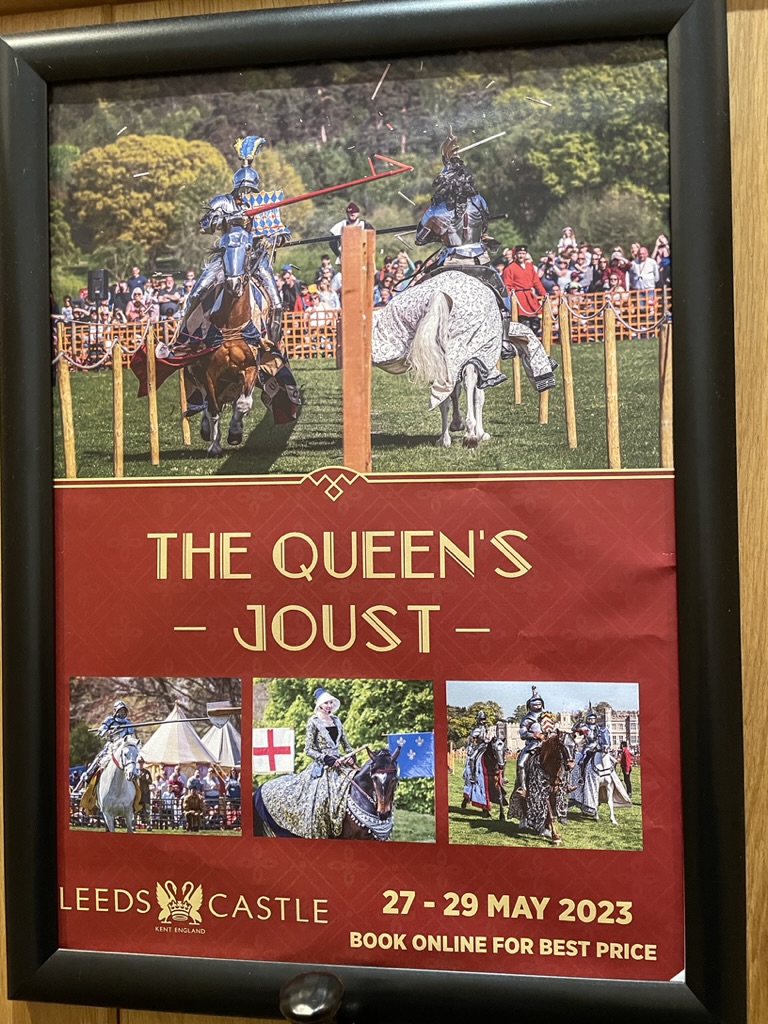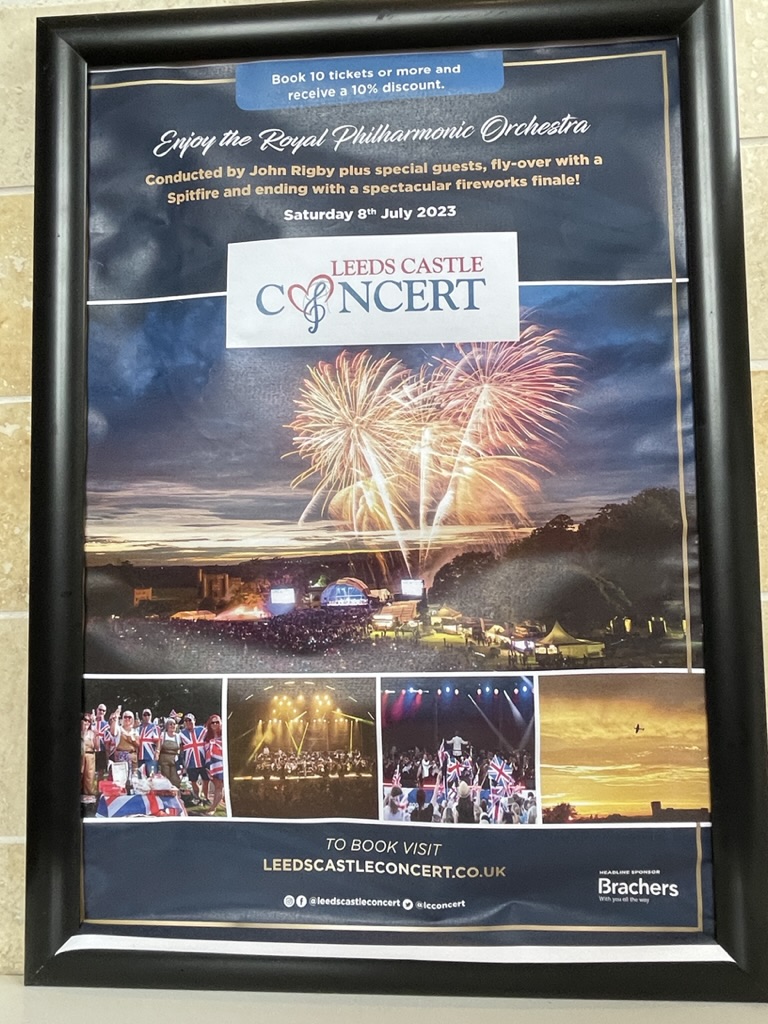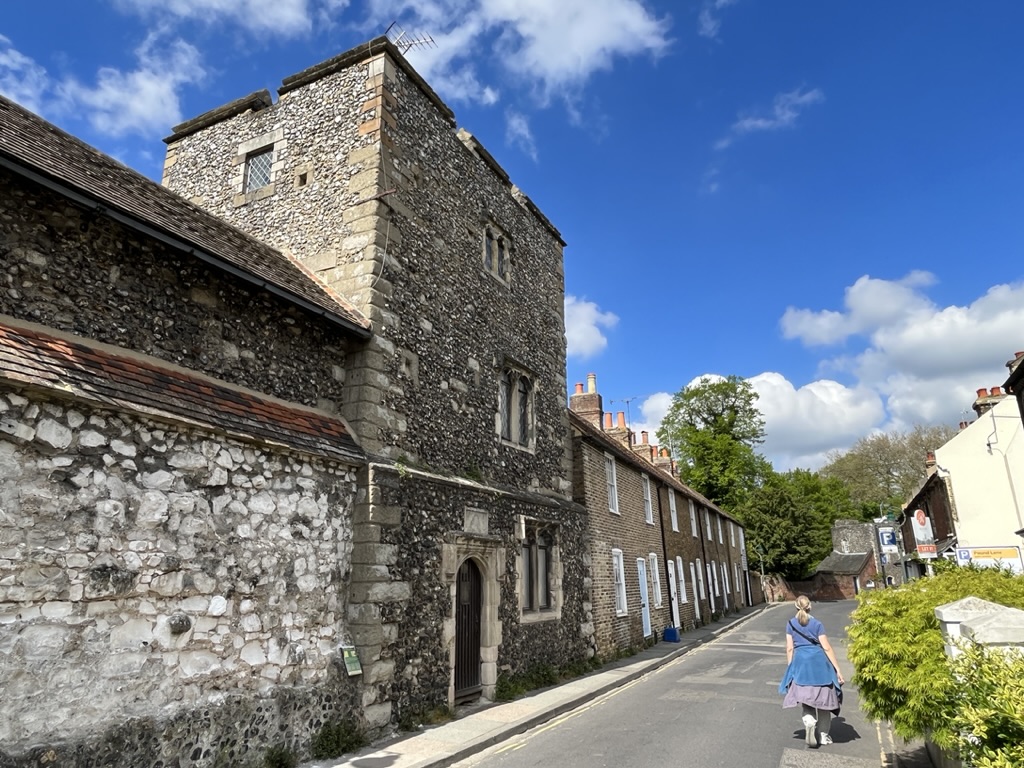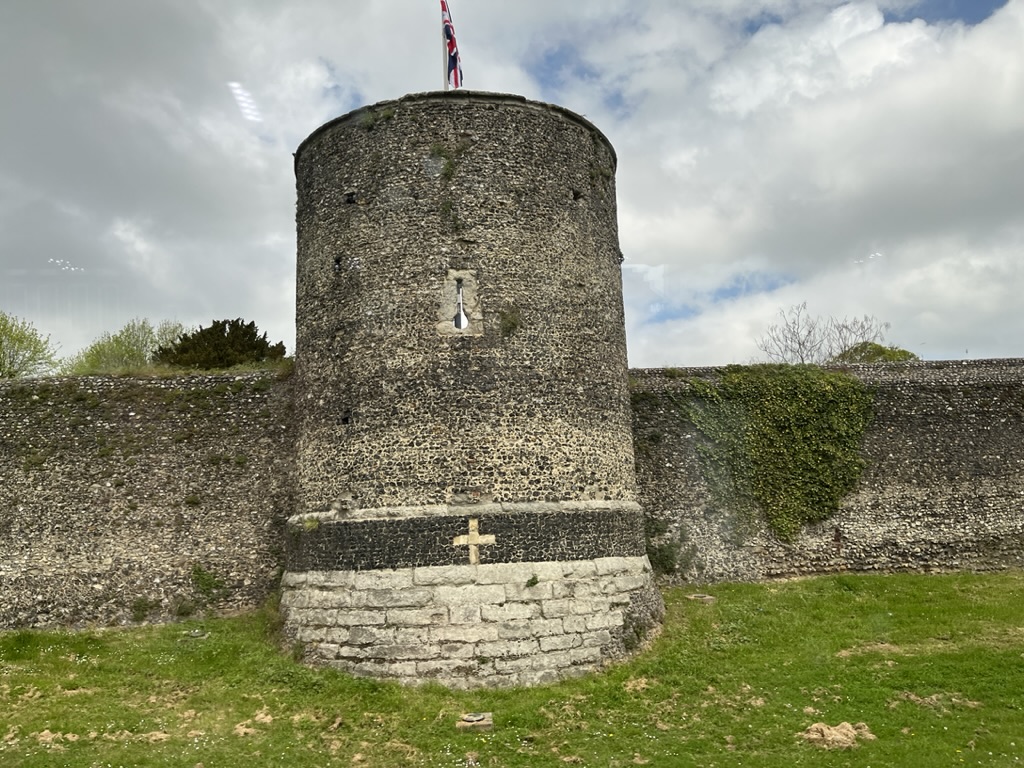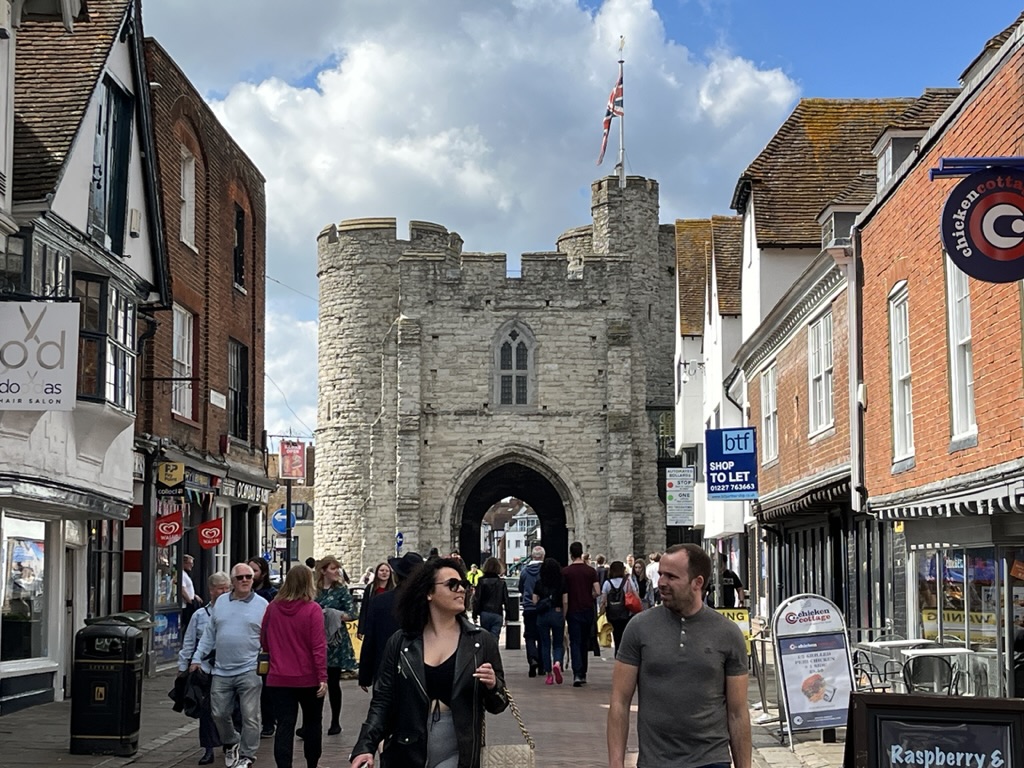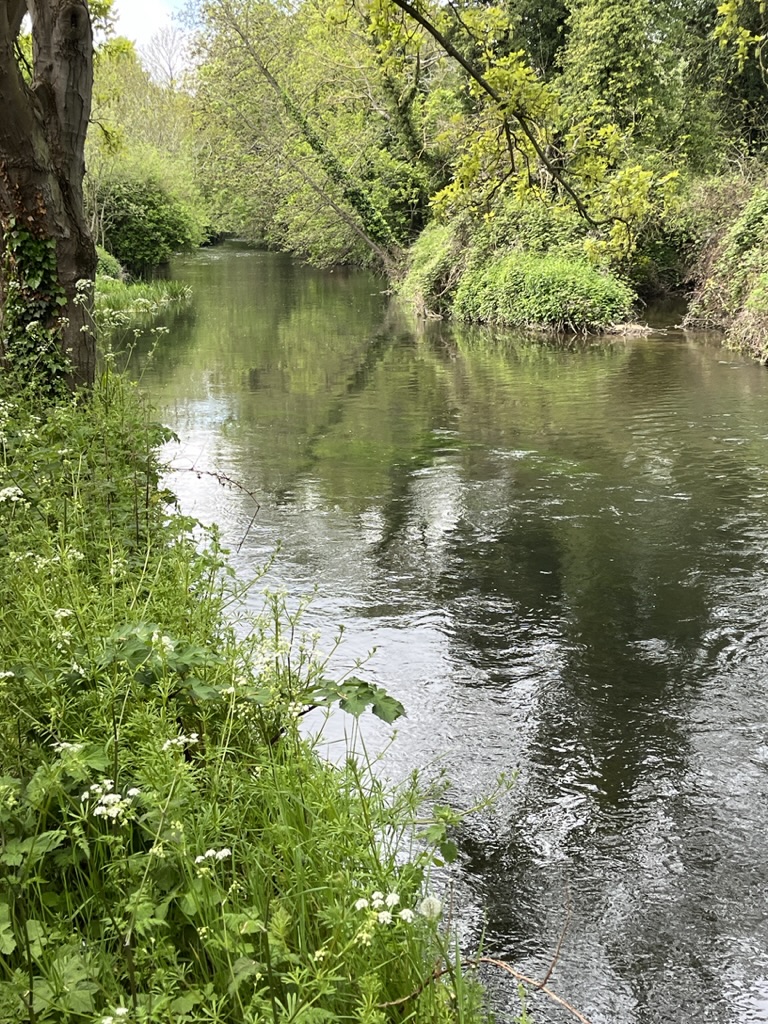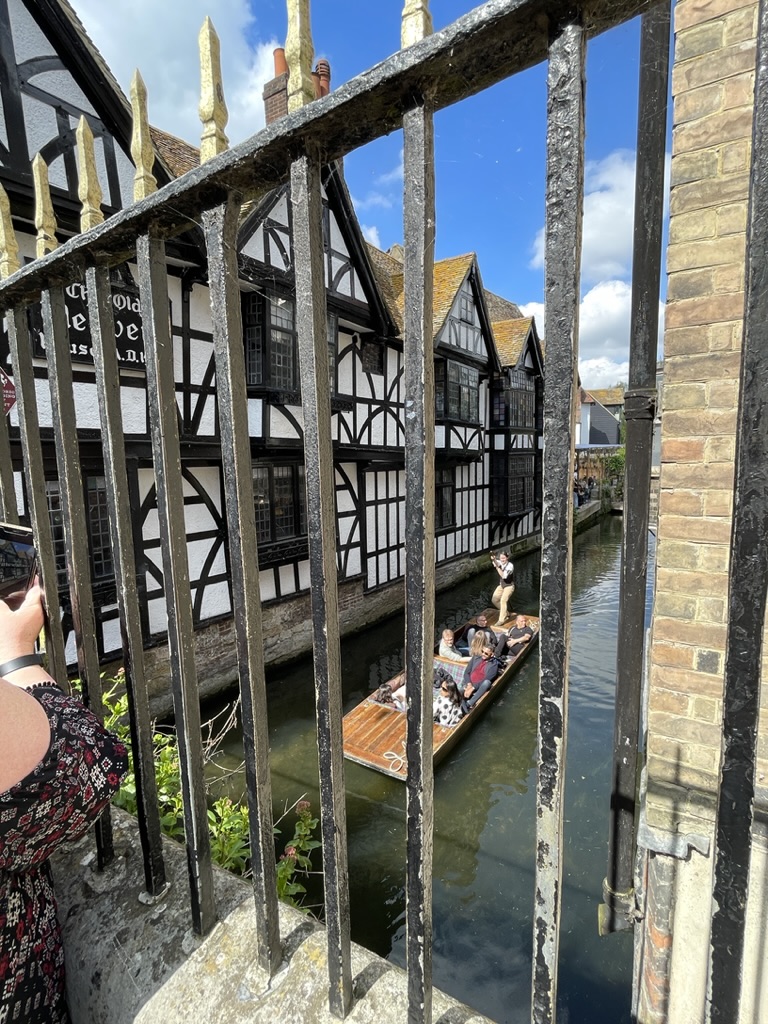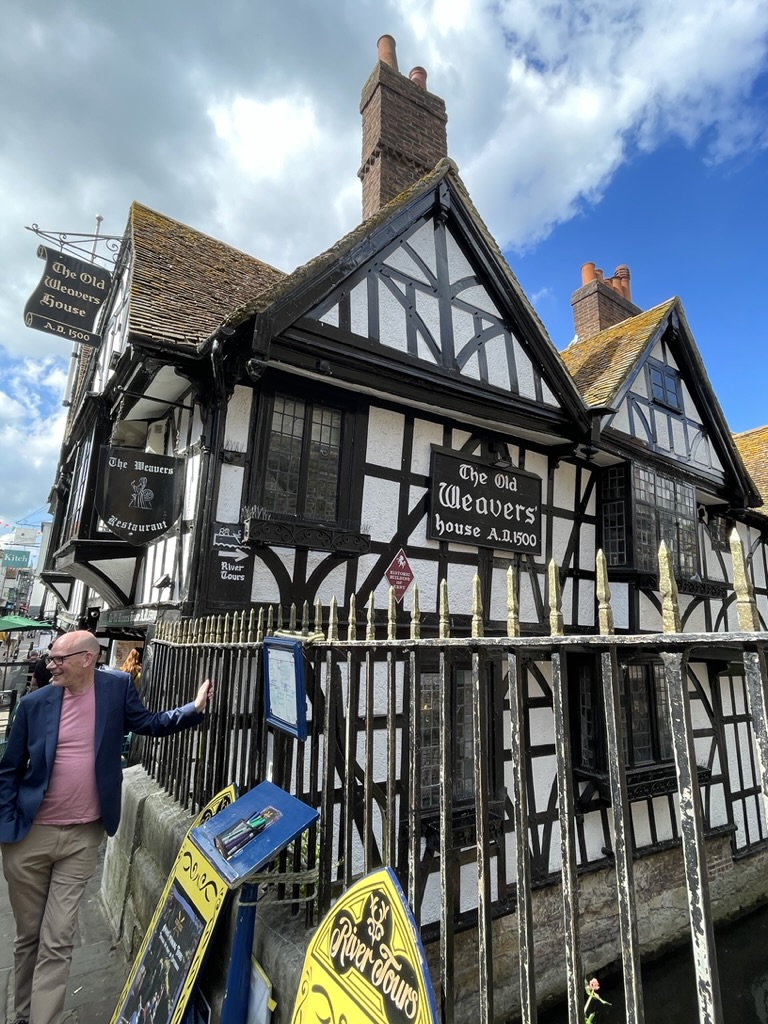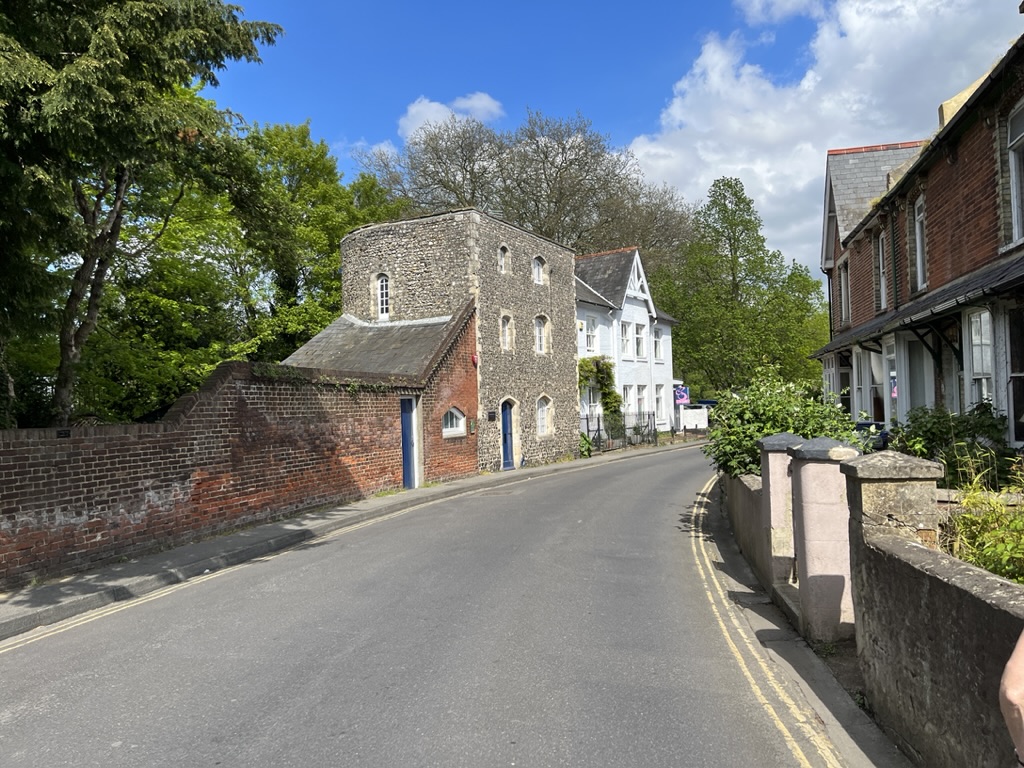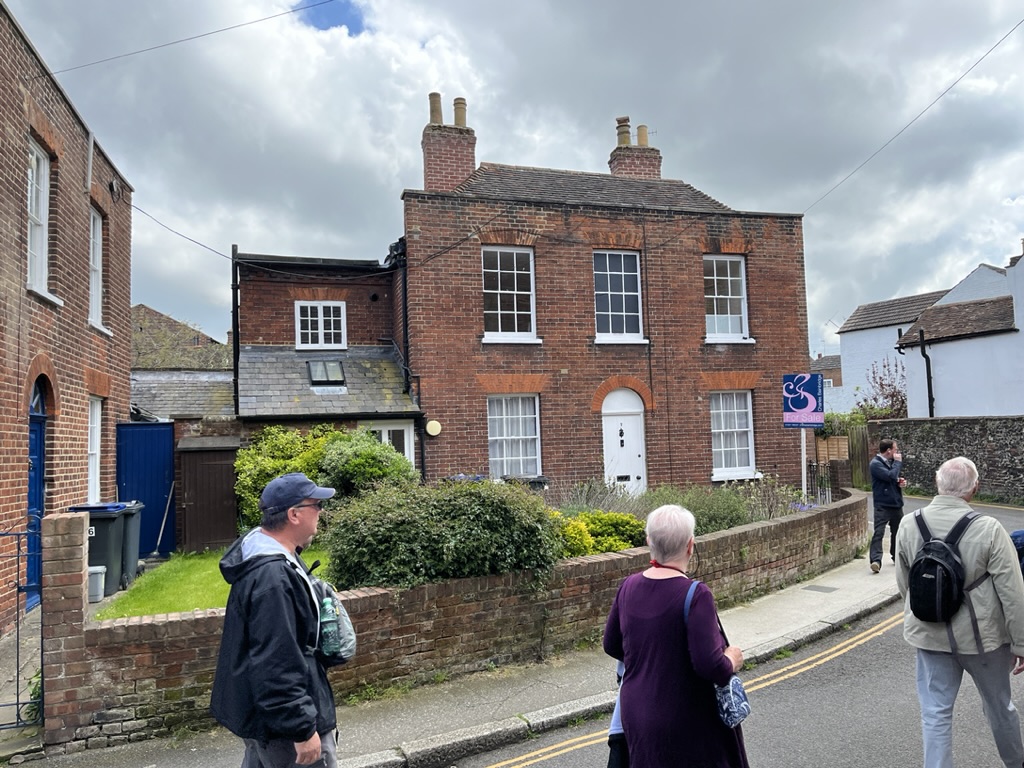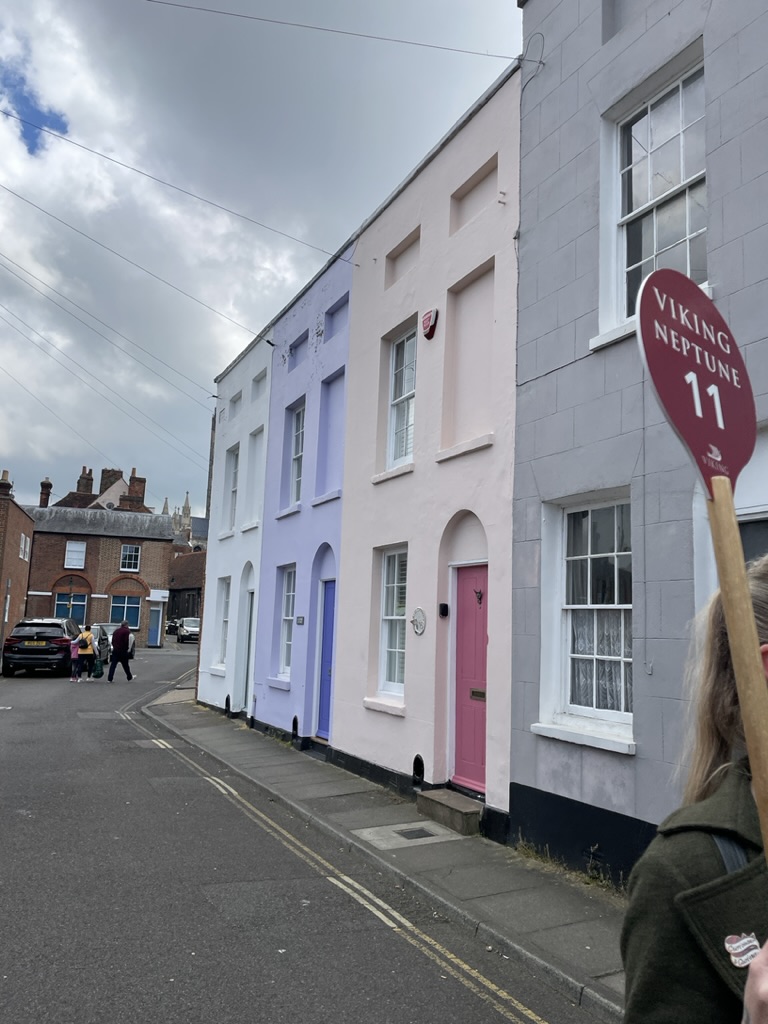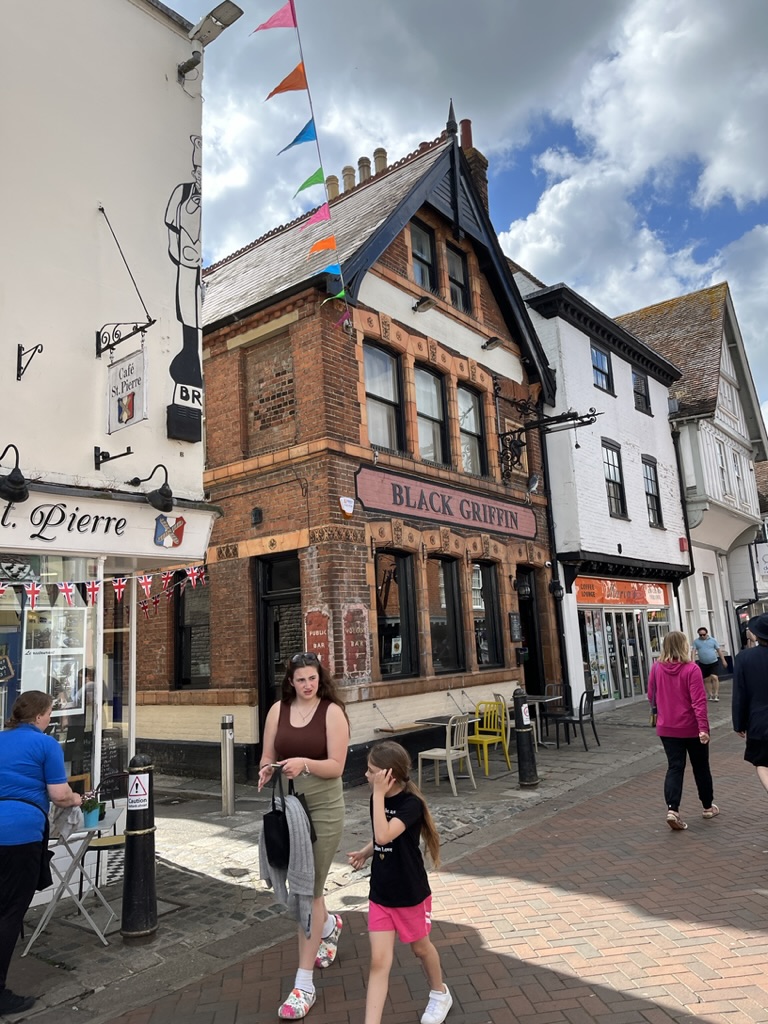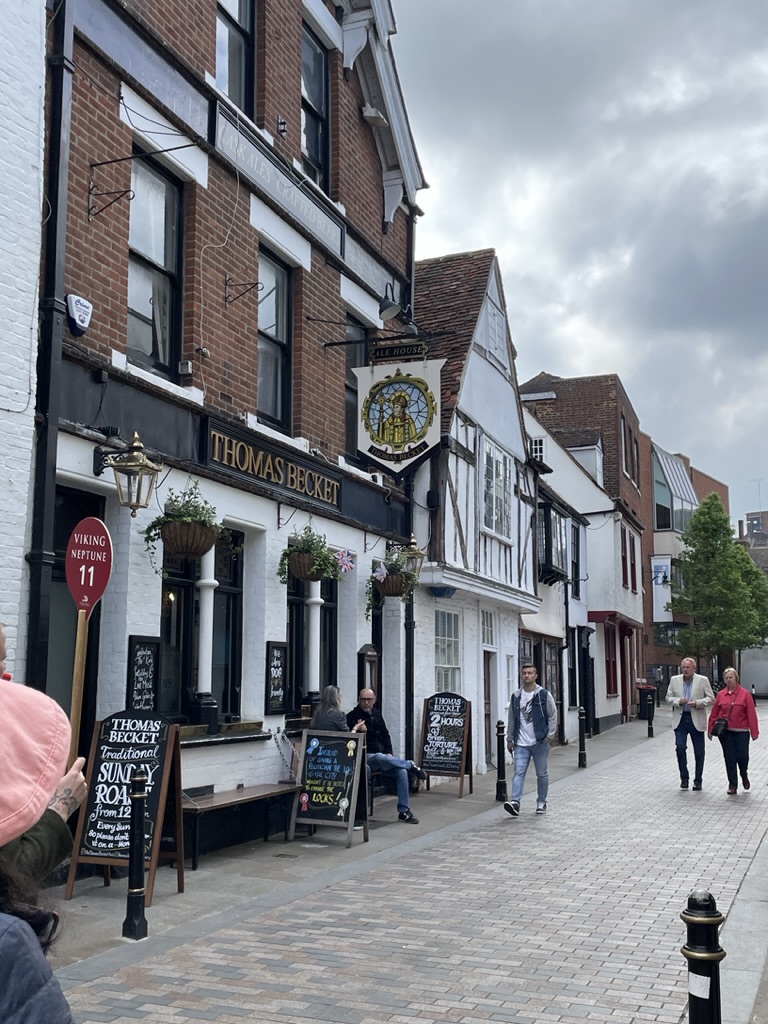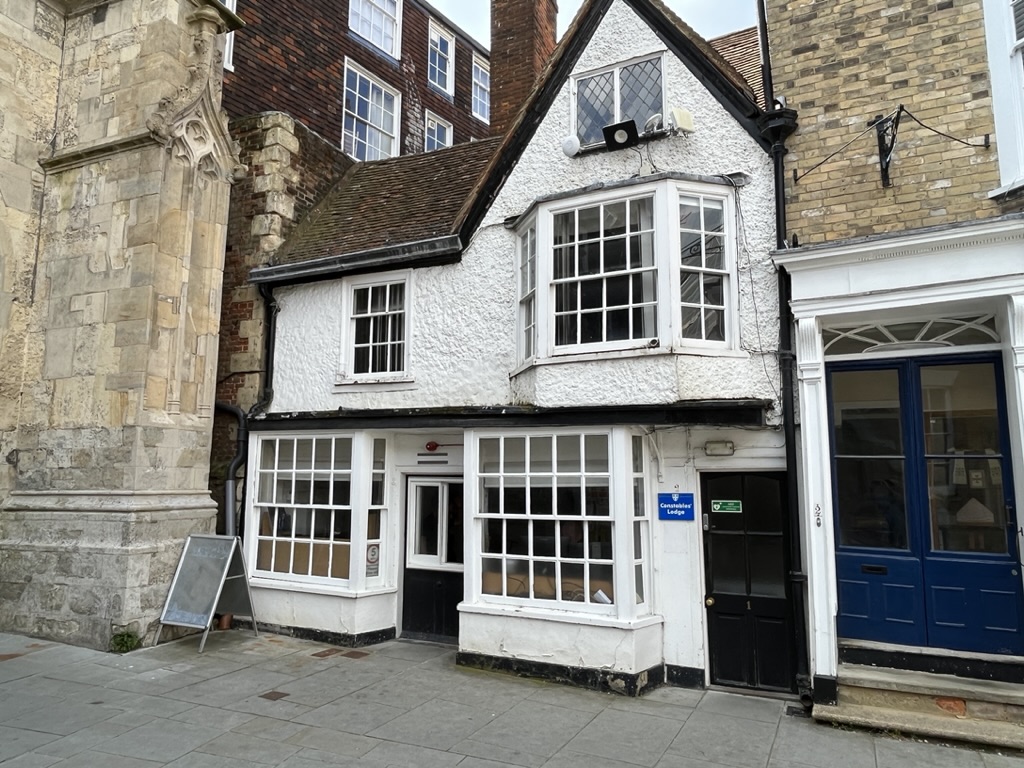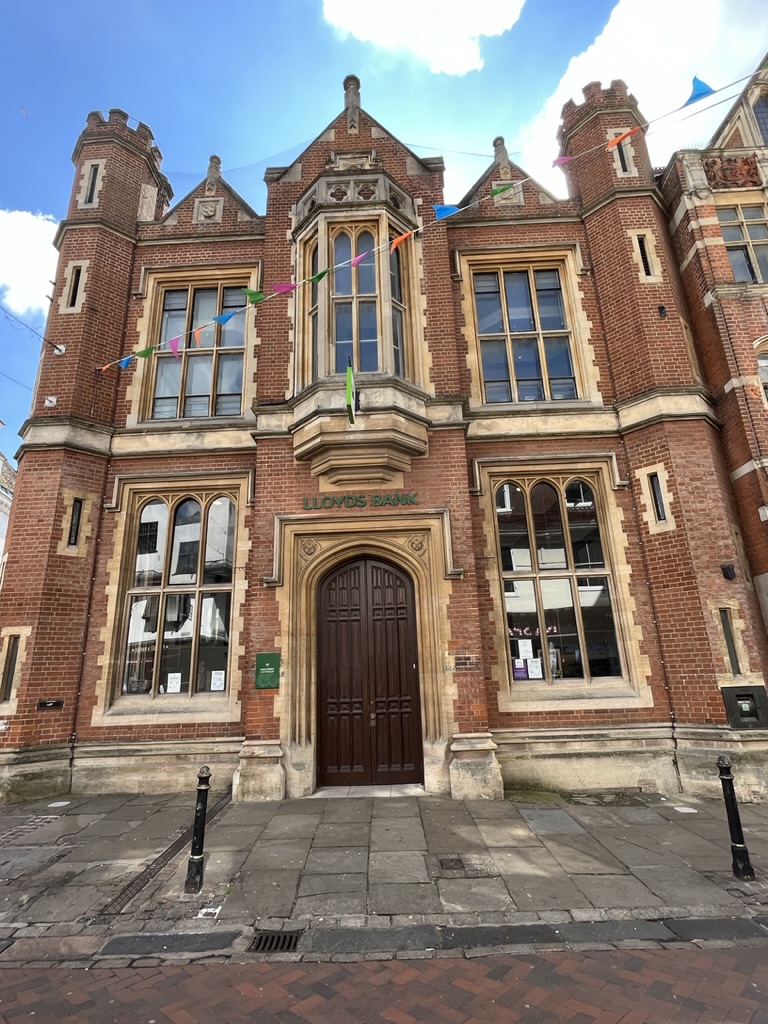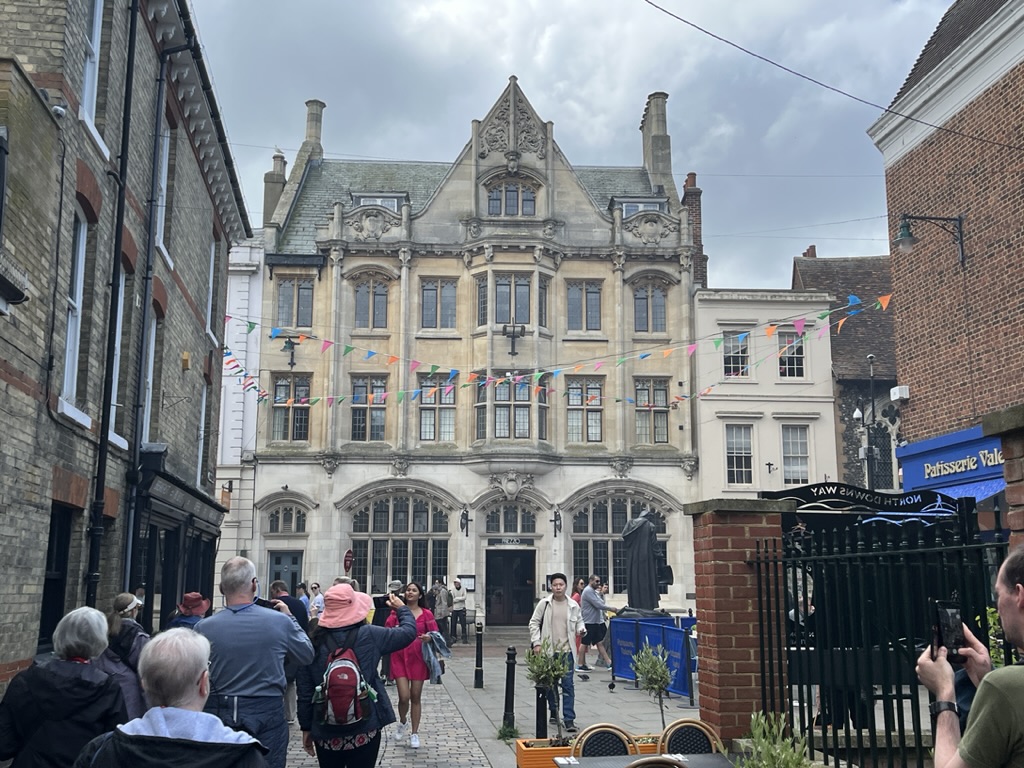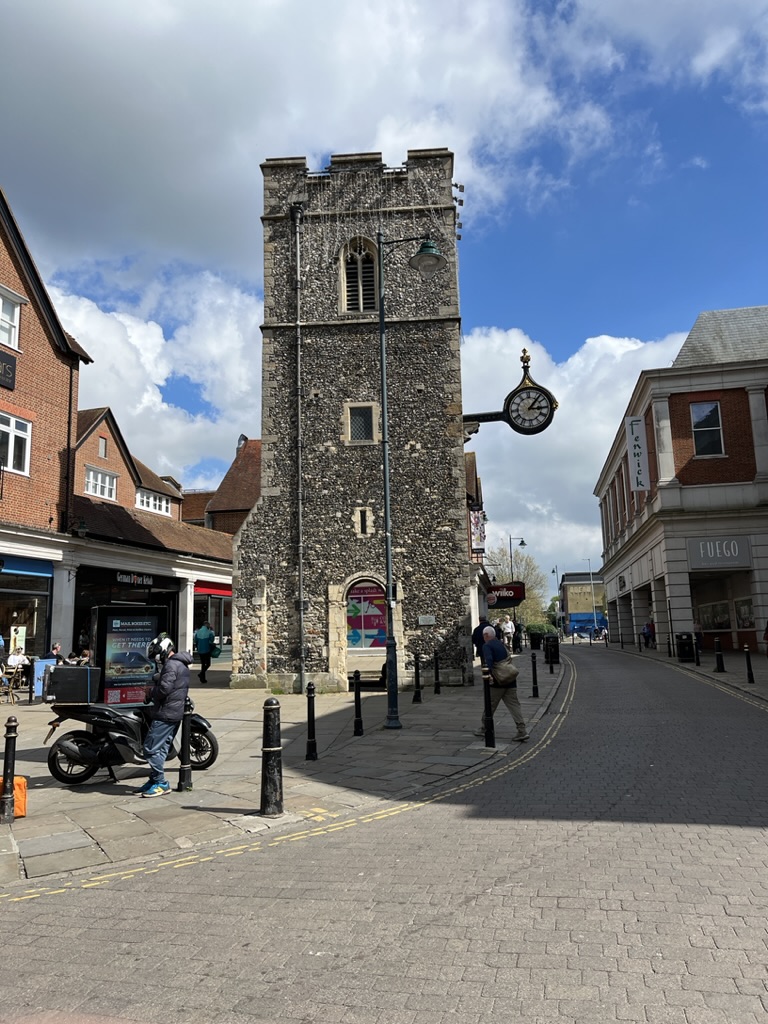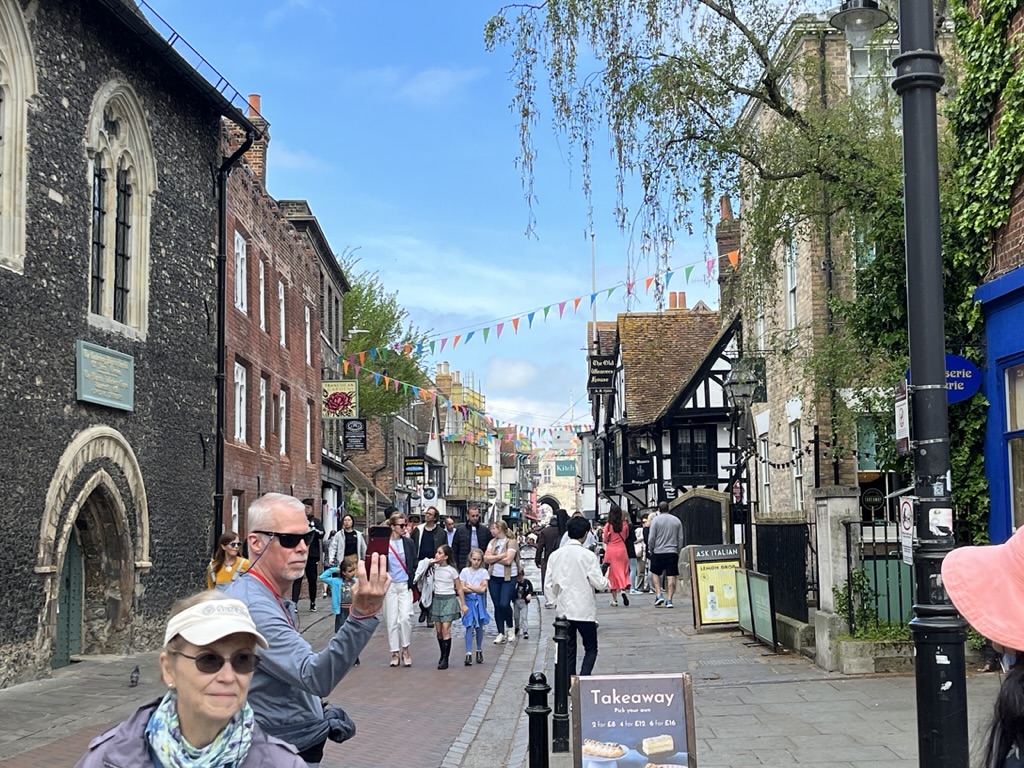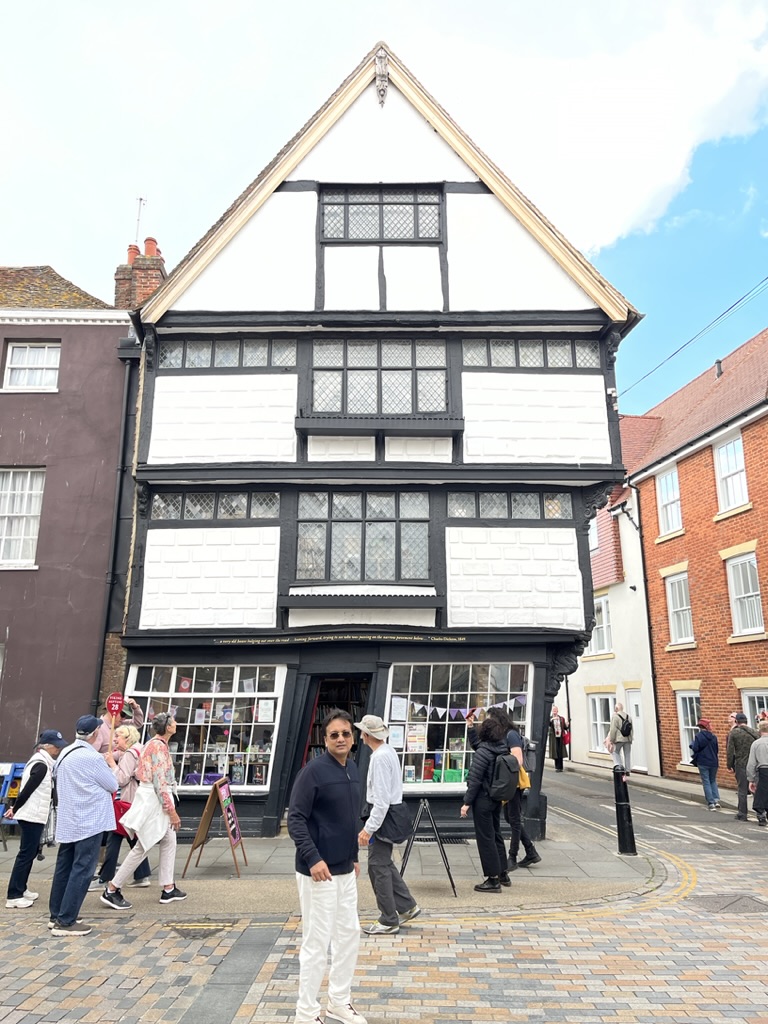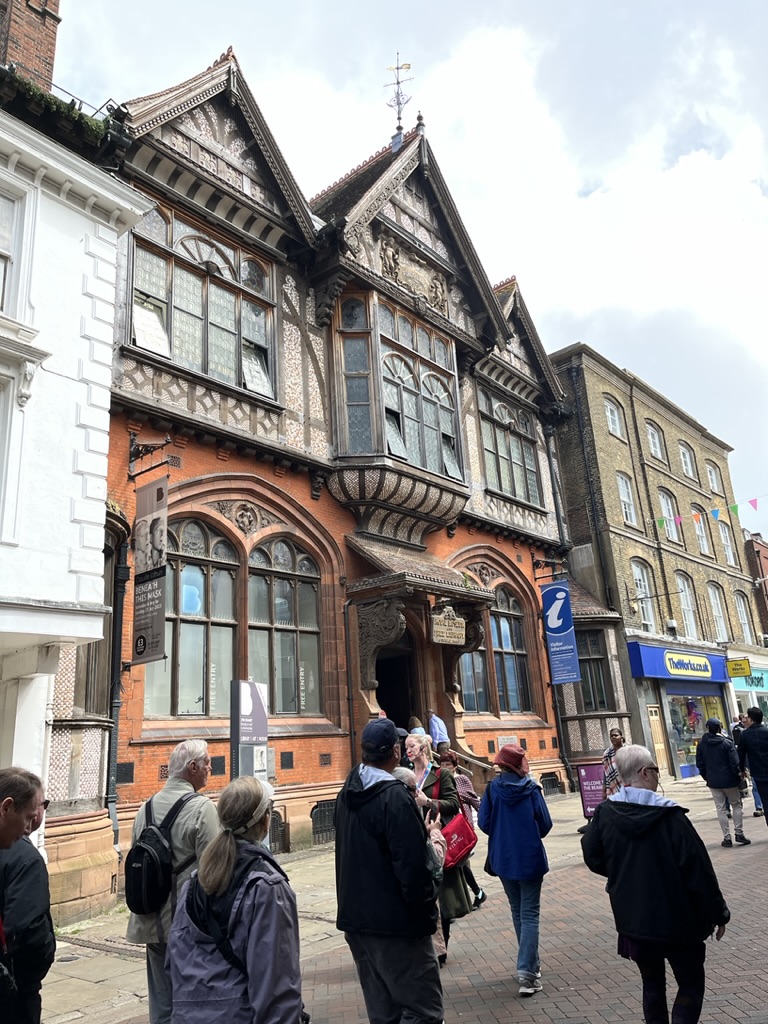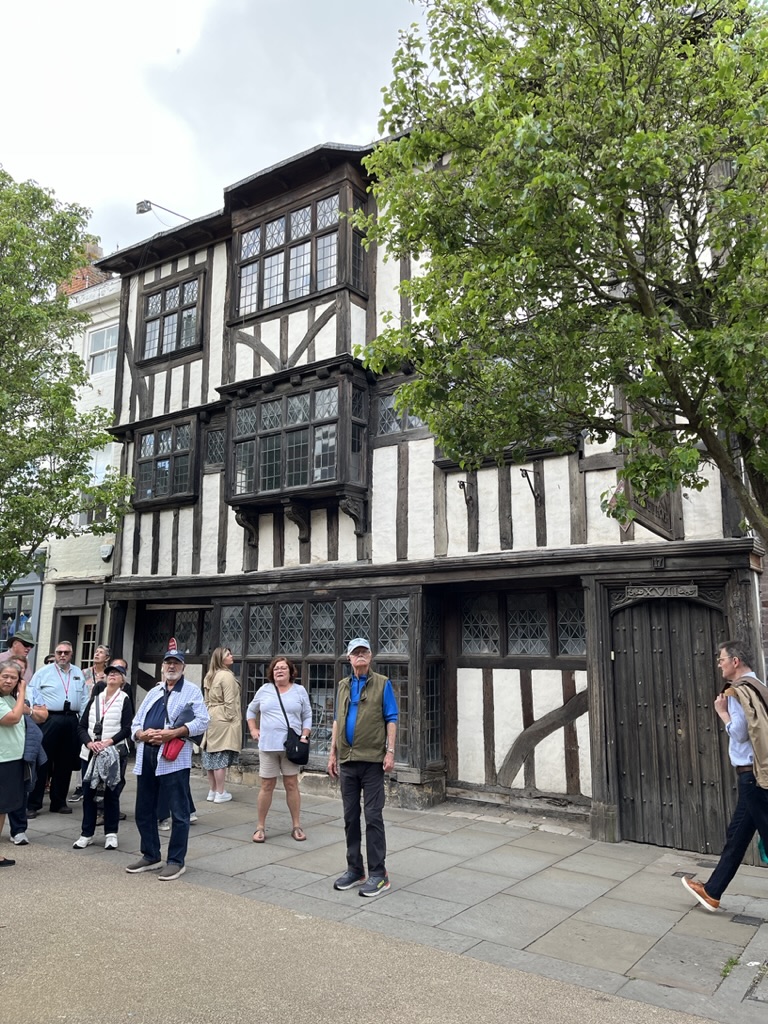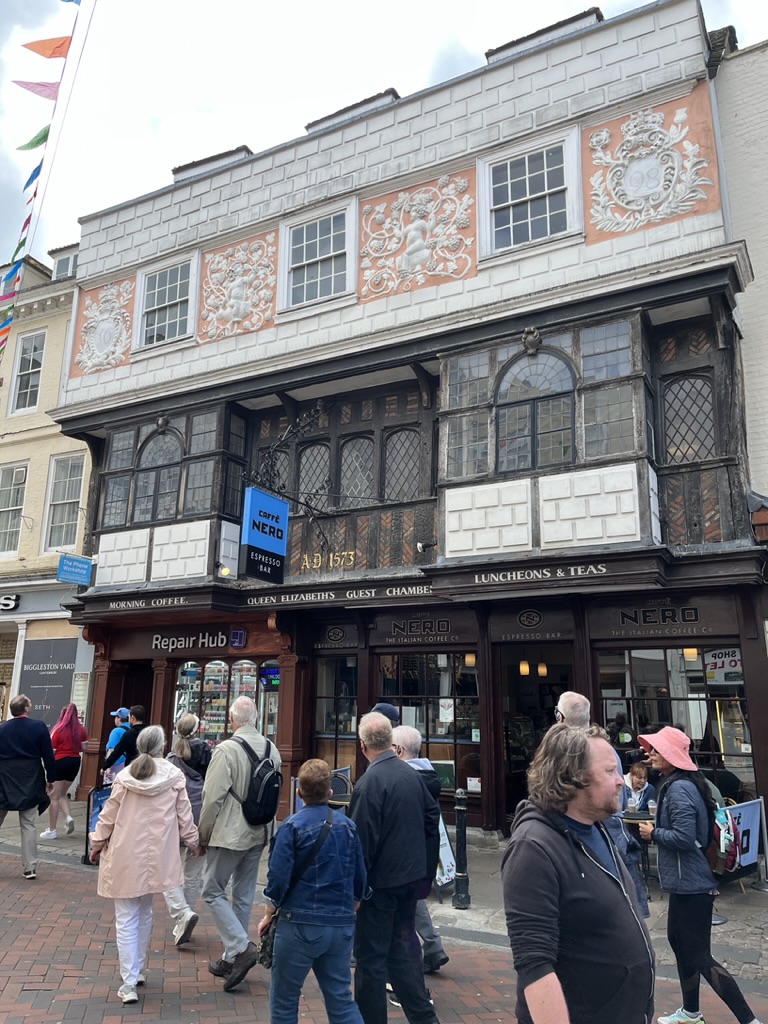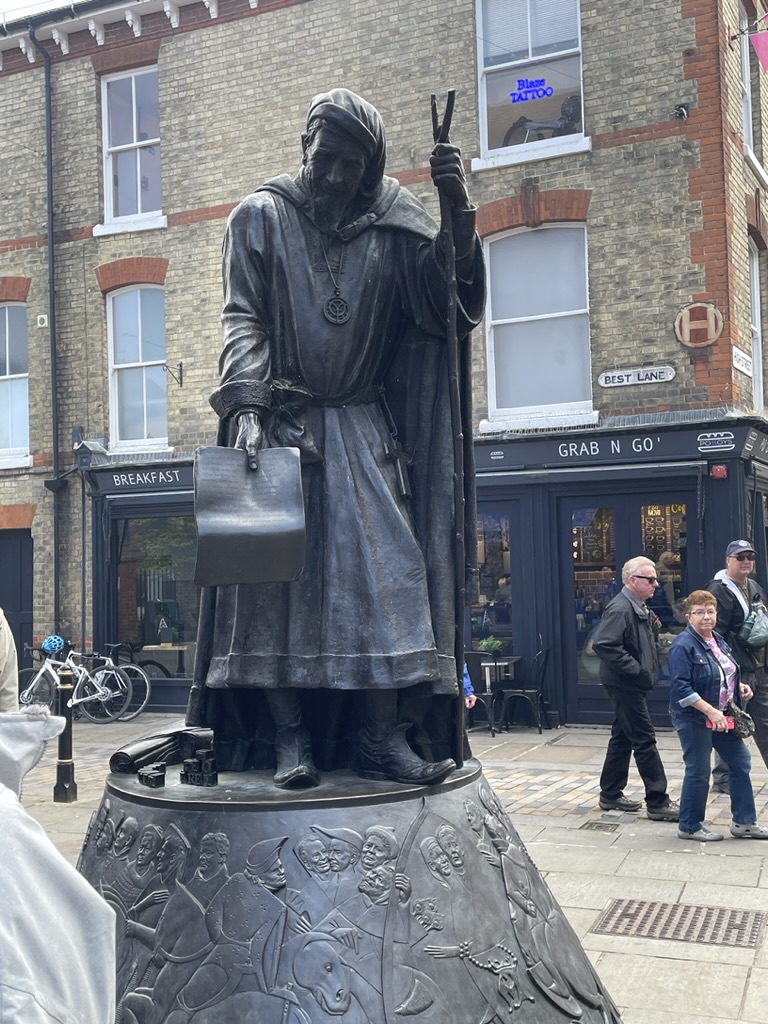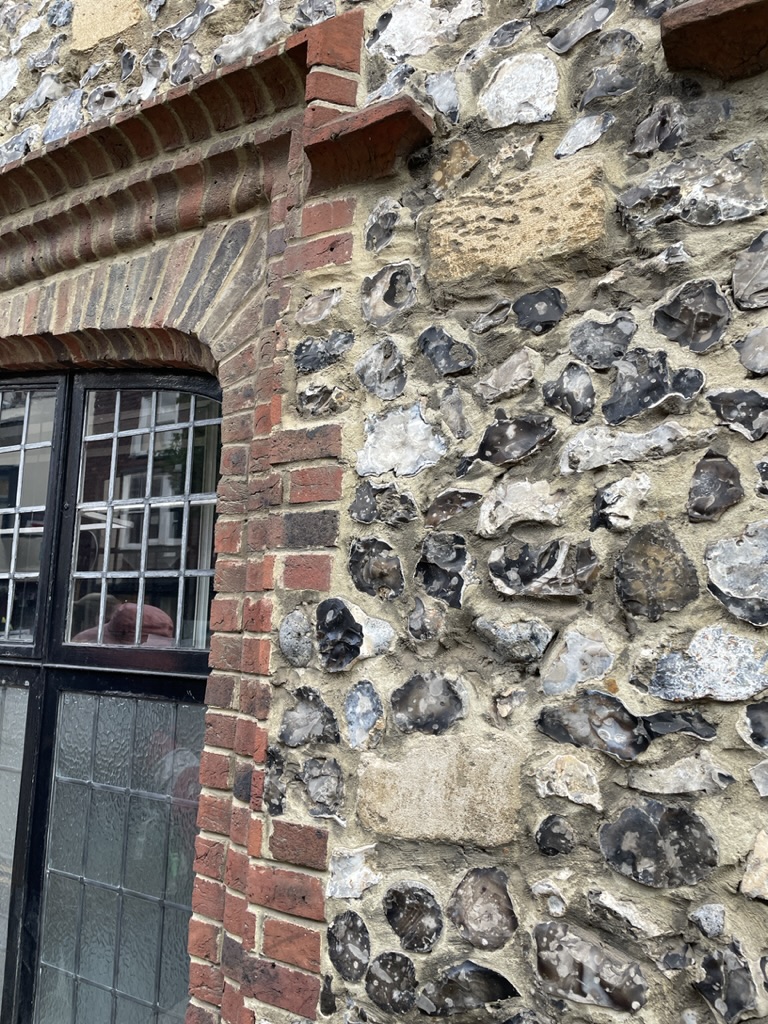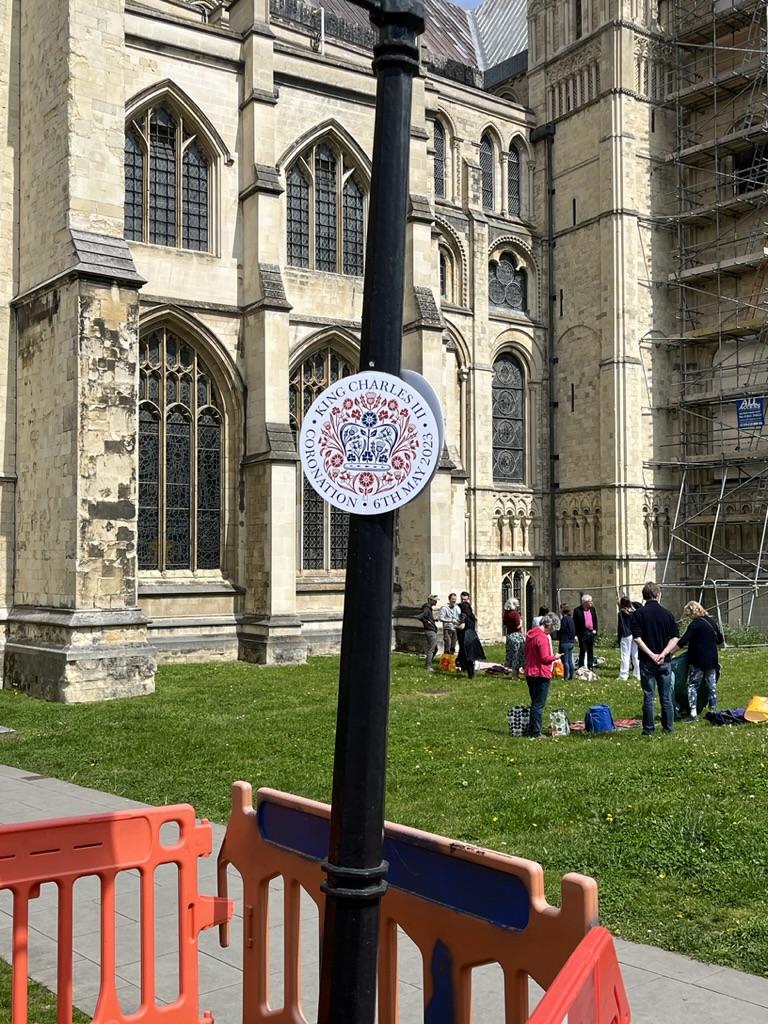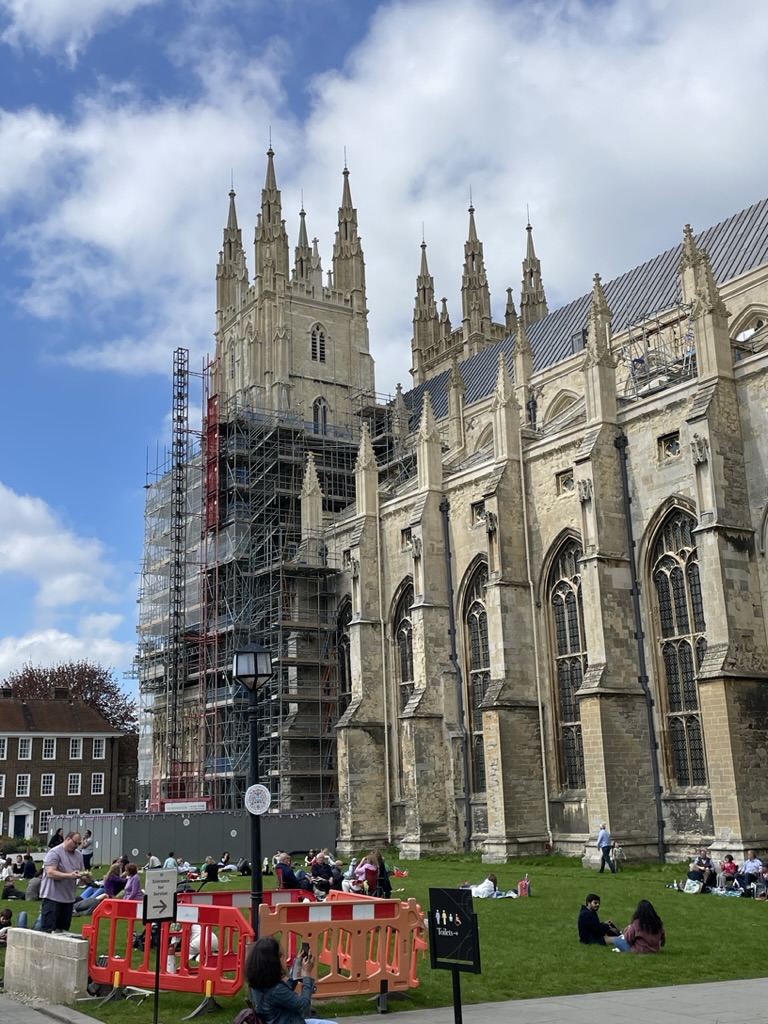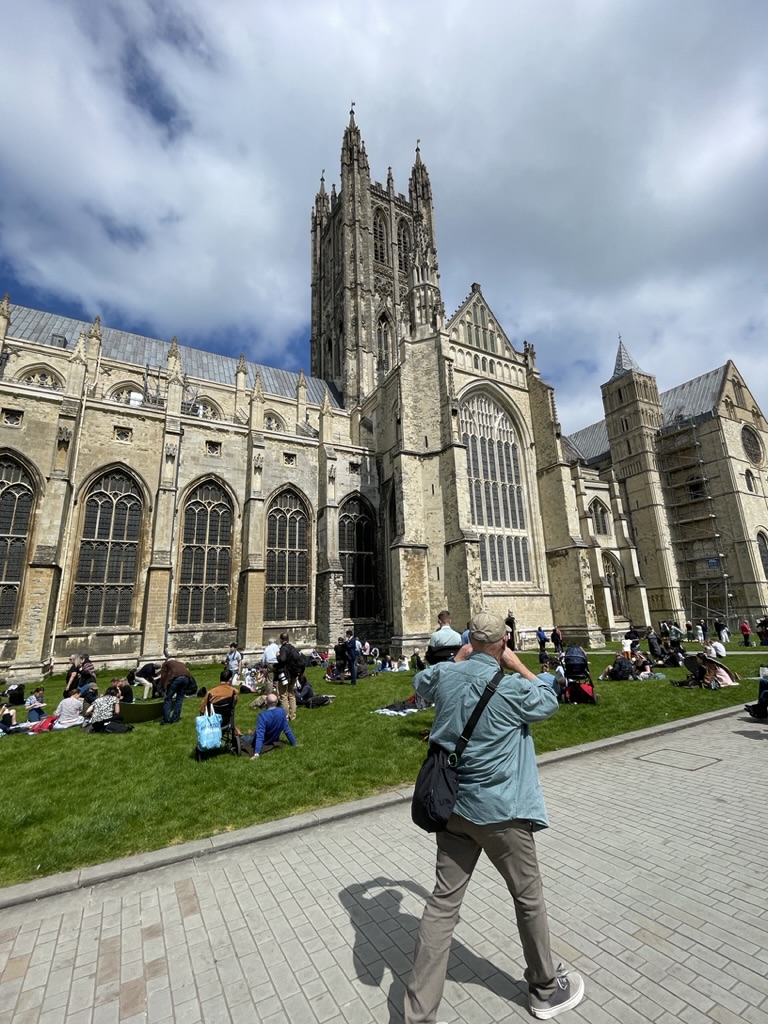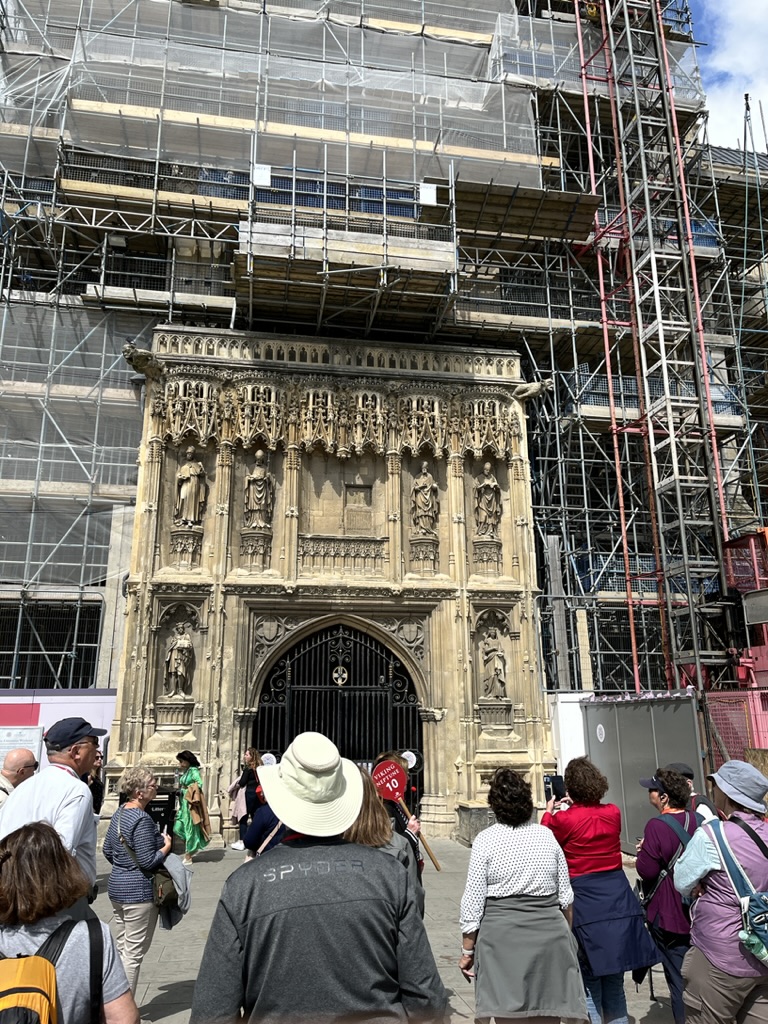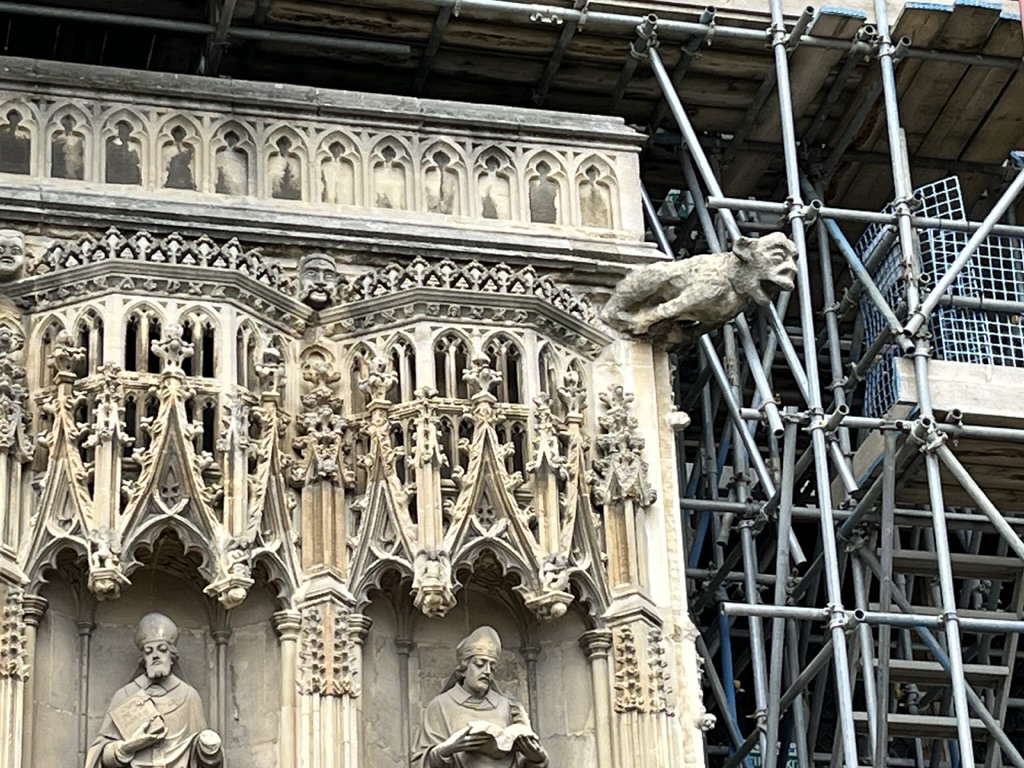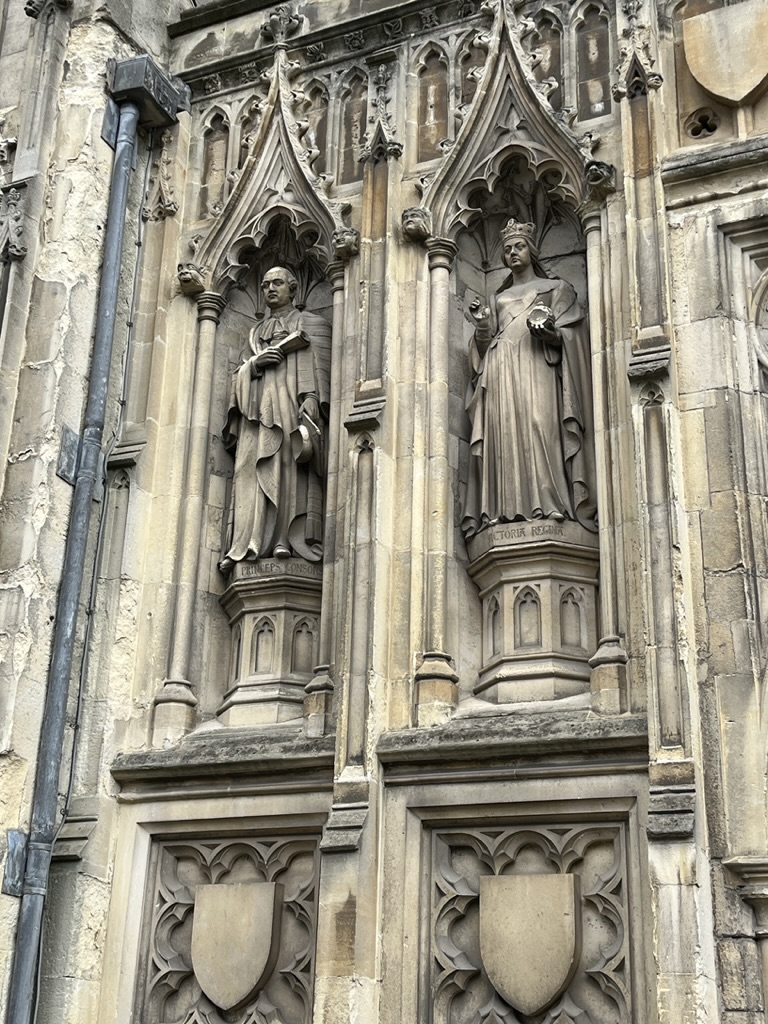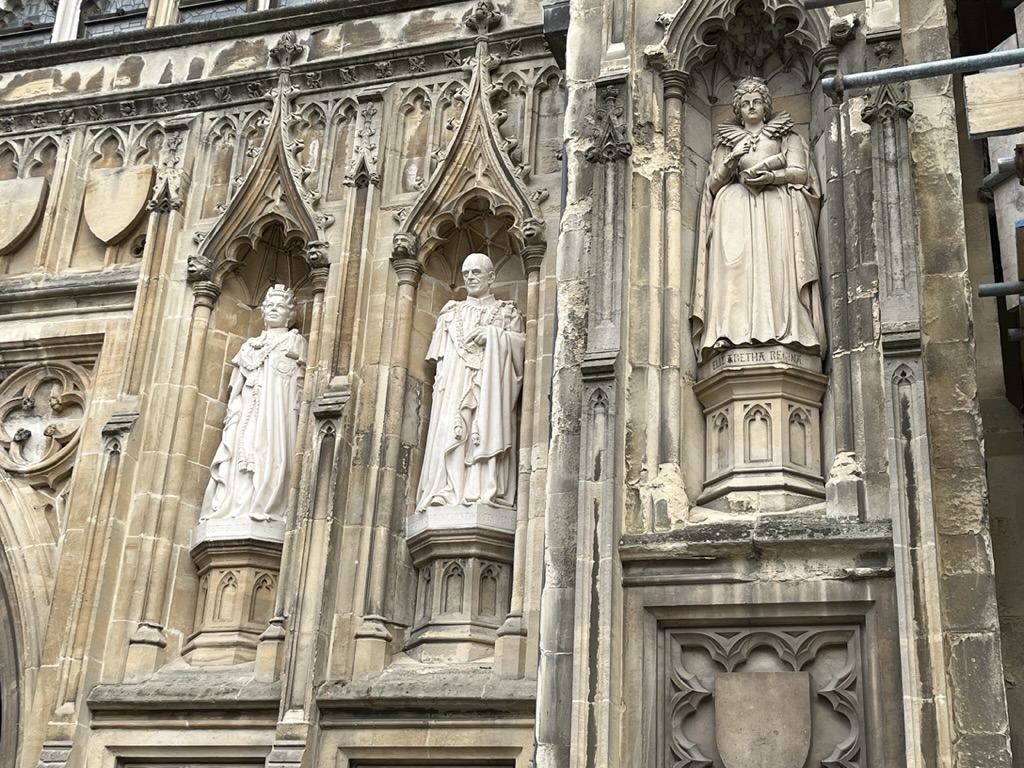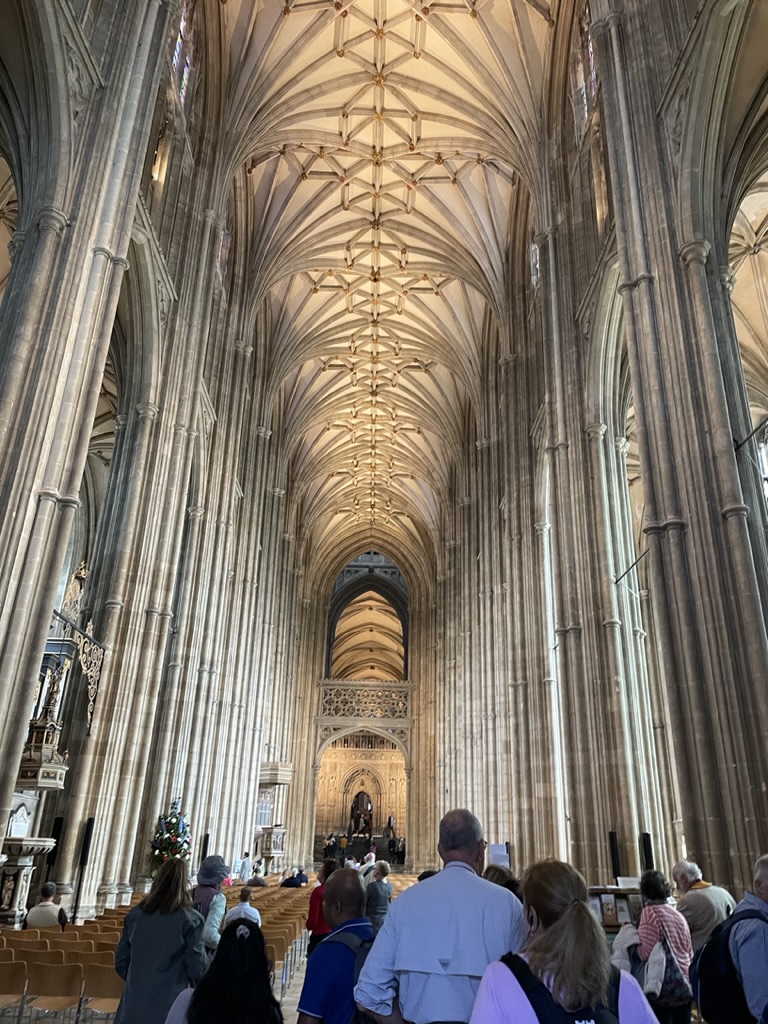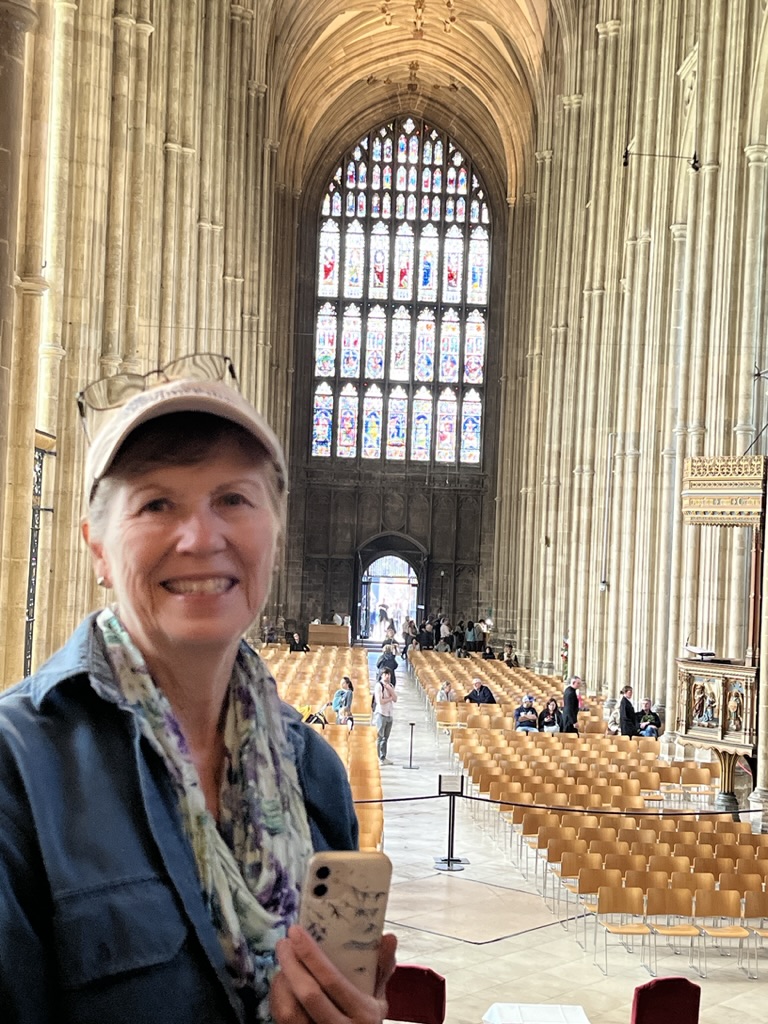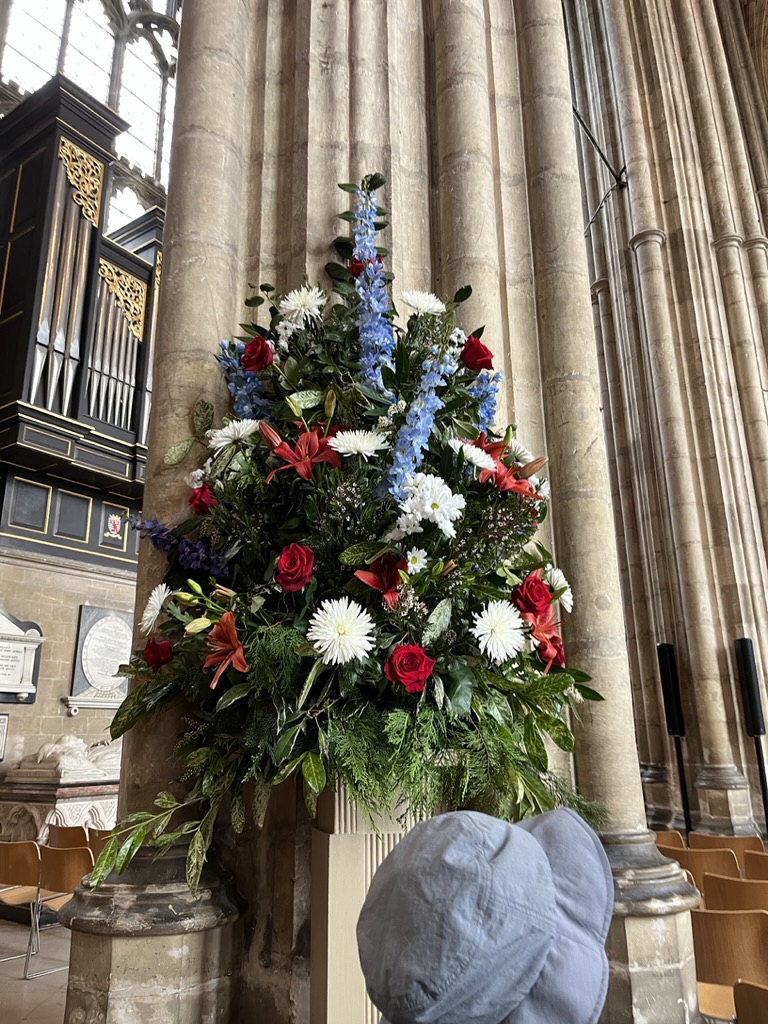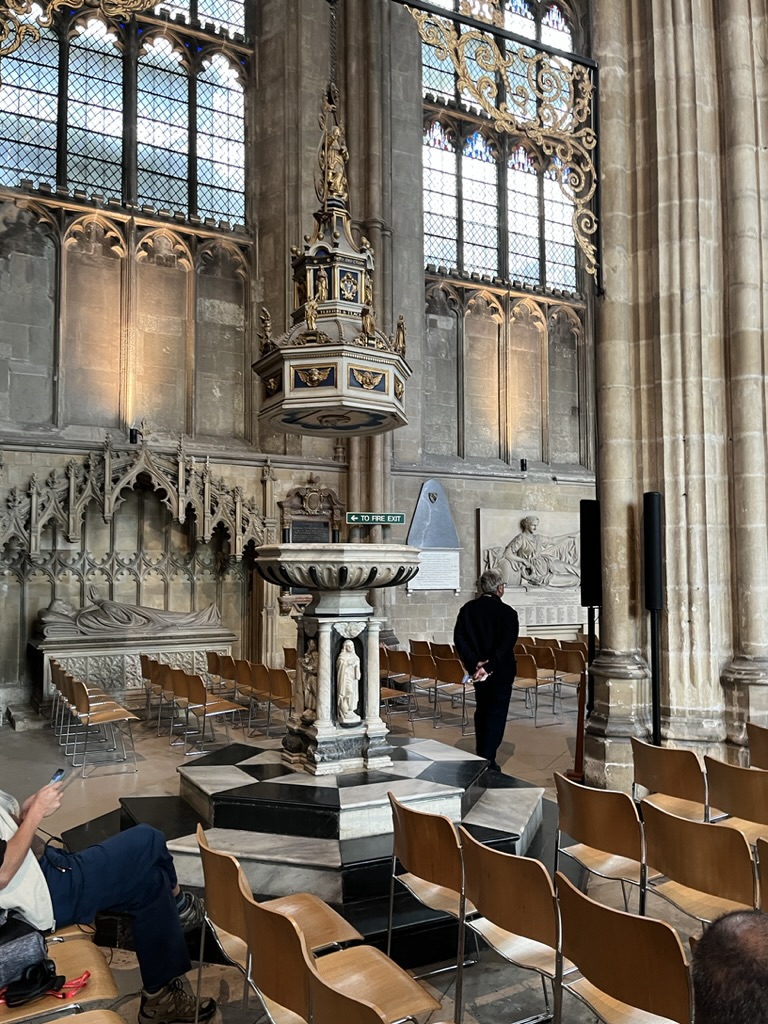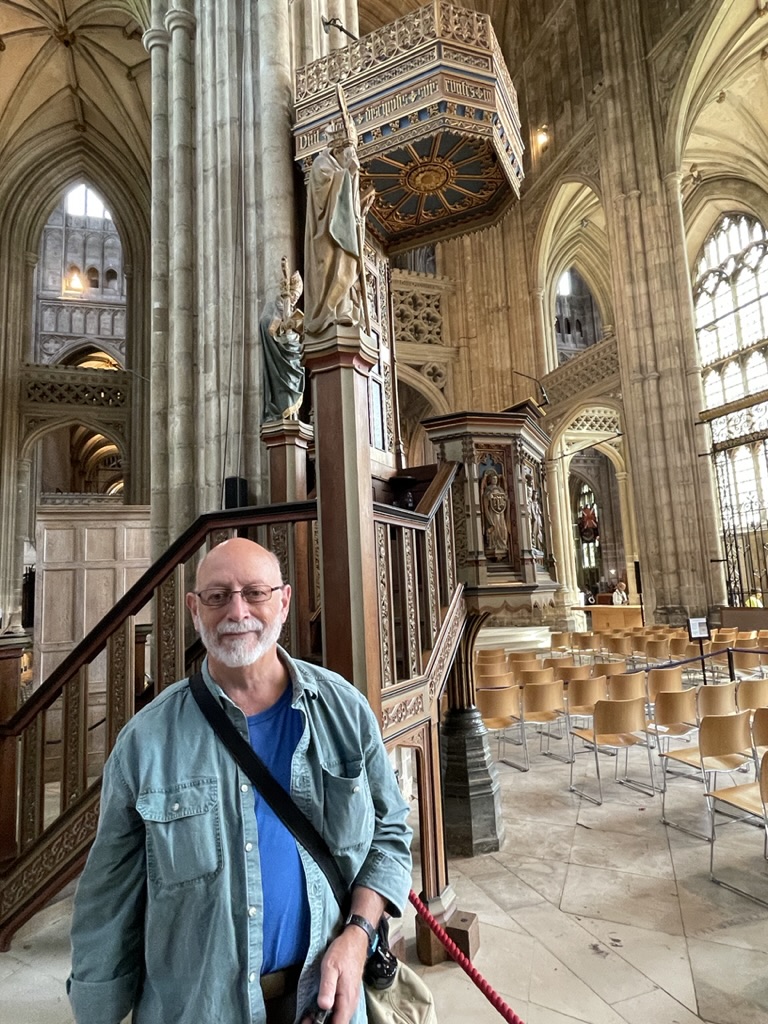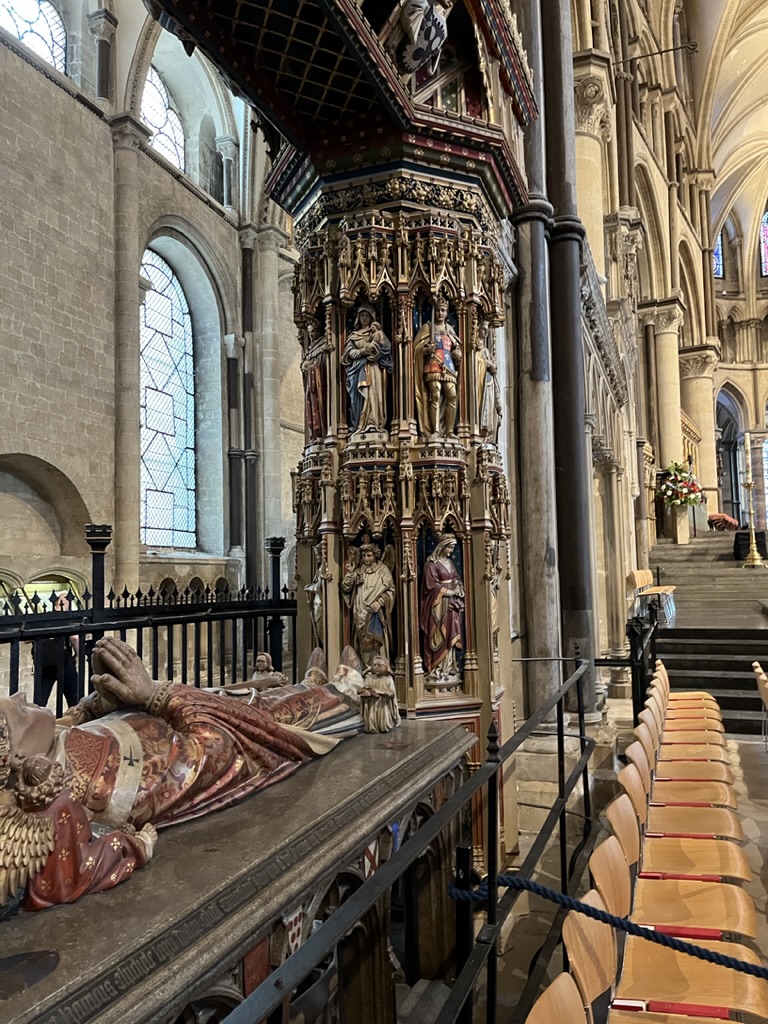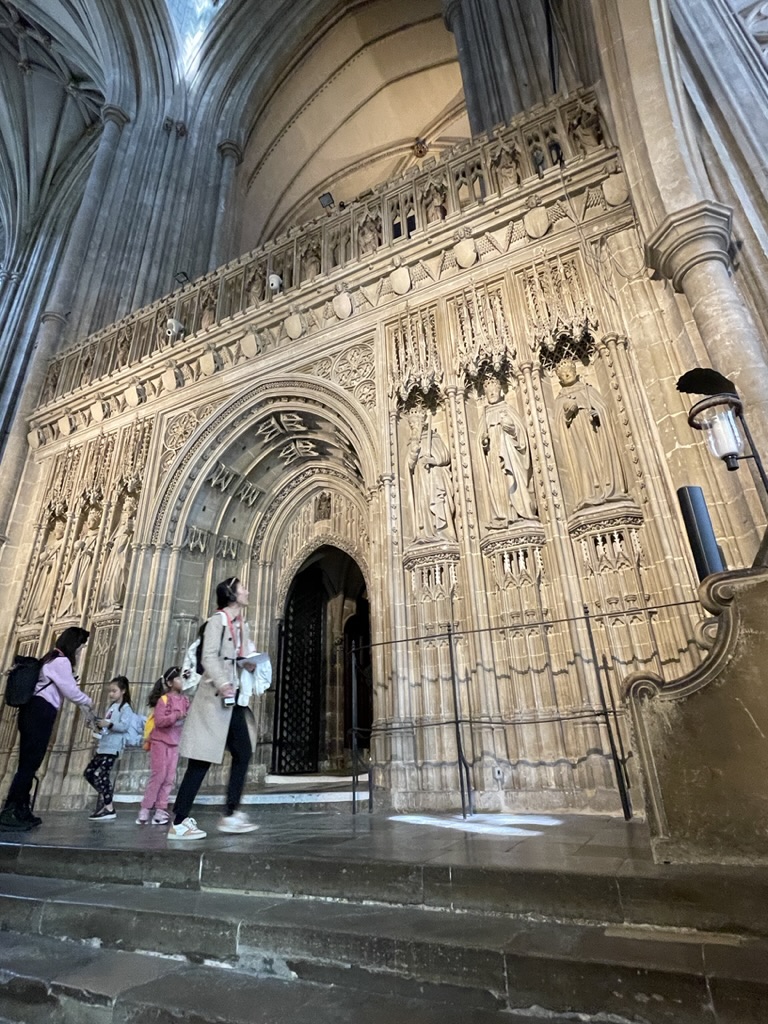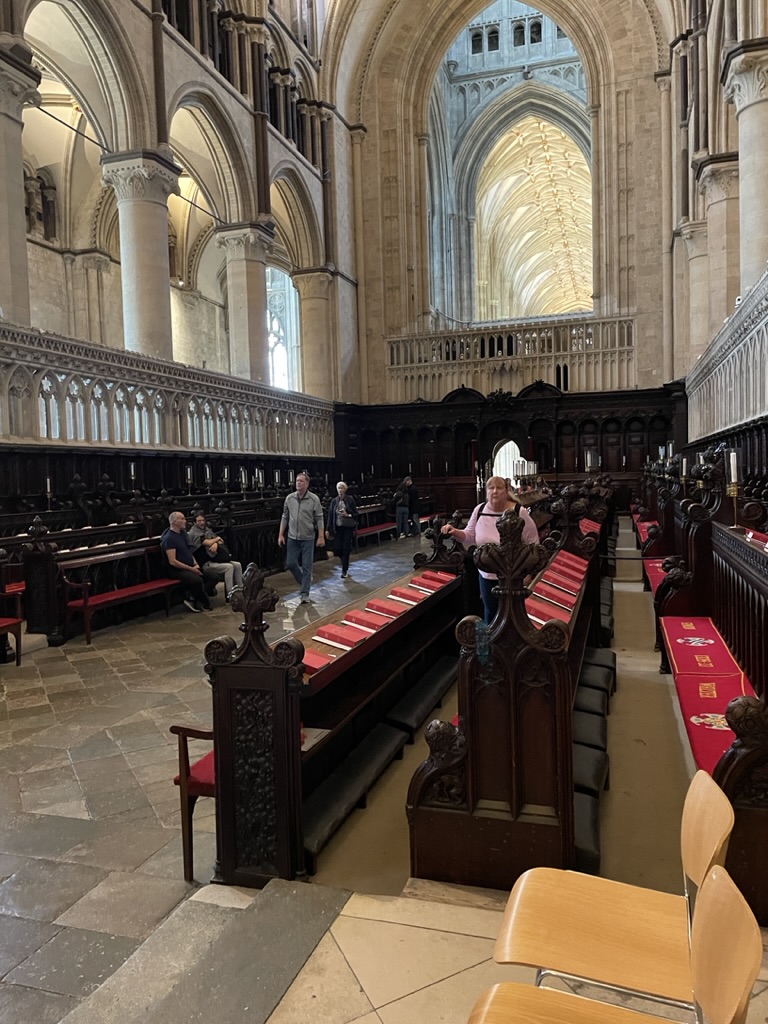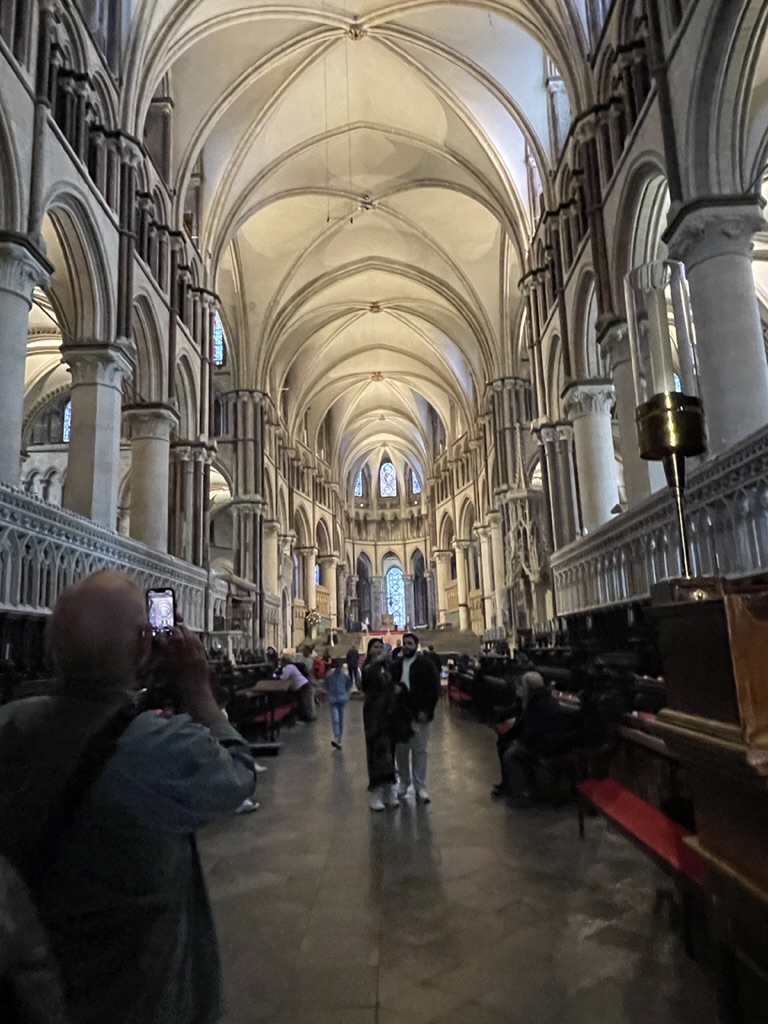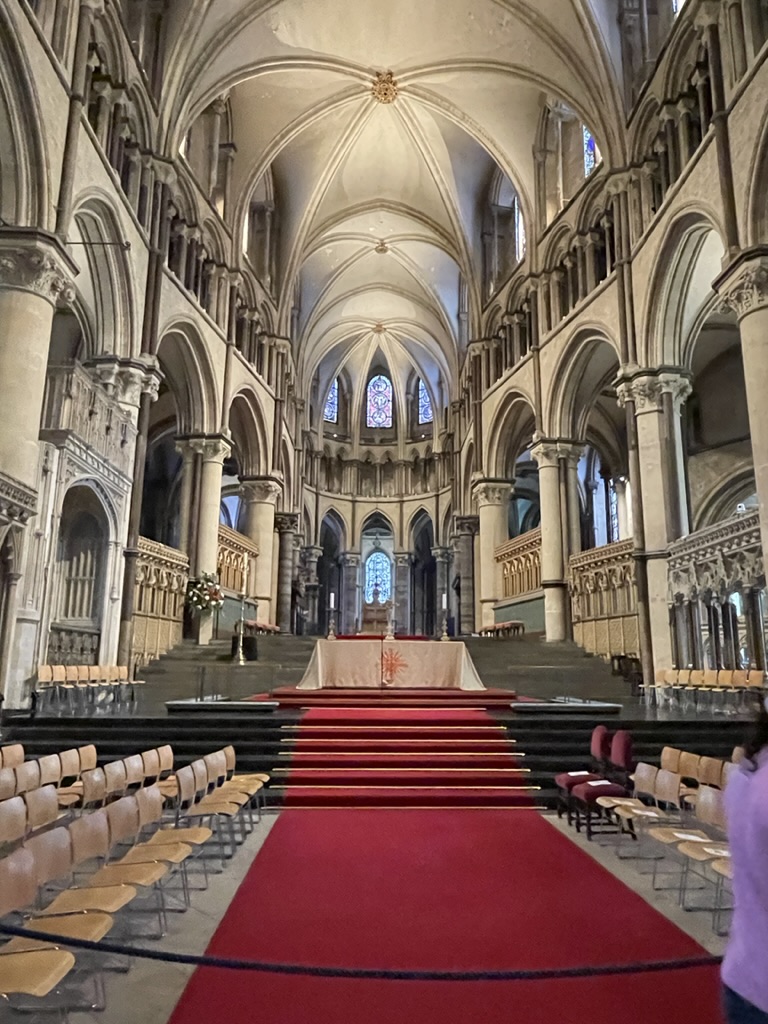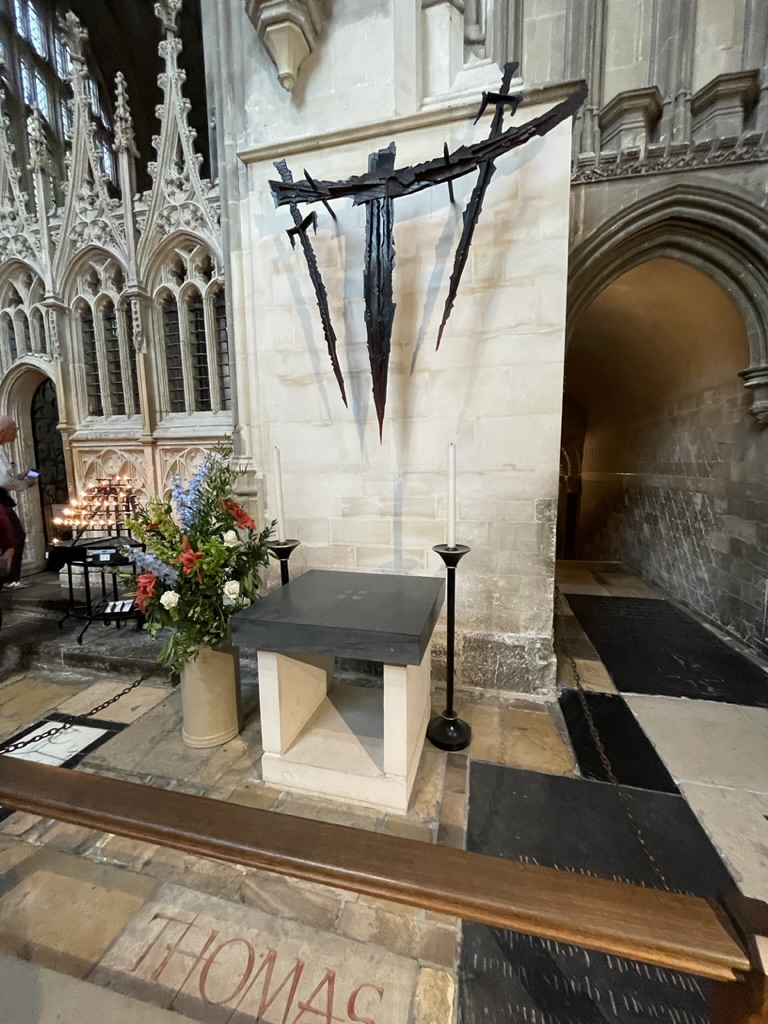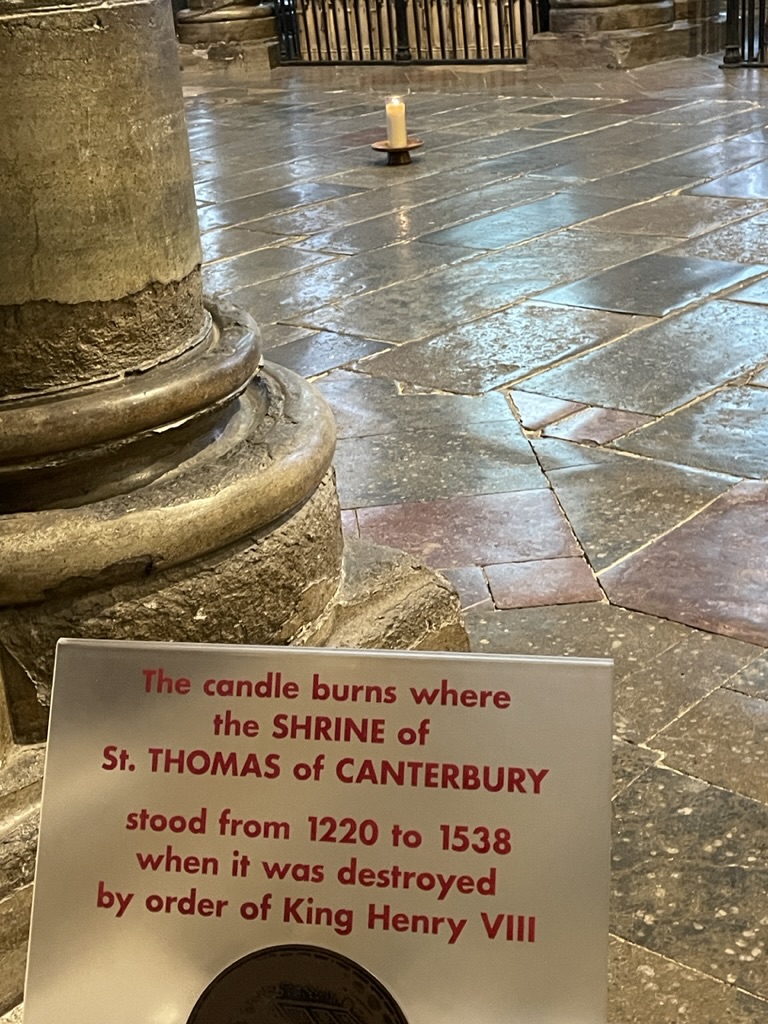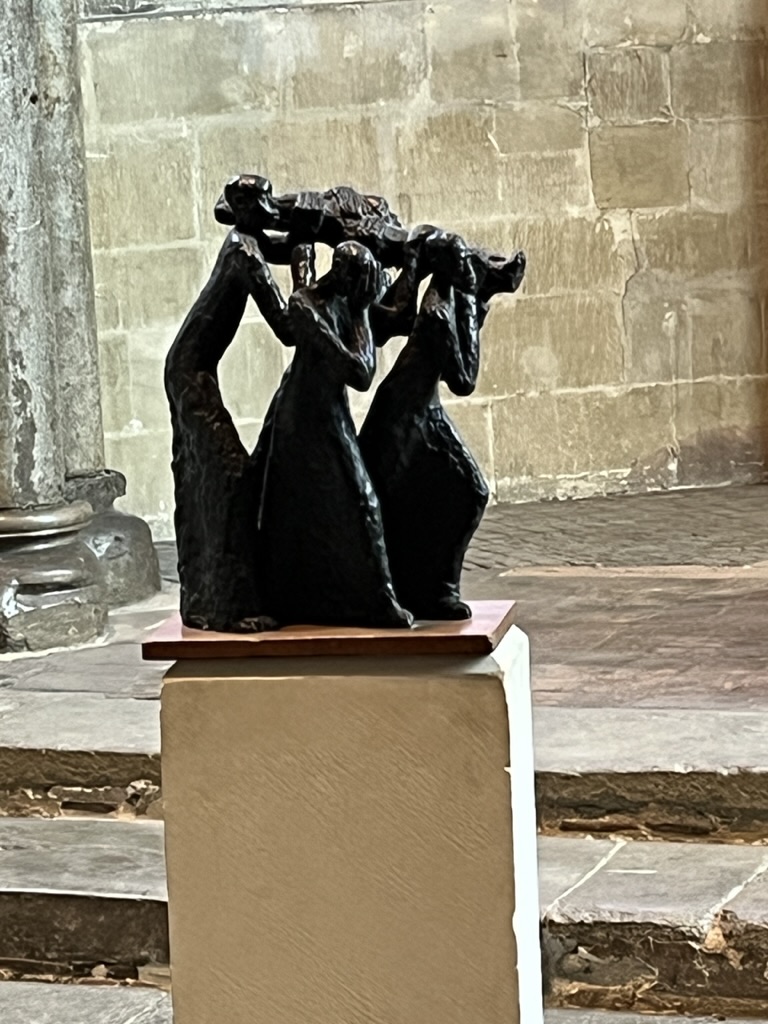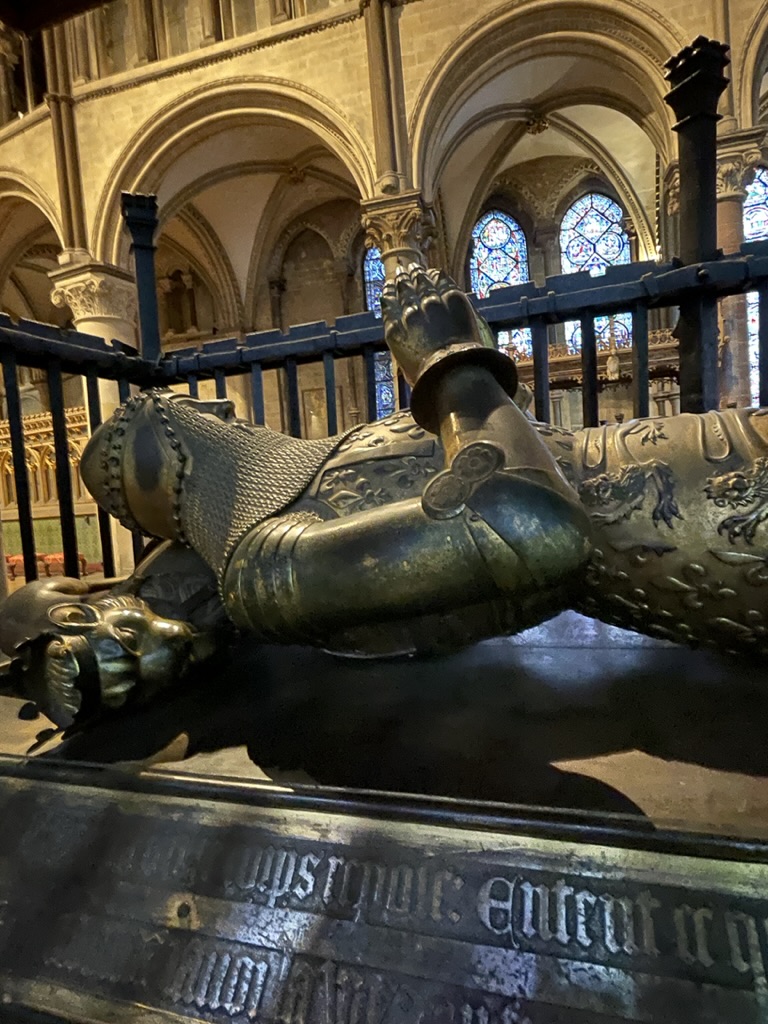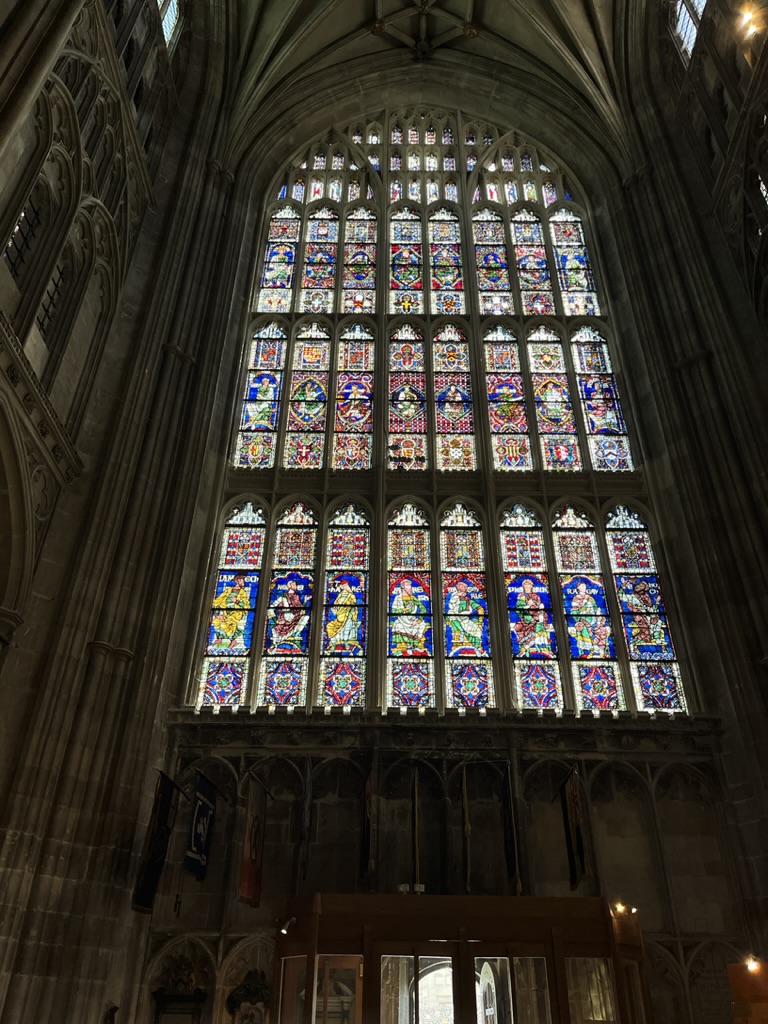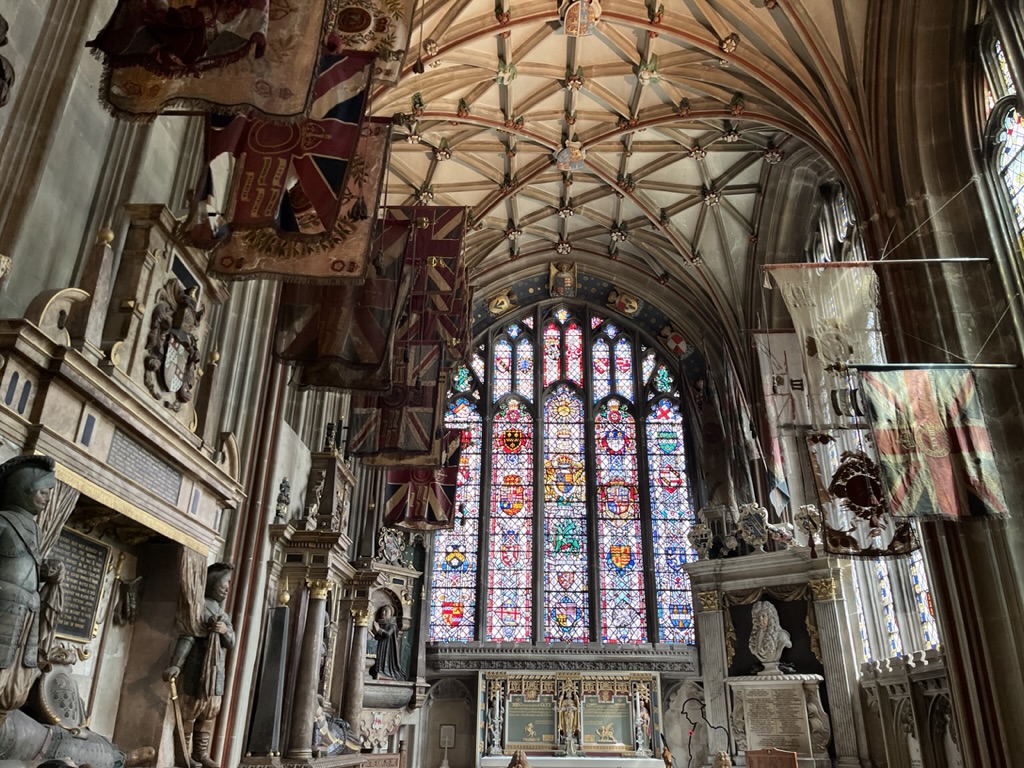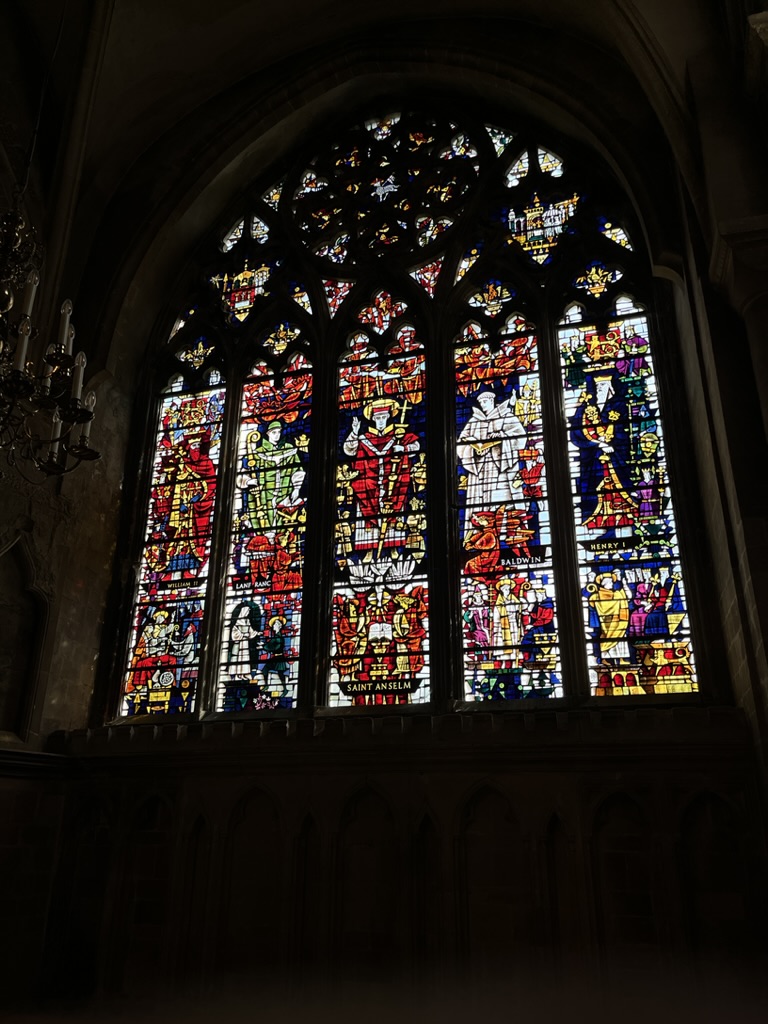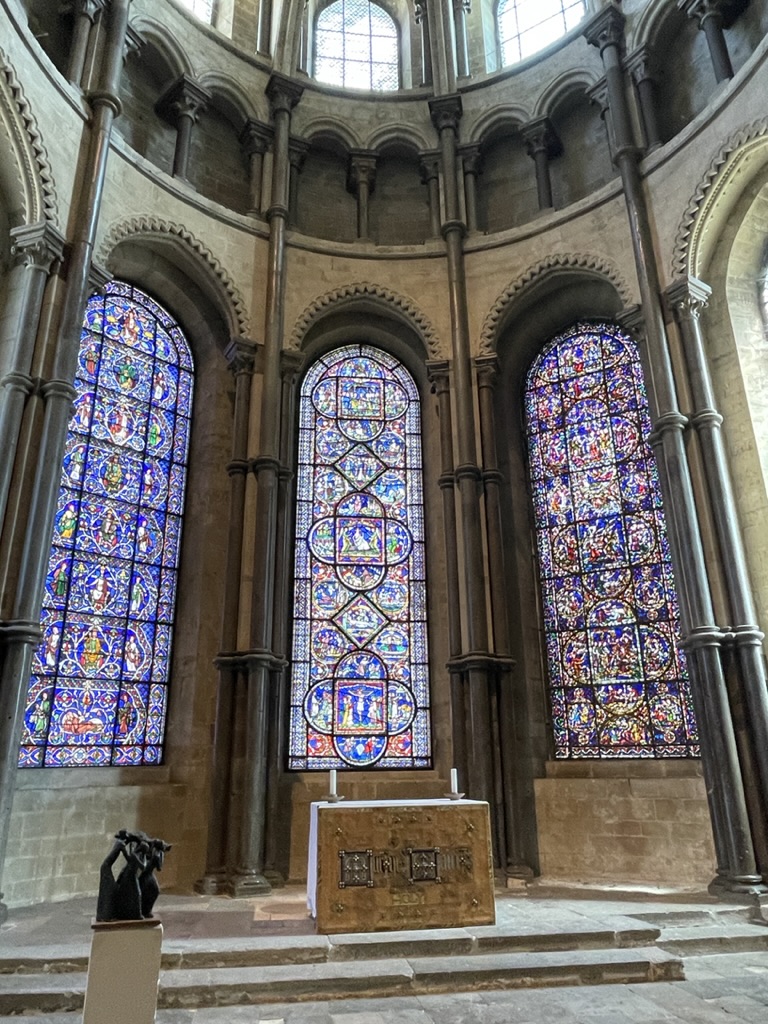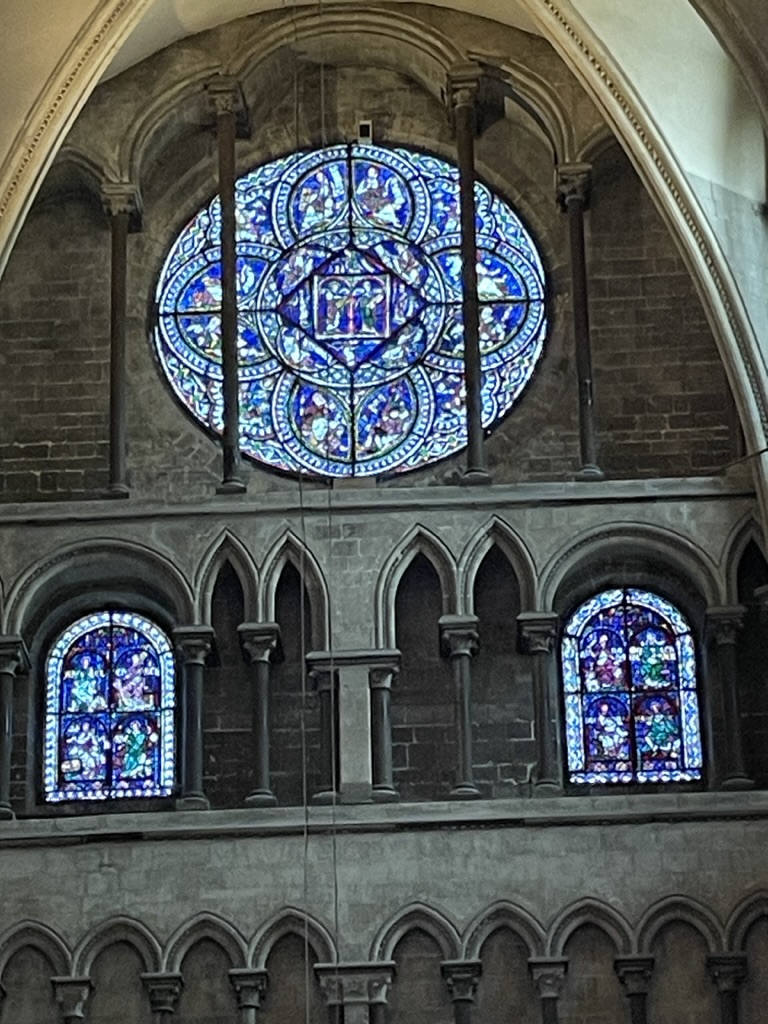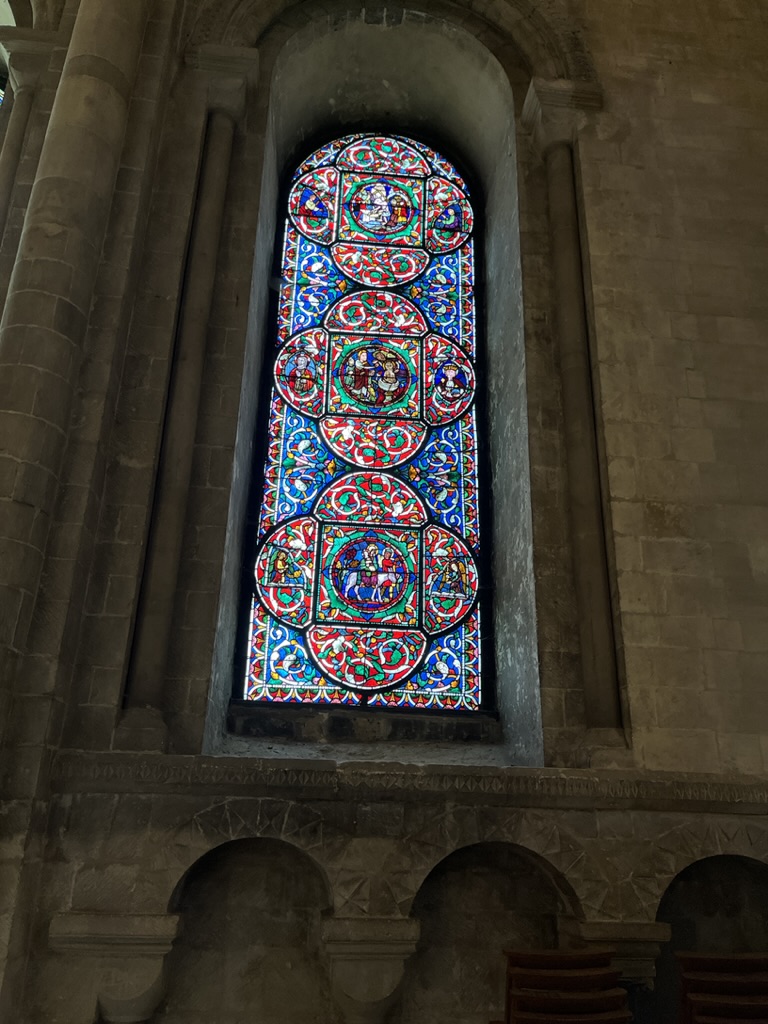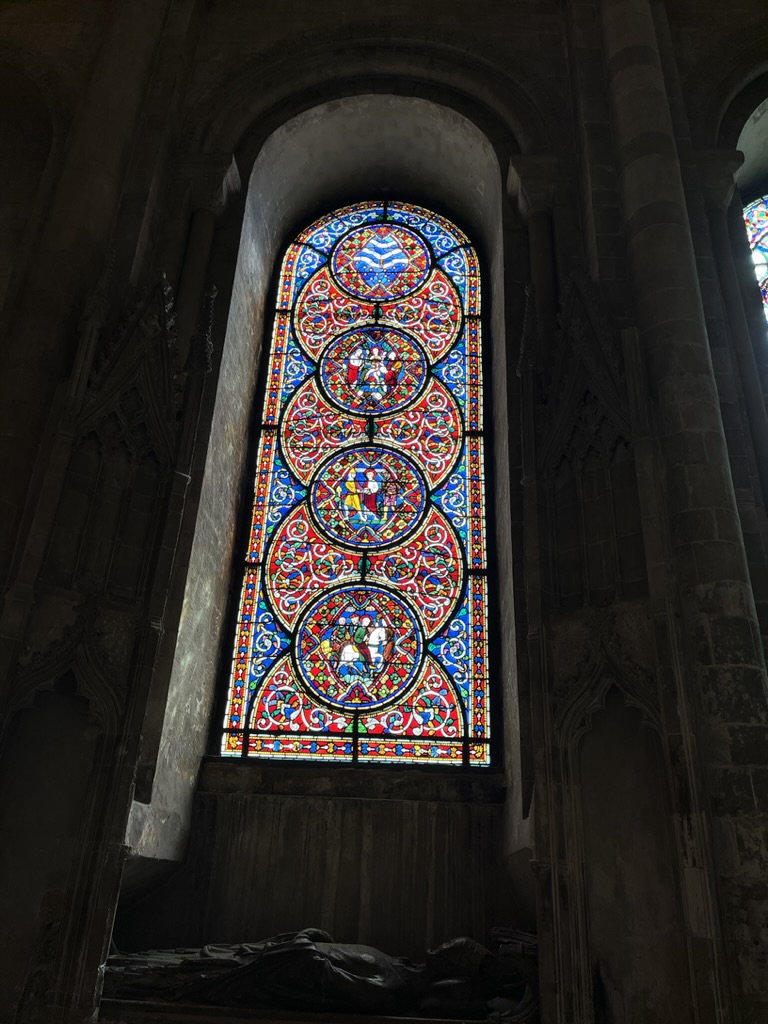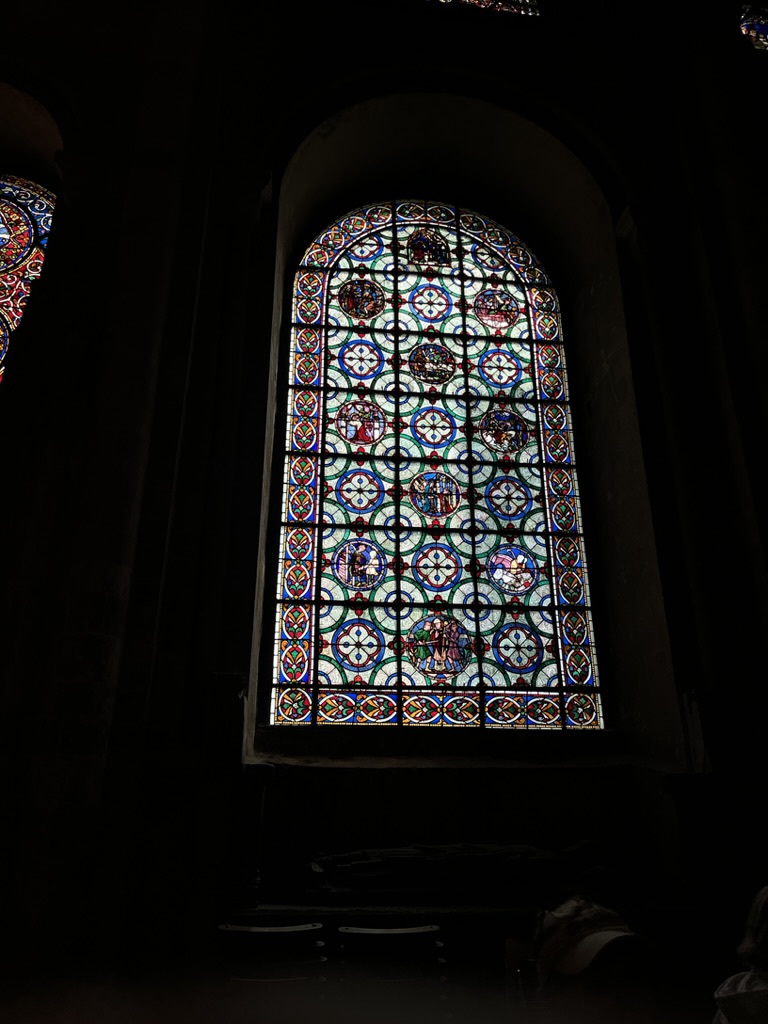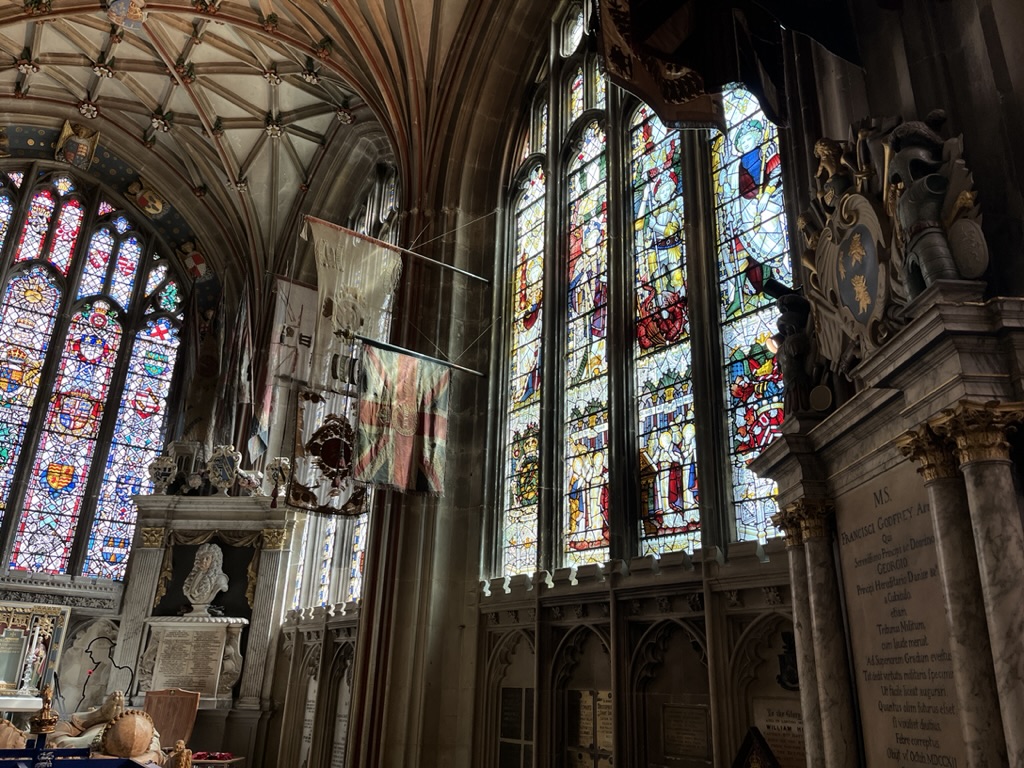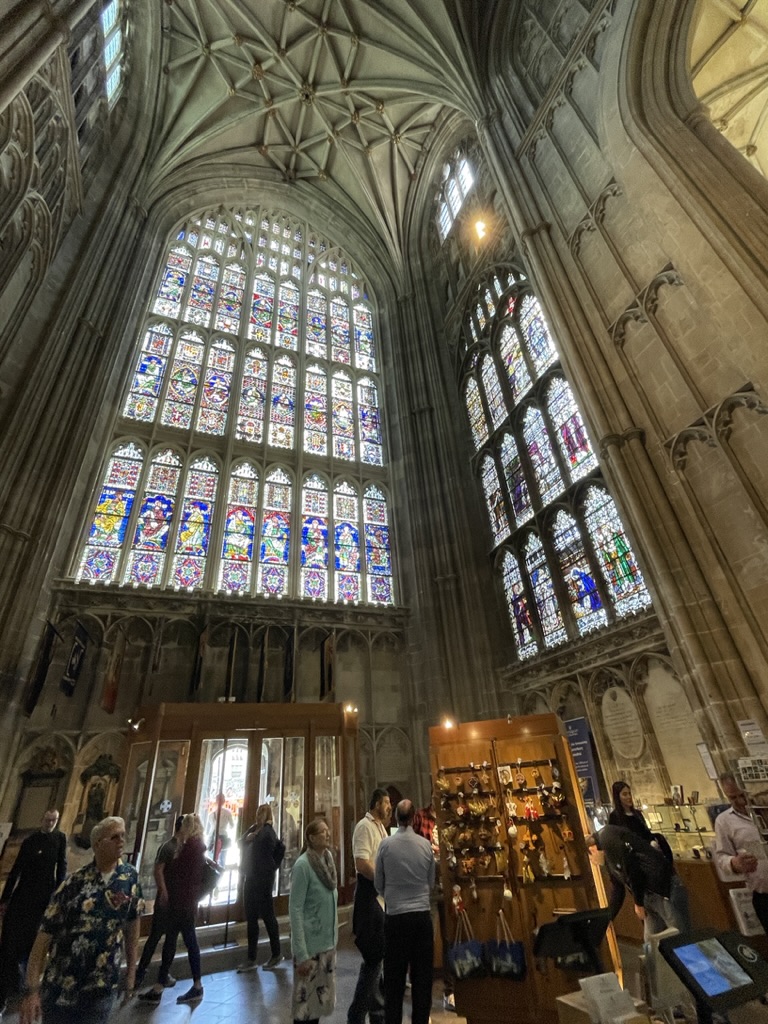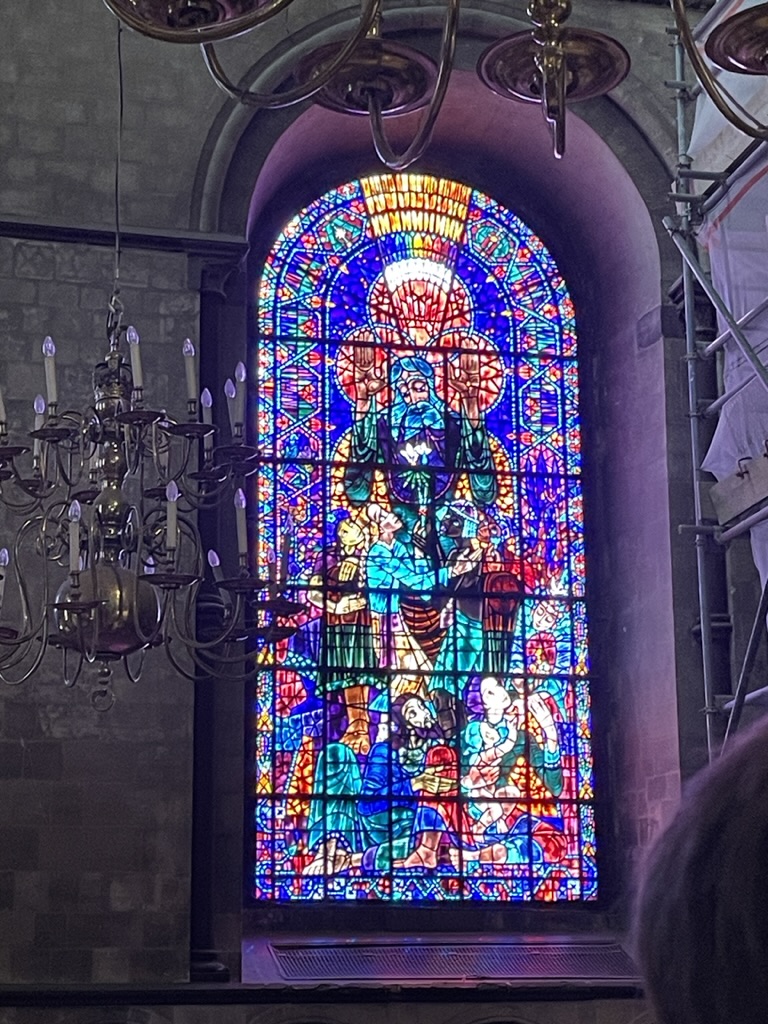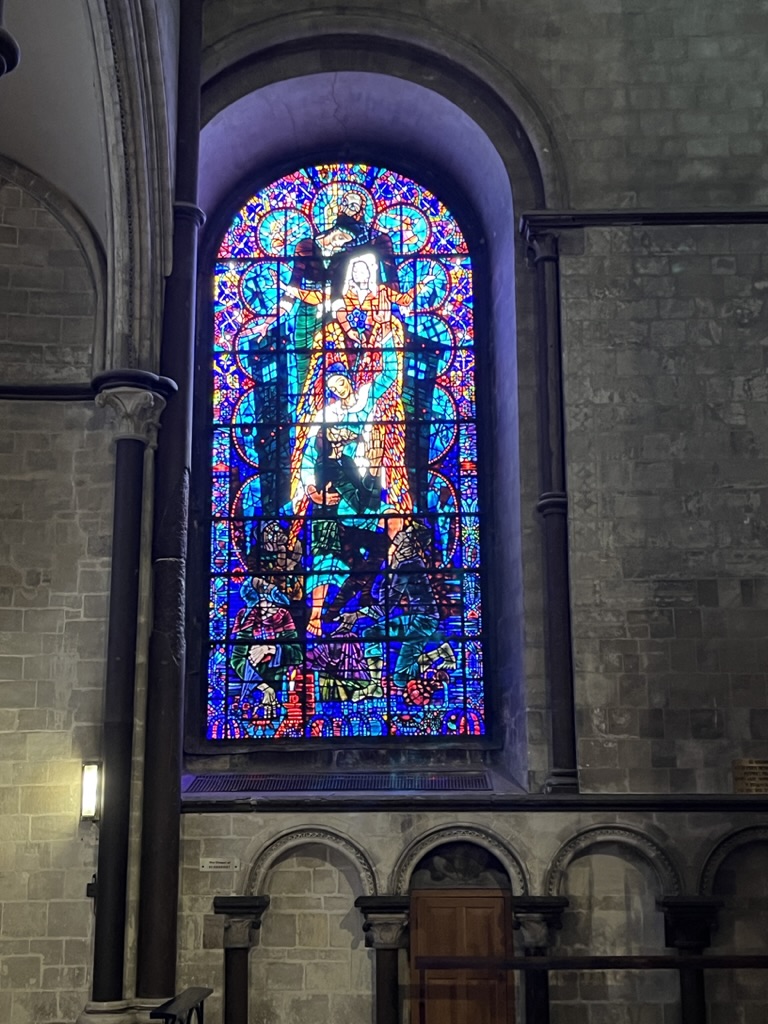Noon Report:
- Location: N 51° 06.73′, E 001° 19.39′
- Speed: Docked
- Course: Docked
- Weather: Cloudy, Occasional Rain
- Temperature: 11º C; 52º F
- Wind: SW 6 knots; 7 mph
We woke up this morning docked in Dover.
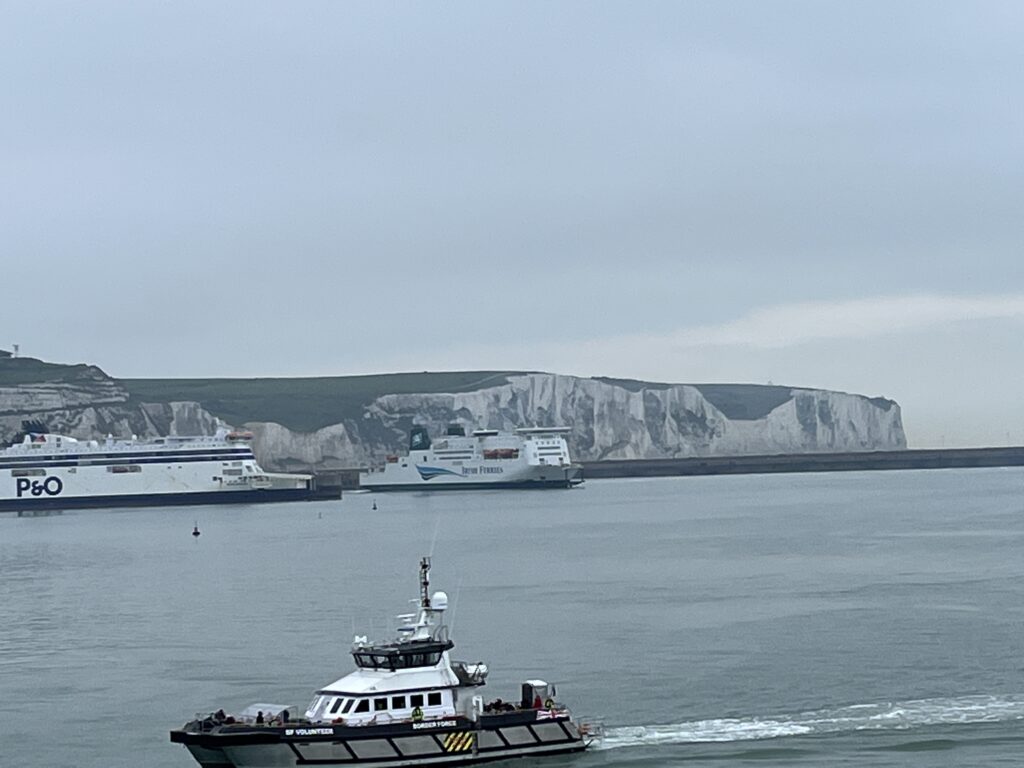
Our excursion didn’t leave until 8:45 so we had a bit more time for a leisurely breakfast before throwing stuff in the day bag and heading out. Lines getting off the ship were a bit long as we had to do a face-to-face with the passport control folk. But we were on the bus and on the road not too much later. As we drove along the seaside, we could see lots of air ducts sticking out of the ground. This is because there are miles of underground defensive tunnels all along the shore. As Dover is only 20 miles from France, this is where a lot of invasions have landed.
The Kent countryside is beautiful – green and lush (they’ve had a very cool, wet spring).
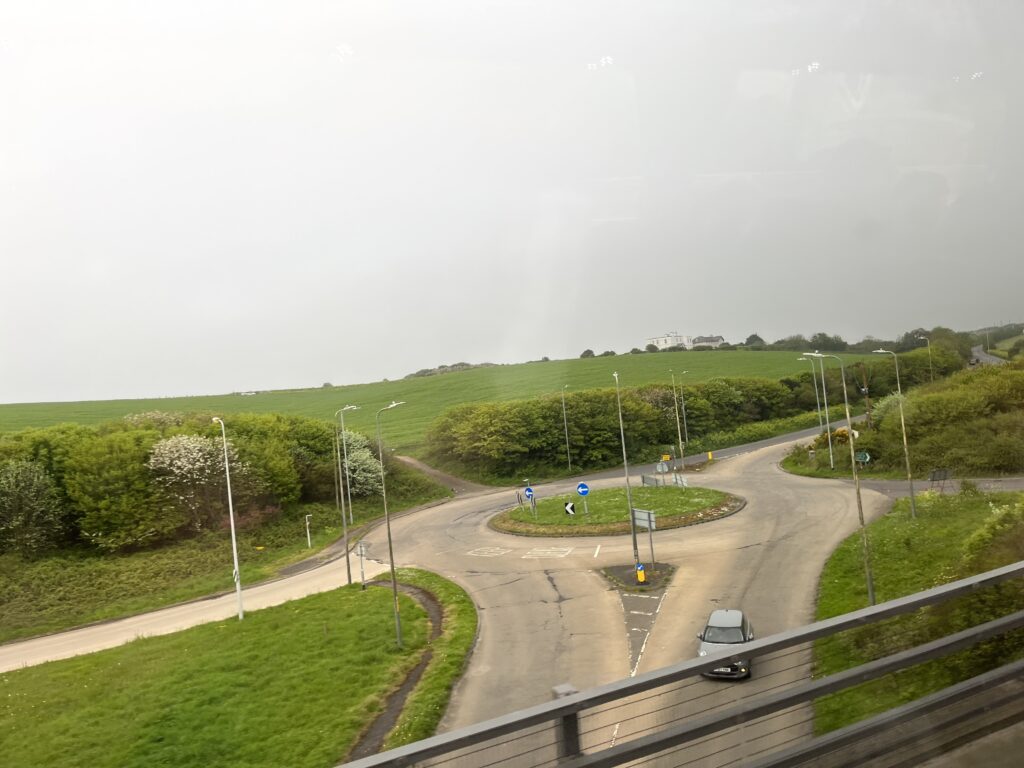
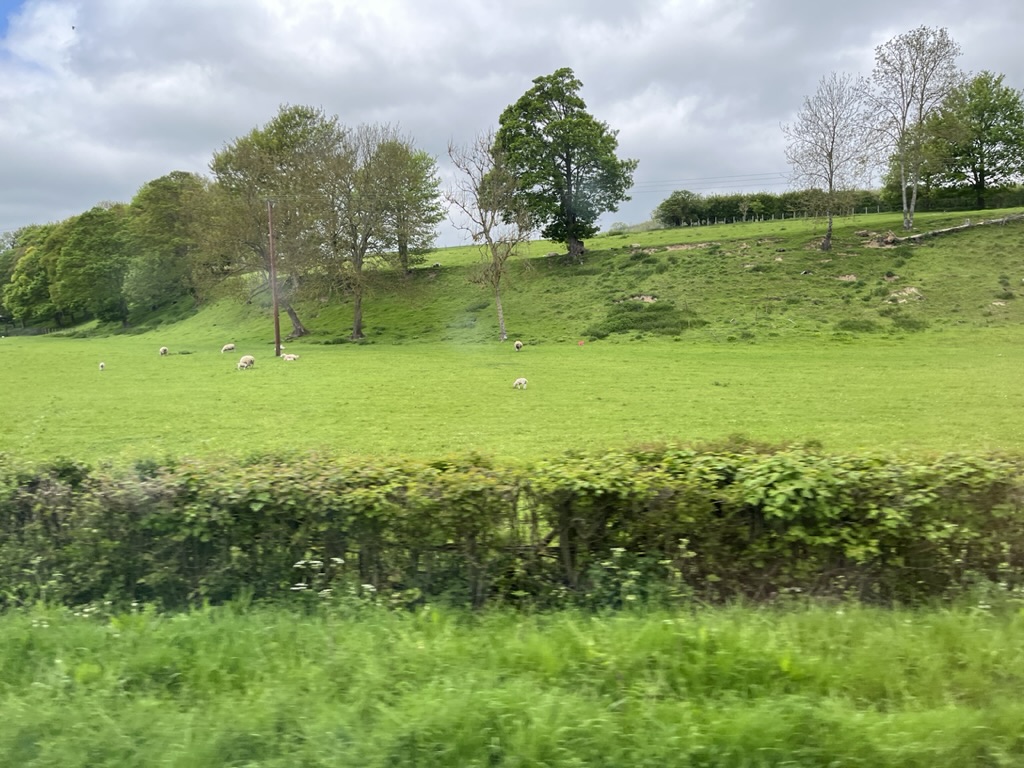
And our guide “Leo” sang its praises as well as talking about its significance in the history of Britain.
About an hour later we arrived at Leeds Castle, one of the best preserved castles in the country. A castle has existed on this site since 857 AD. In the 13th century it was a favorite residence of King Edward I.
In the 16th century Henry VIII gave it to his first wife Catherine of Aragorn (the first of 6 royal wives to be gifted the property). It later fell into disuse and became run down, but in 1924 it was purchased by the Honorable Olive, Lady Baillie (very rich). She undertook extensive renovations and restoration of the castle (even adding electricity and central heating) and development of the grounds. Under Lady Baillie this was a party palace – including a golf course and a heated swimming pool. Upon her death the castle passed to the Leeds Castle Foundation, a private charitable trust, who maintains the castle to this day. They raise money by putting on several entertainments a year and use the grounds for various fun vacation activities for families to enjoy.
Here are a few photos of the castle:
A few notes:
- After Henry VIII split with the Roman Church most Catholic art was destroyed. The painting above the fireplace in the family dining room was saved, though the faces of the saints have been scratched out.
- Though she hosted many parties Lady Baillie had limited tolerance for the festivities. She would use the staircase behind a hidden door to climb to her bedroom to escape from the party.
- The conference room has been used on several occasions including:
- meetings between Egyptian Foreign Minister Muhammad Ibrahim Kamel, Israeli Foreign Minister Moshe Dayan and US Secretary of State Cyrus Vance in preparation for the Camp David Accords.
- the Northern Ireland peace talks held in September 2004 led by Tony Blair.
- The “Big Eat” (nationwide picnic event) and the Croquette on the lawn are part of the festivities around the Coronation of Charles III.
Following our visit to the castle we moved on to Canterbury where we wandered a bit enjoying the centuries-old charm.
At the appointed hour we entered the Cathedral Precincts.
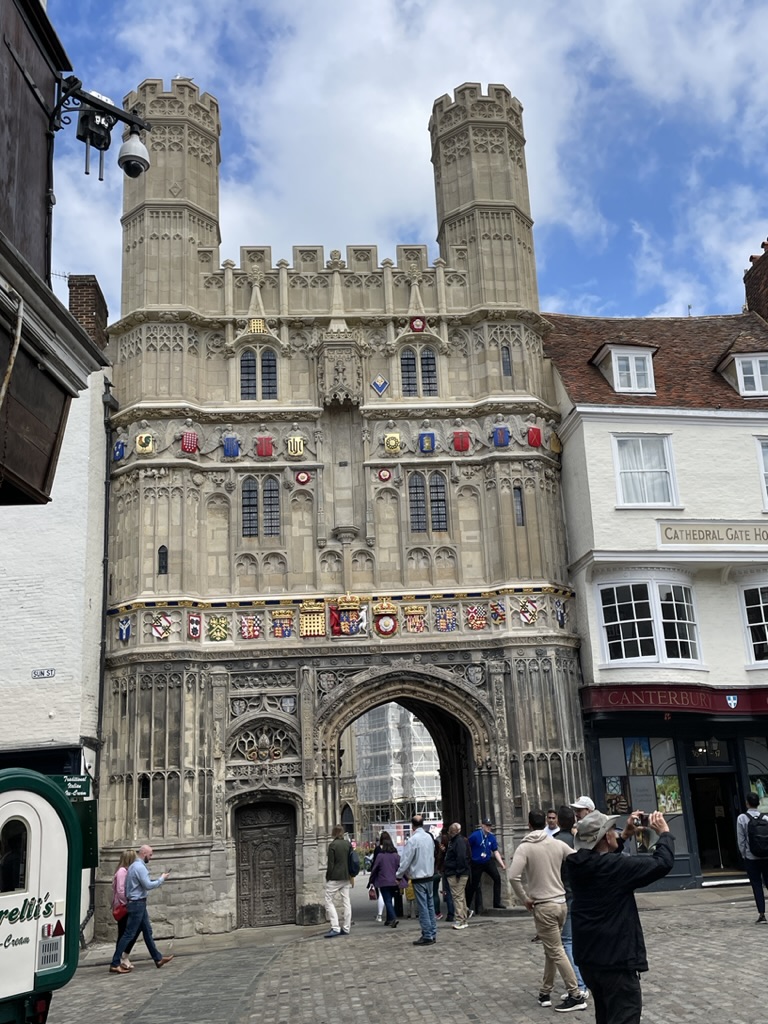
This entrance was erected by Henry VIII in remembrance of his older brother, Arthur, who was supposed to be the next king but died of the “sweating sickness”.
We were served a surprisingly good lunch of bangers and mash.
After lunch we took a few photos before we were greeted at the door:
We were then ushered into the Cathedral, given a brief introduction and welcome, and instructed to go forth and take pictures.
We also got a few shots of marvelous stained glass. Obviously the colors aren’t as bright and vivid in the photographs as they are in reality, but you get the idea.
We had some time left before we were to meet the group and return to the bus, so we wandered a bit – looking for a few gifts and getting lost (It was, after all, a medieval village). We arrived at the meeting point with enough time to adjust fluid levels before we returned to the bus and to the ship.
Along the way we did a drive-by of the Dover castle which is perched above the famous “white cliffs of Dover”. Not as famous as Leeds but important in its own right for its position and function to protect the coast from invasion – both in the last half of the 11th century and during WW II.
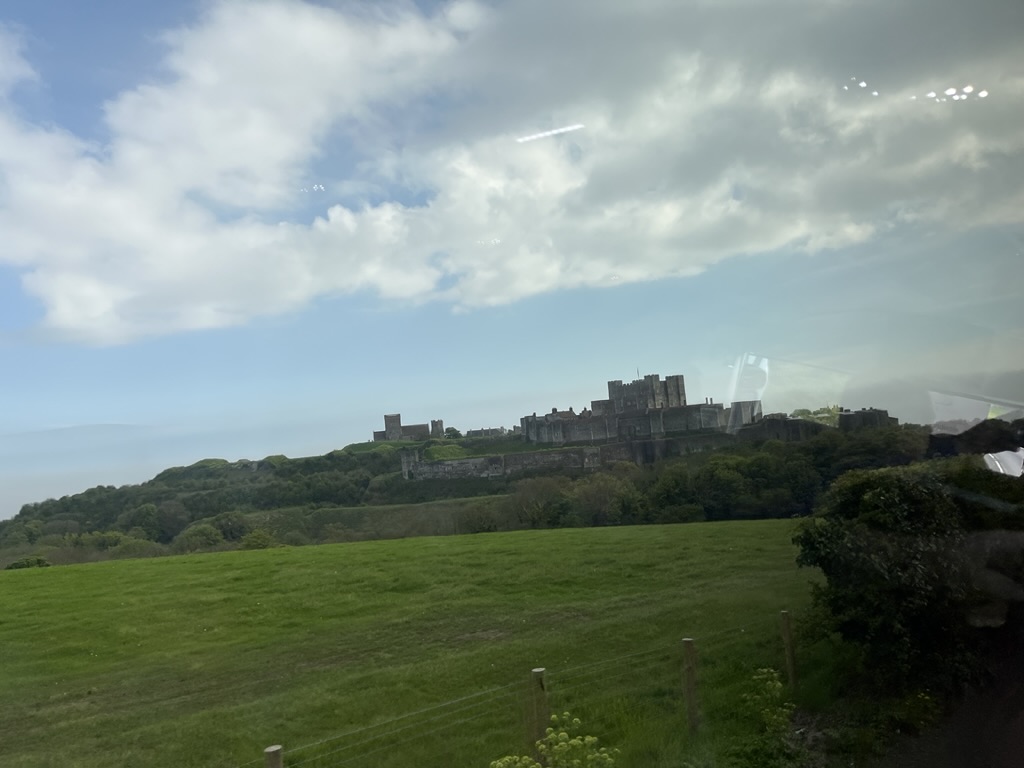
Back on the ship we worked for a bit, ate, and joined the BBB team for a farewell drink before returning to our stateroom to view the last Russell Lee lecture.
Then it was off to bed. Tomorrow is our last excursion in the morning and packing in the afternoon.
Sigh.
I leave you with this image of the setting sun peeking thru the fog bank on the English channel.

R
Cheryl’s Factoids:
- LEEDS CASTLE – during WWII the enemy bombers were destroying any important or historic buildings so at Leeds they drained the moat – the bombers were using the reflection of moonlight off rivers and moats to orient themselves. In WWII it also became a hospital for the wounded.
- CANTERBURY CATHEDRAL – In 597 King Ethelbert’s Queen Bertha (newly converted) built a small Christian church in Canterbury. Founded by St Augustine in 597 AD, and taking over 900 years to build, the original Canterbury Cathedral had Romanesque style rounded arches. In the 15th century there was a Gothic addition to the building using pointed arches which supported the roof better and allowed the arches to be much taller and impressive with more room available for windows. The Canterbury Cathedral has the largest collection of medieval stained glass in England, dating back to the 12th century. It was targeted by the Germans during WWII but largely escaped damage. This is a famous place of pilgrimage since on December 29, 1170, four of Henry II’s knights murdered Thomas Becket, the Archbishop of Canterbury, as he was praying in a side chapel. All across Europe he was acclaimed as a martyr and miracles starting happening. His tomb and relics became a focus for pilgrimage. He was sainted by the Pope and his body buried in the Cathedral. Canterbury Cathedral rapidly became one of the most important three or four European pilgrimage centers. His shrine, which was destroyed during Henry VIII’s Reformation, was of unparalleled splendor. The pilgrimage routes from London and Winchester to Canterbury can still be traced. (Chaucer’s “Canterbury Tales” of pilgrims, who journeyed to this shrine, form one important literary example of medieval pilgrimage.)
- Yesterday they erected a “jumbotron” in the Cathedral and over 400 people showed up to watch the coronation.
